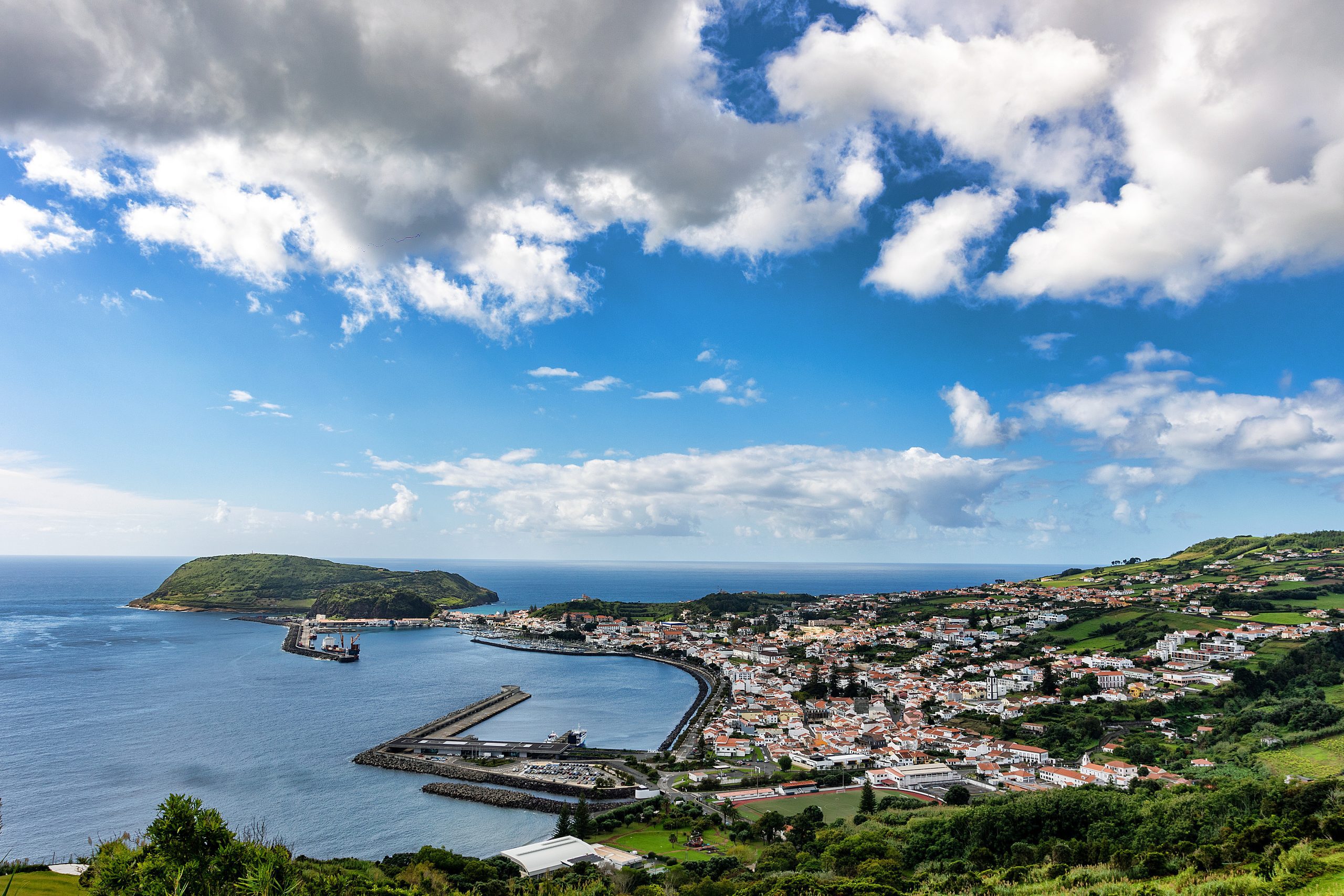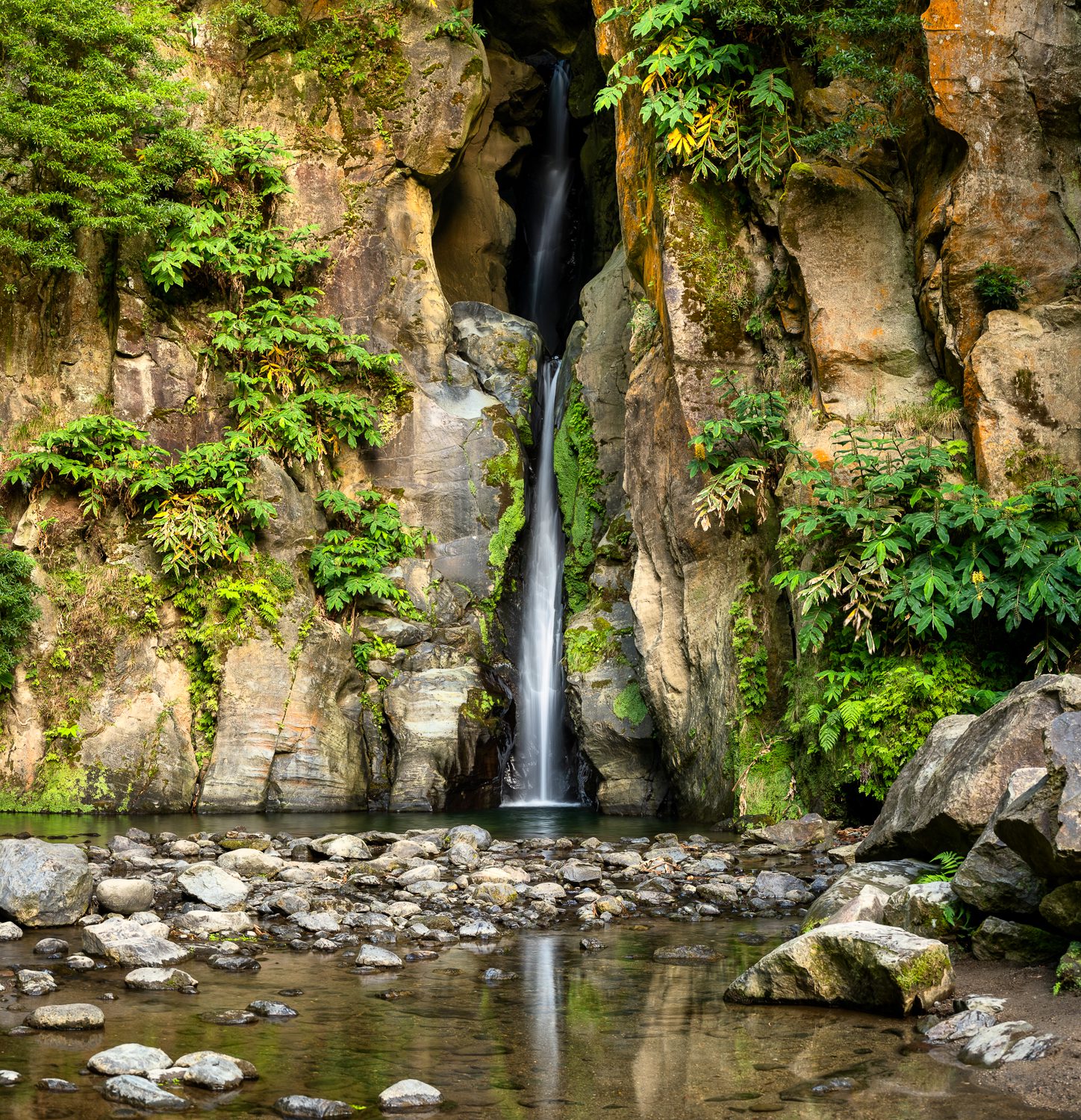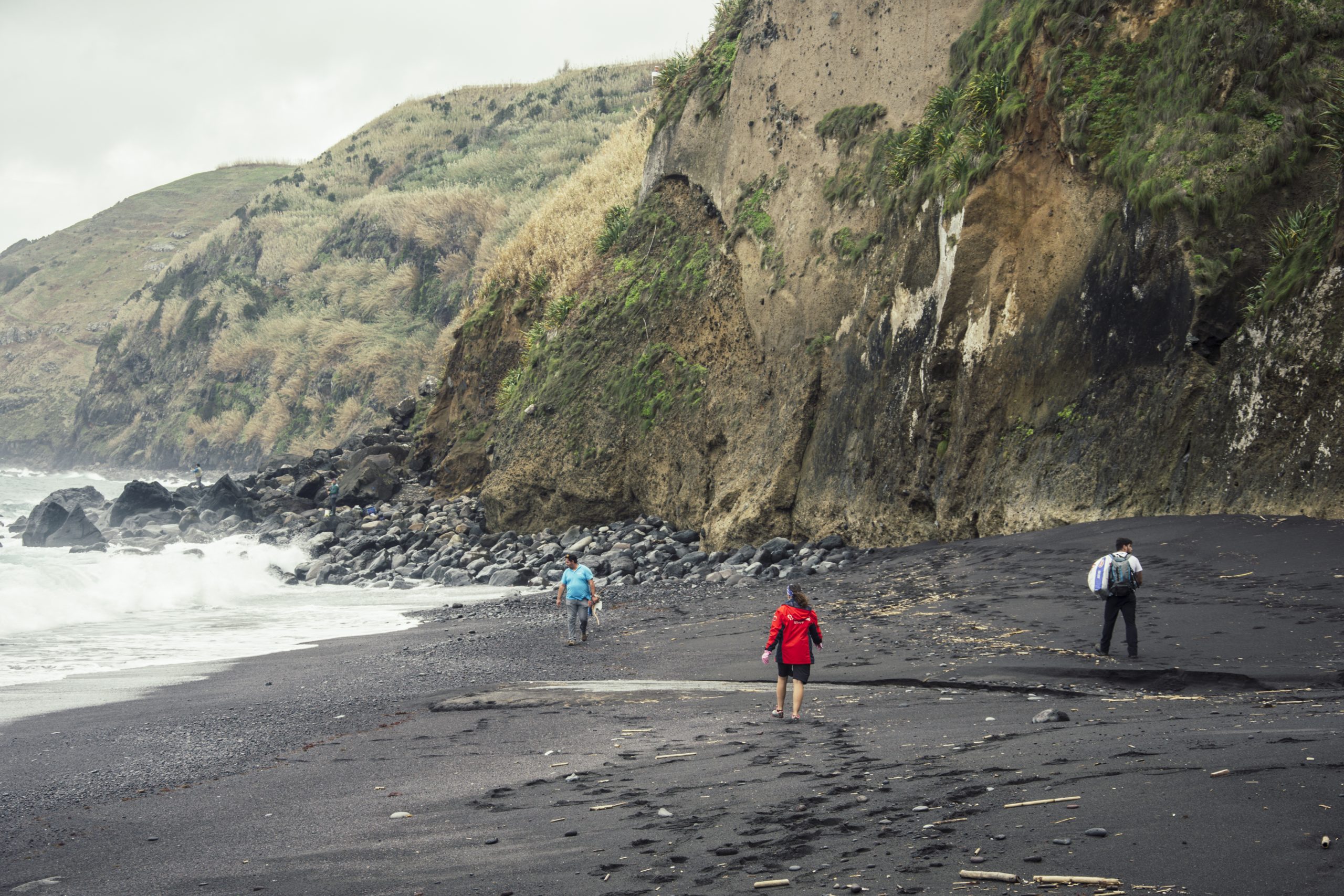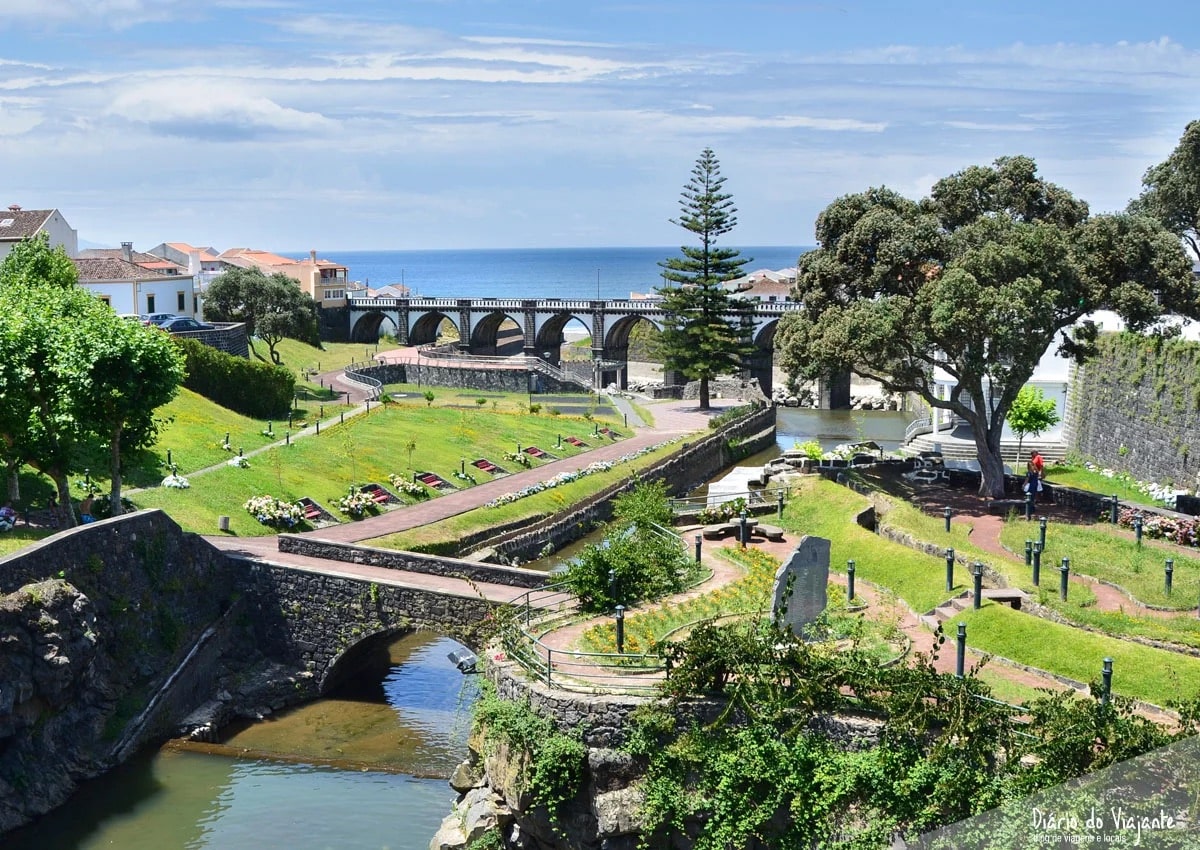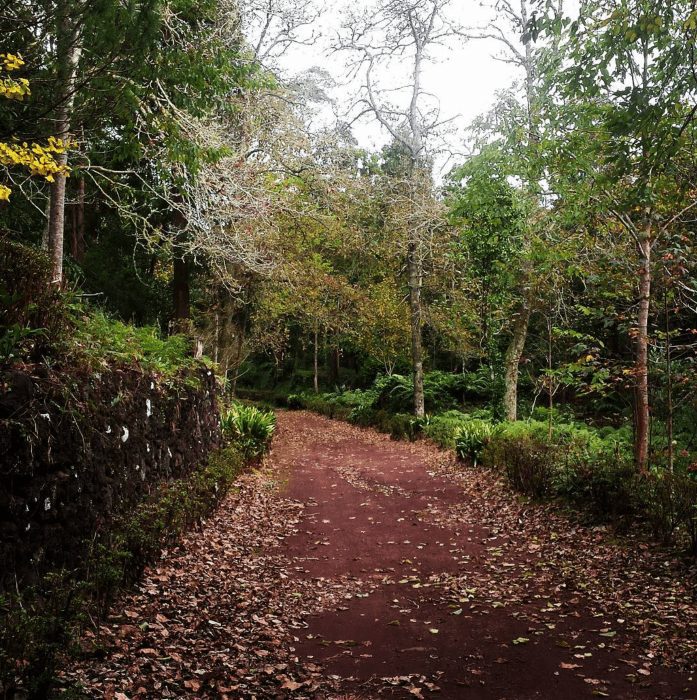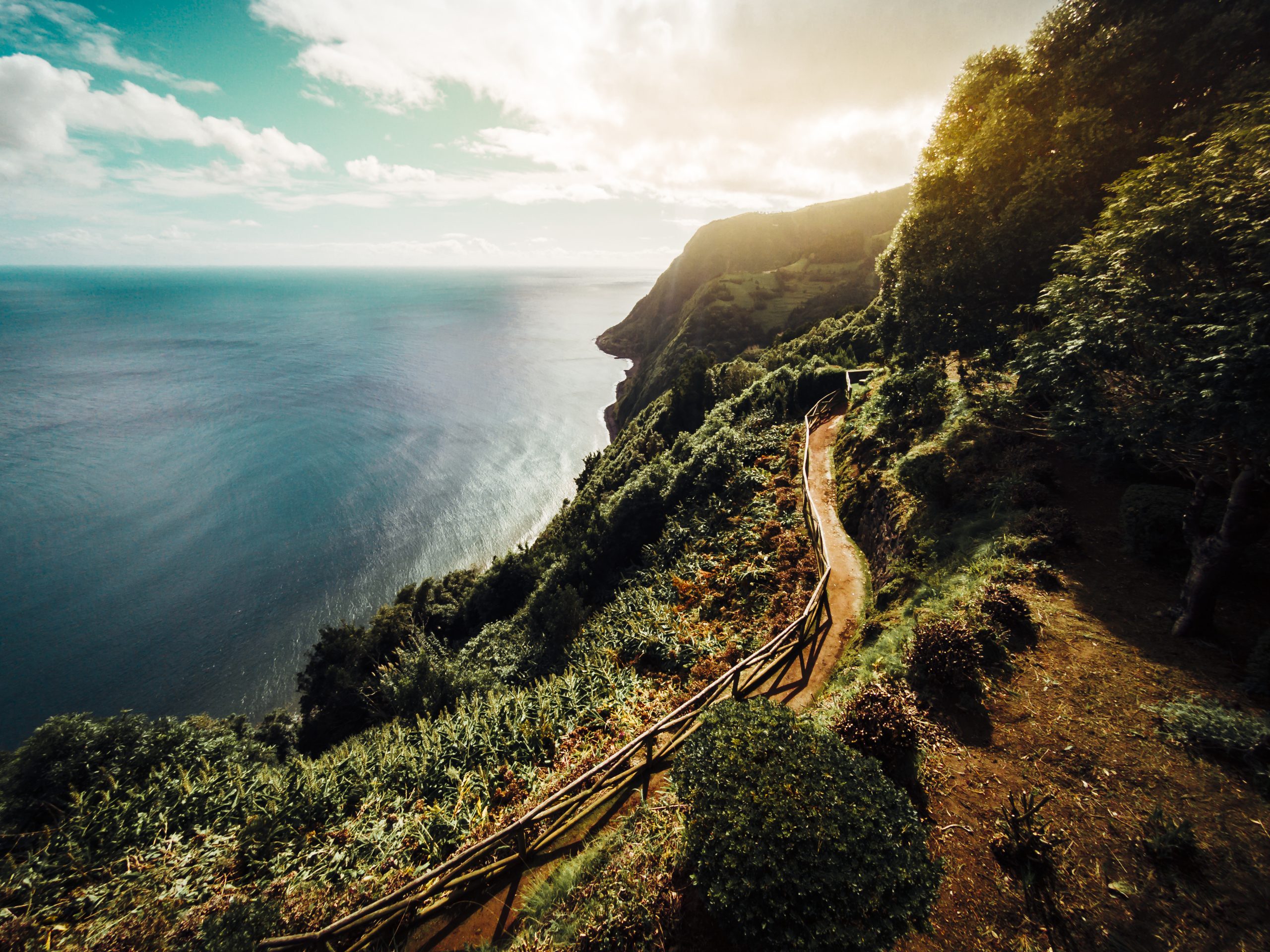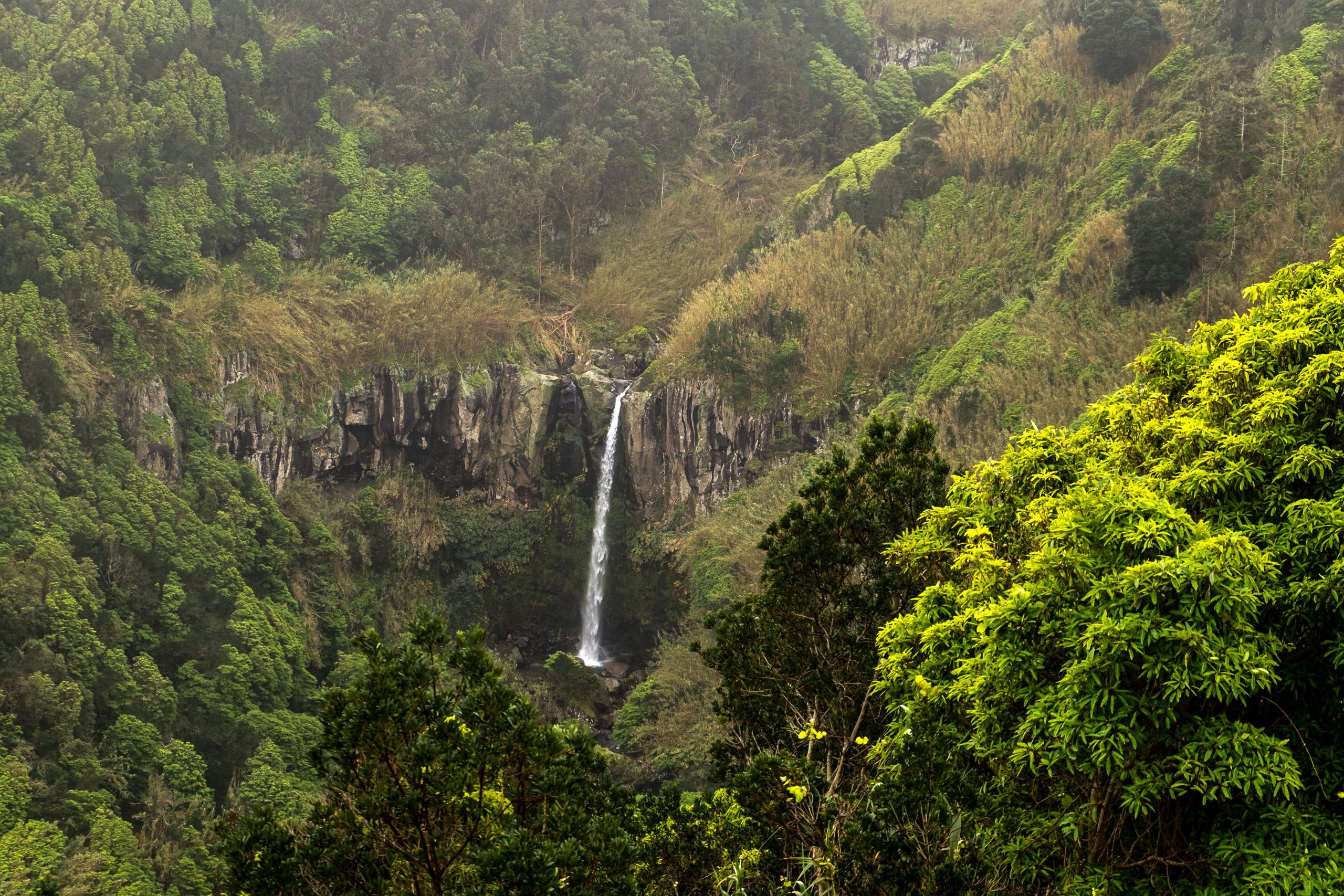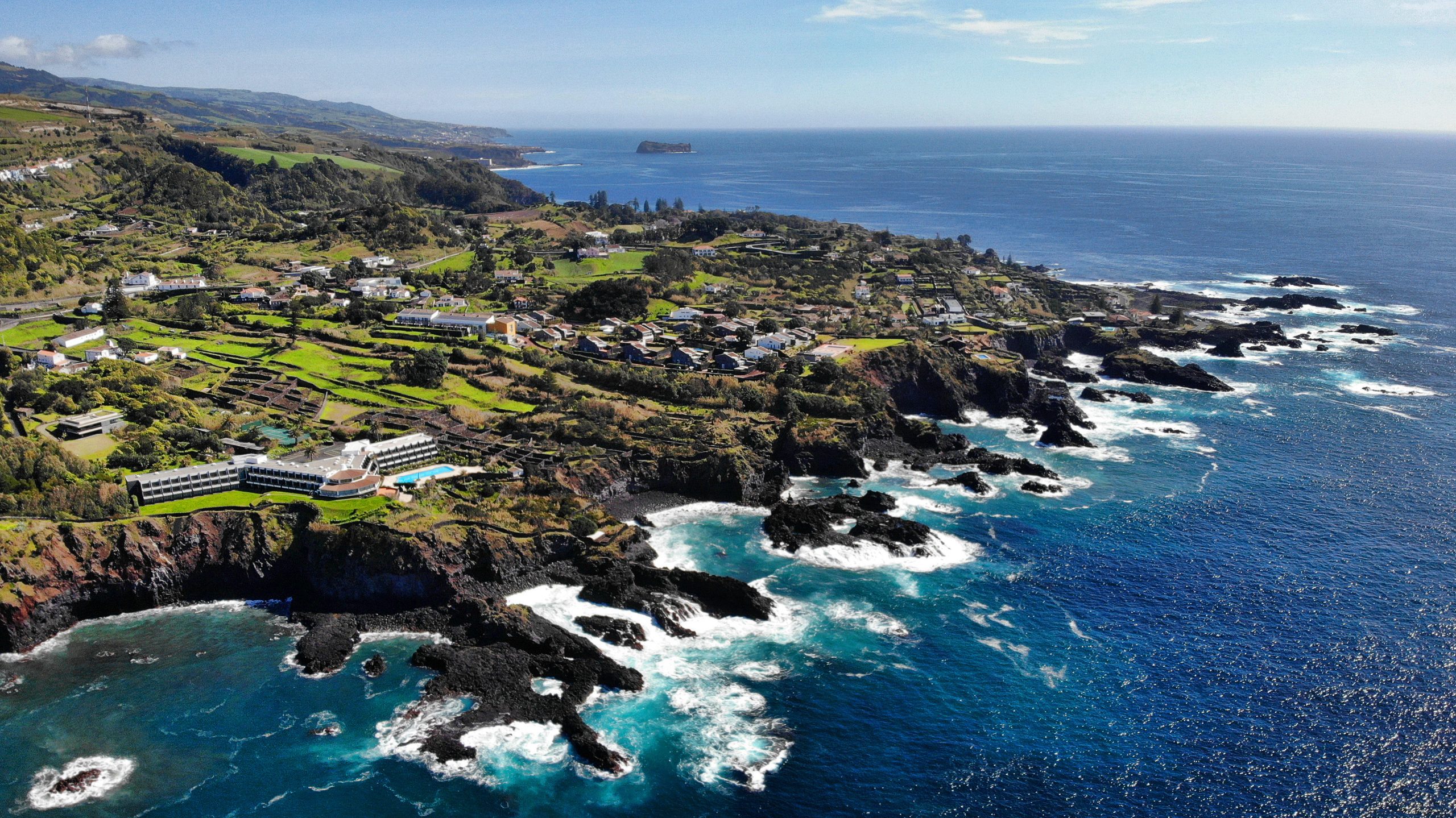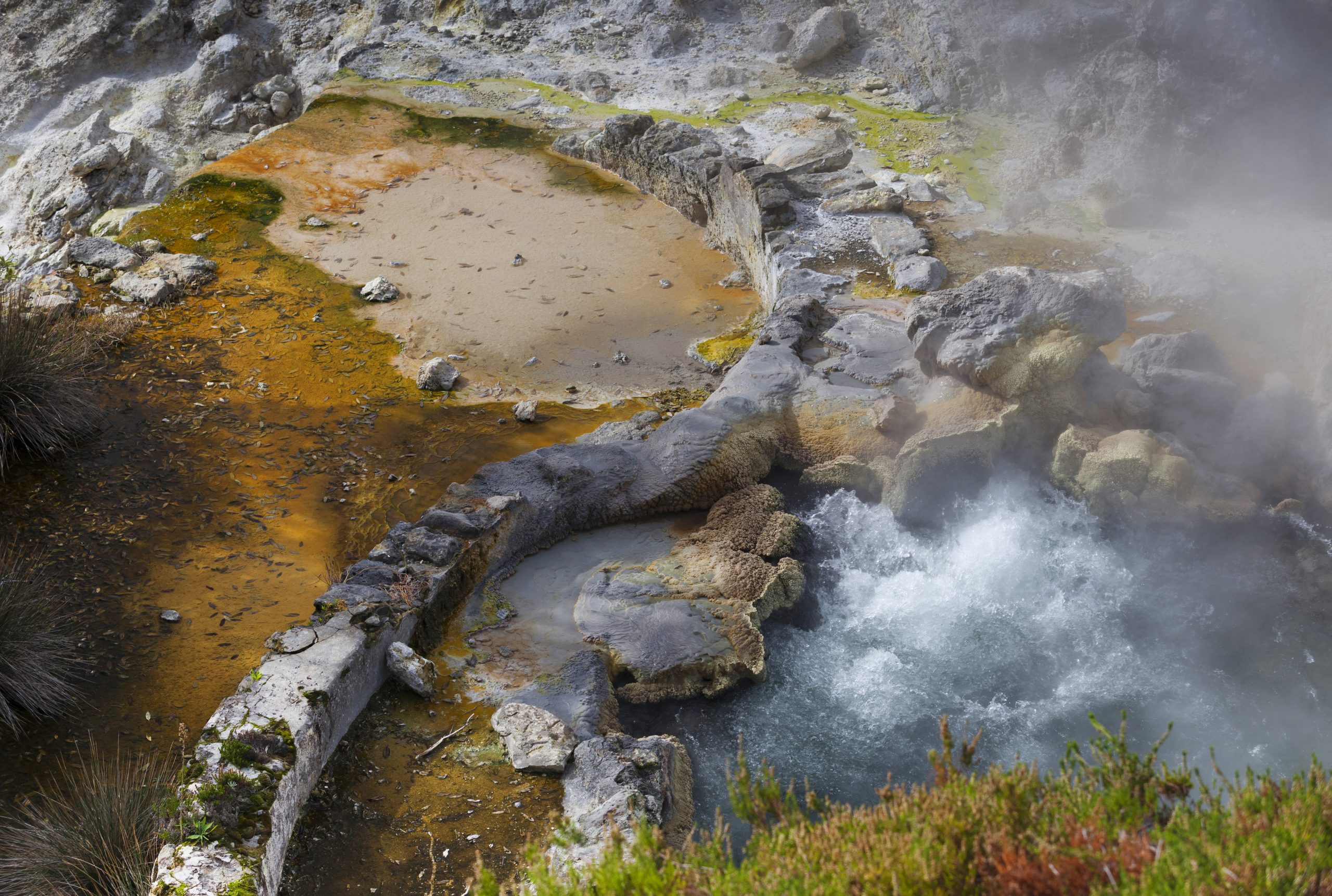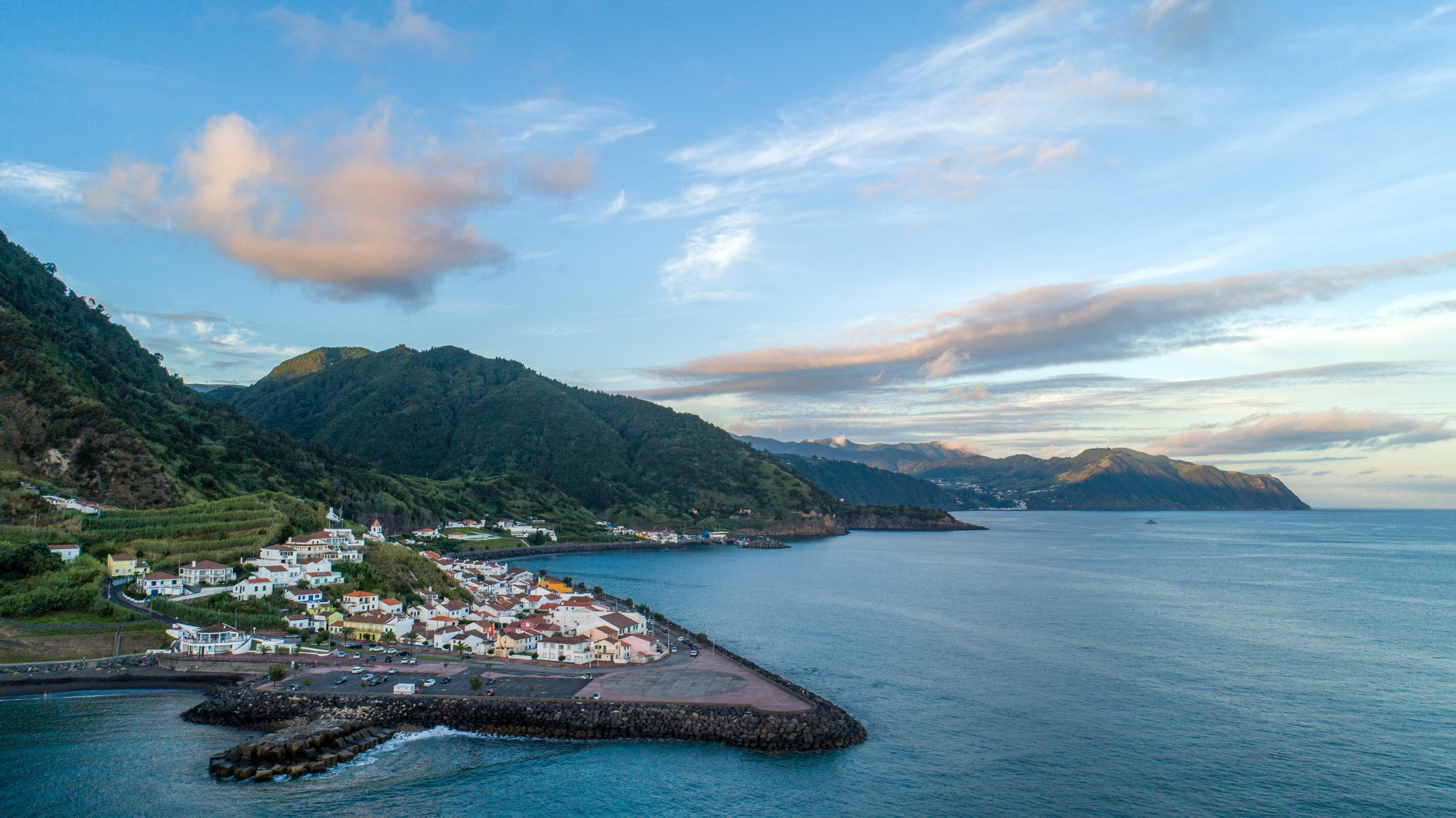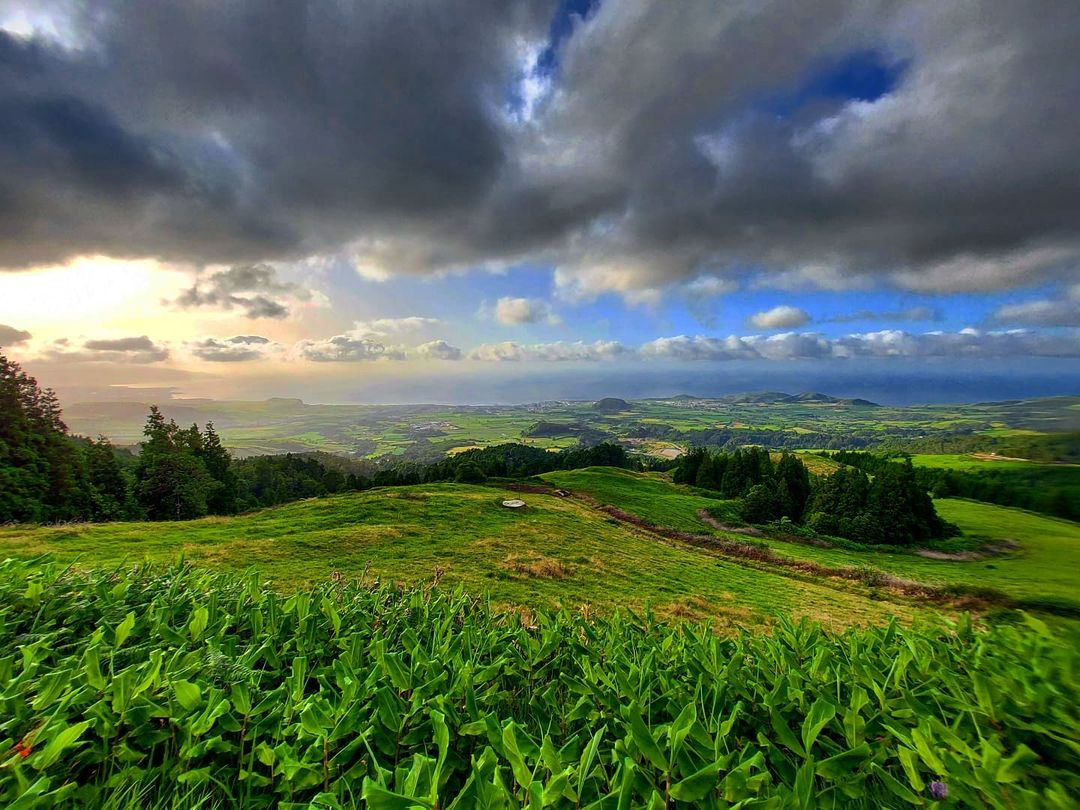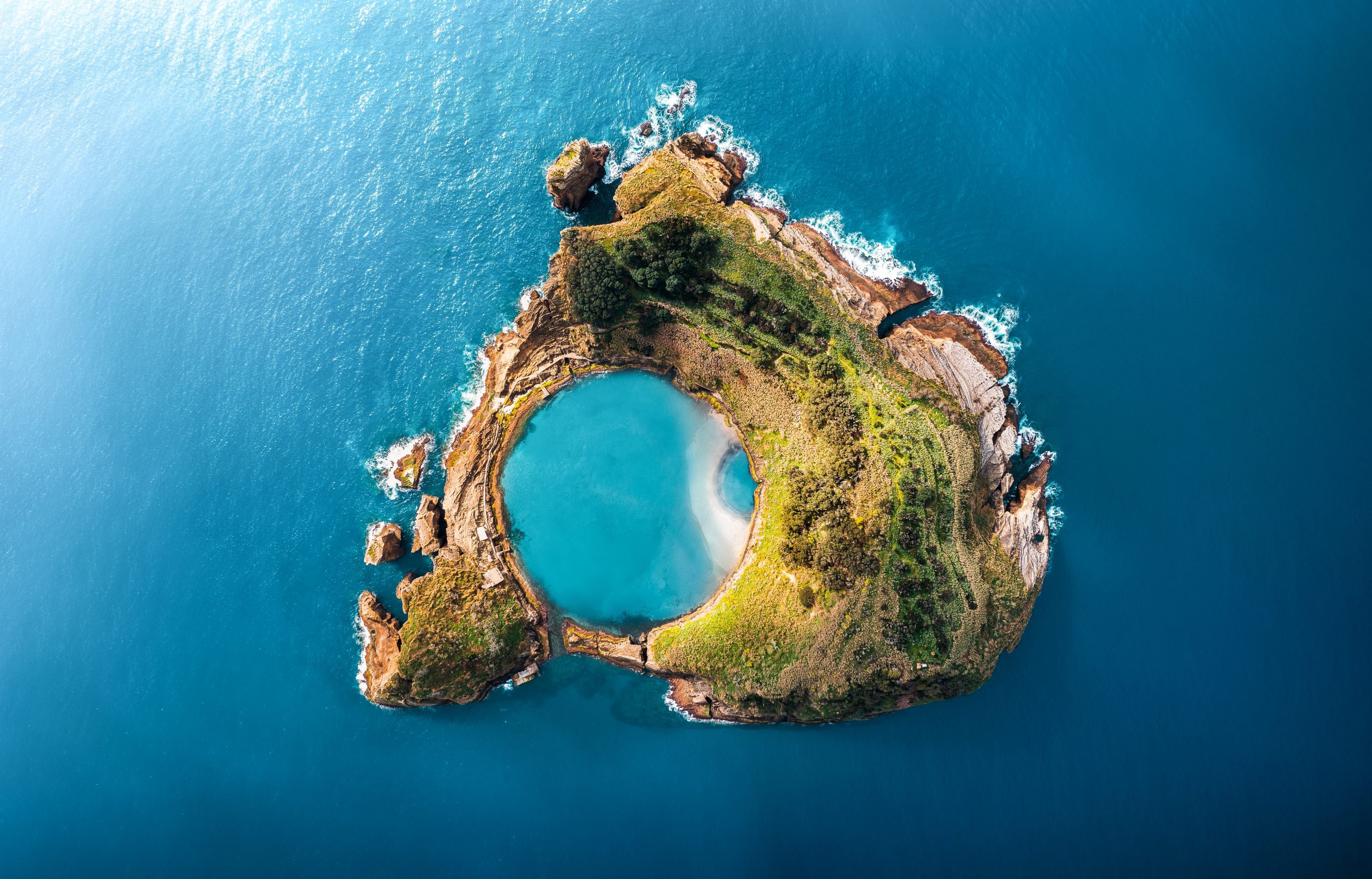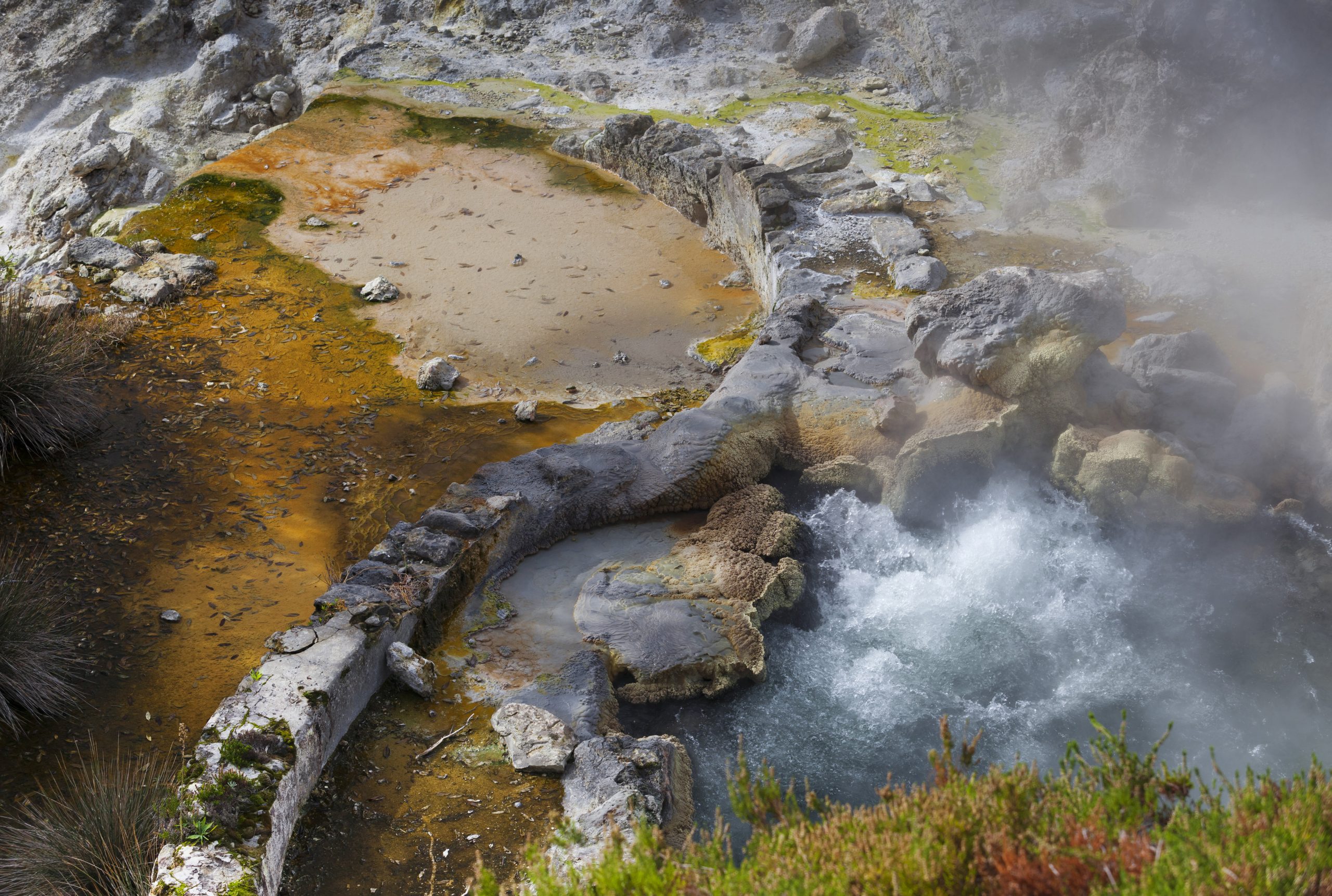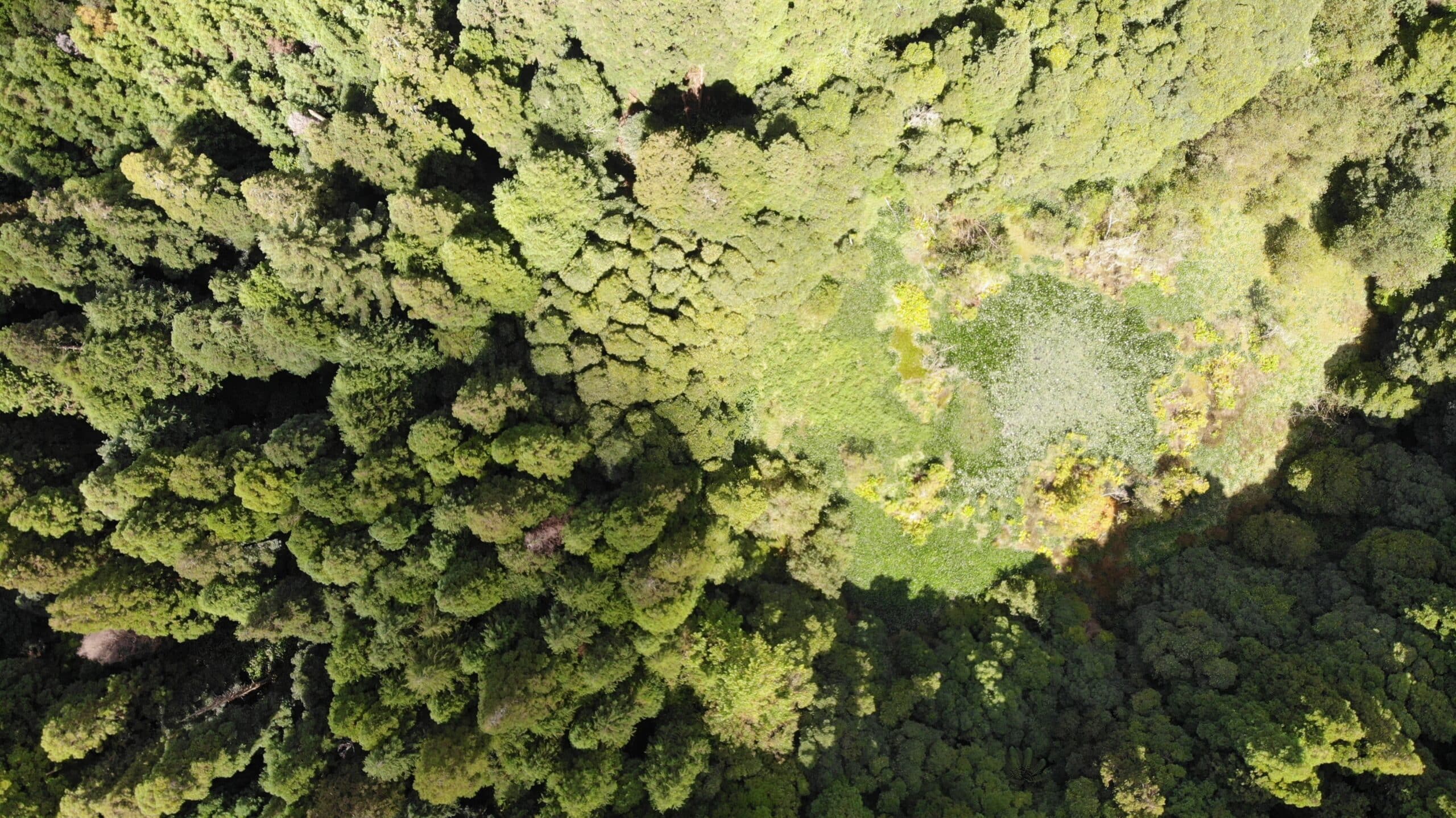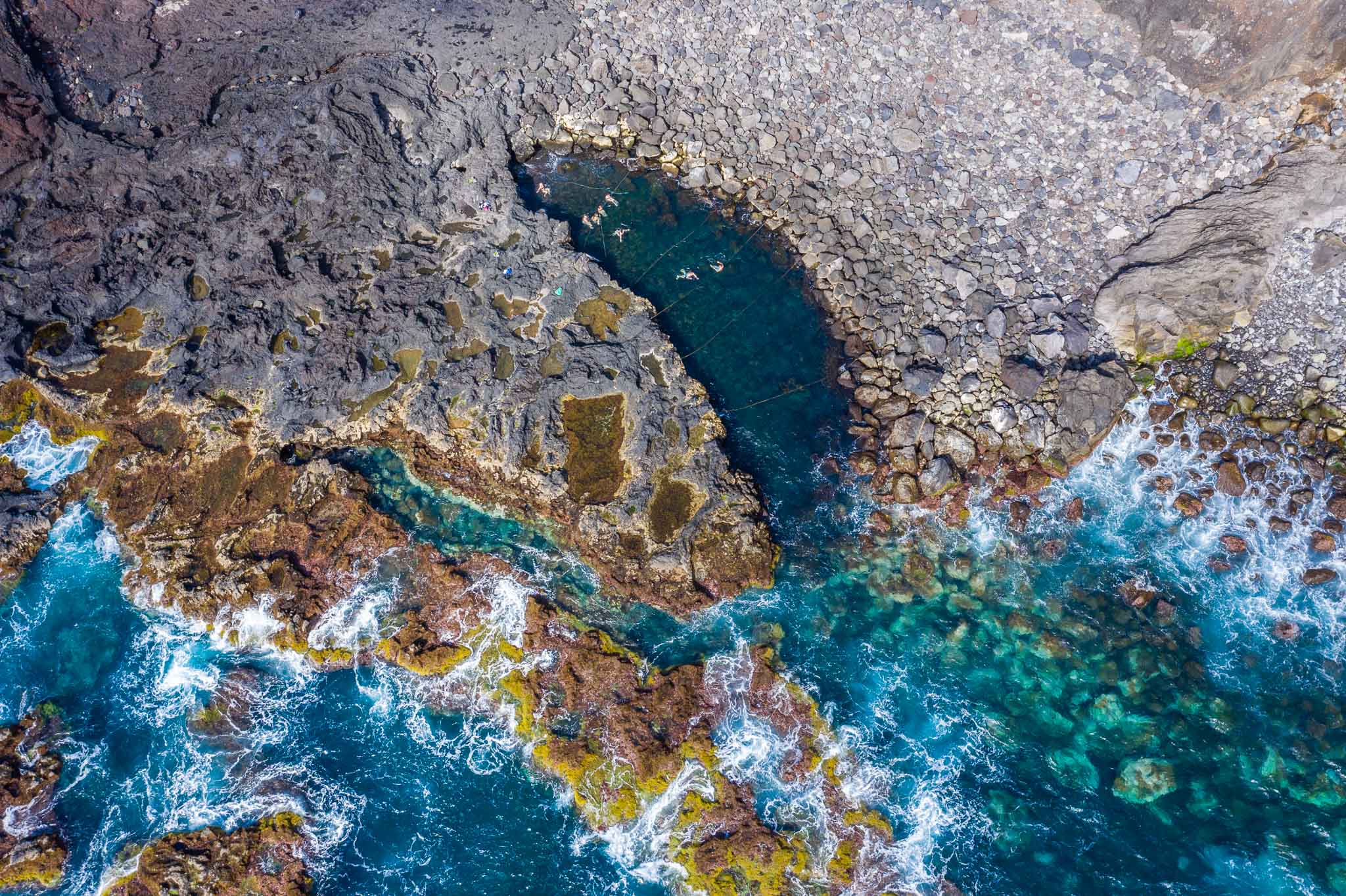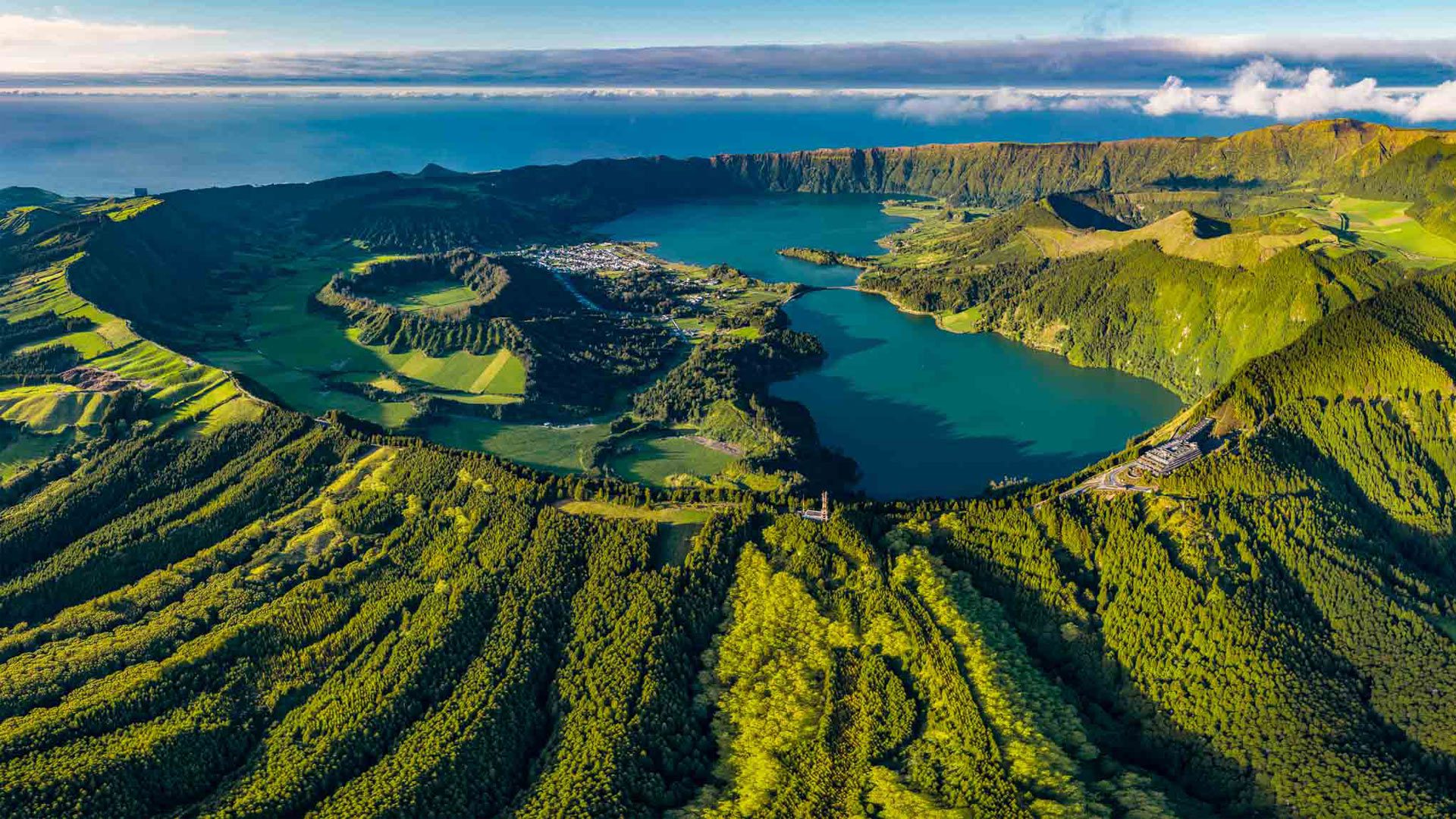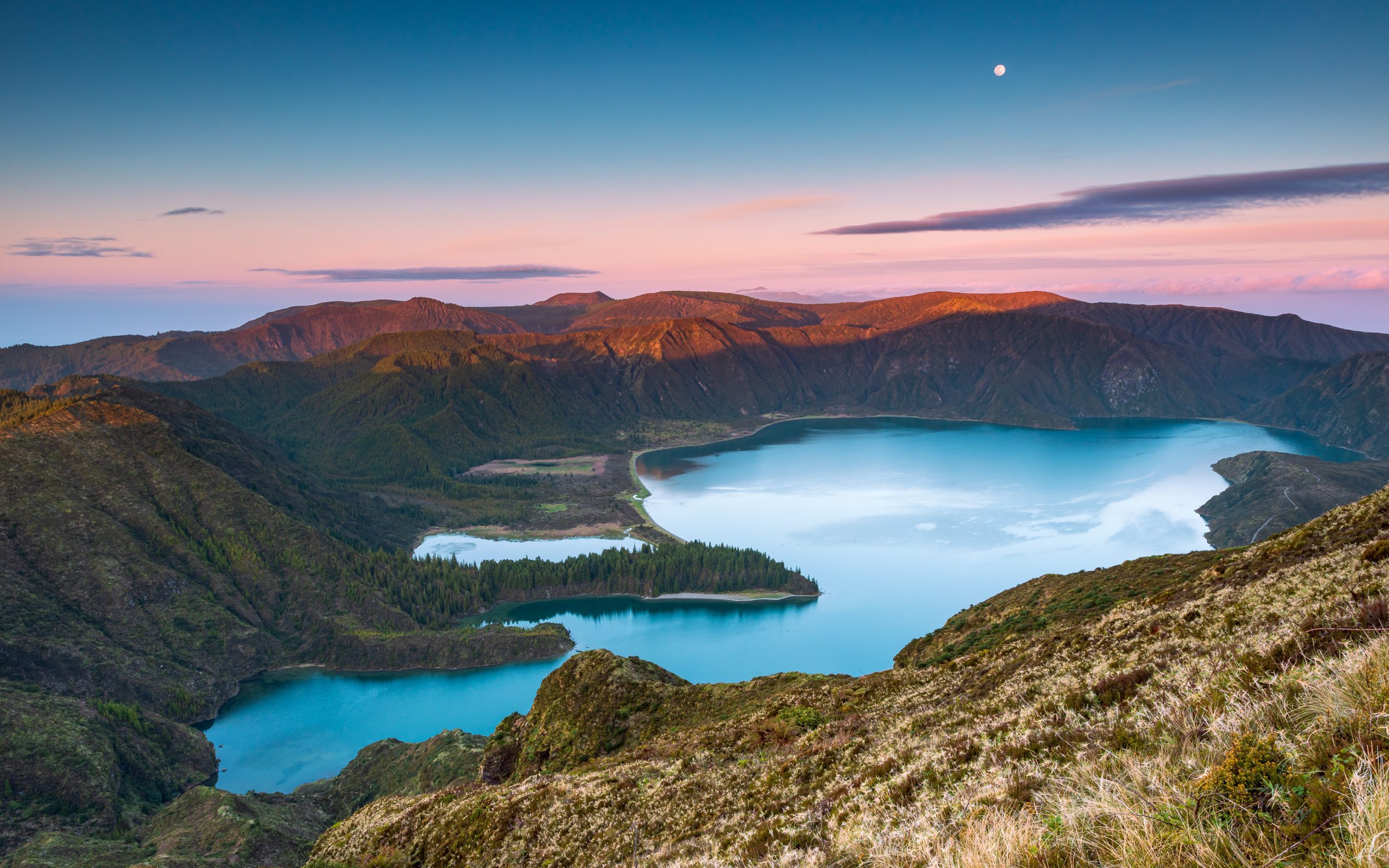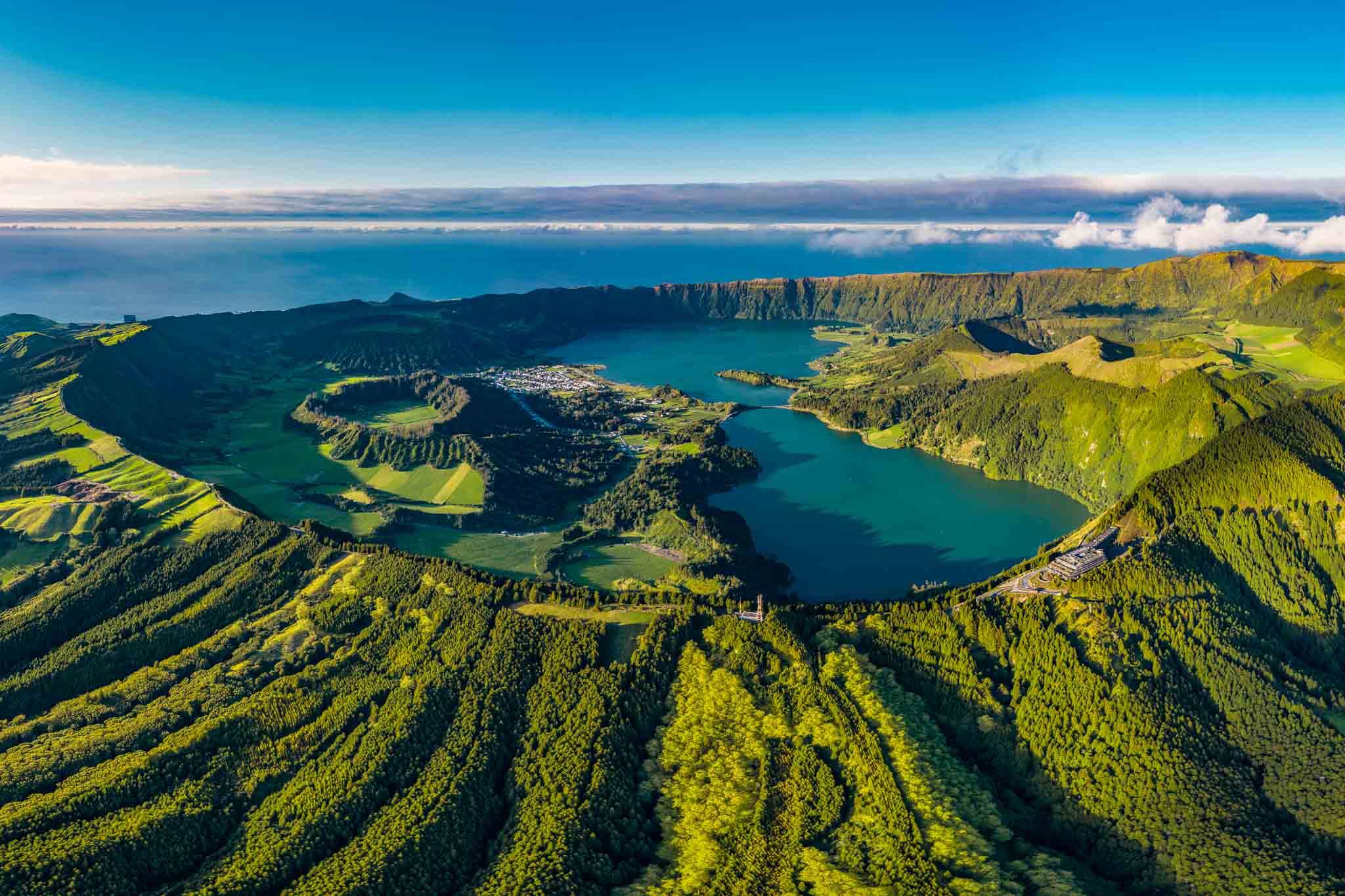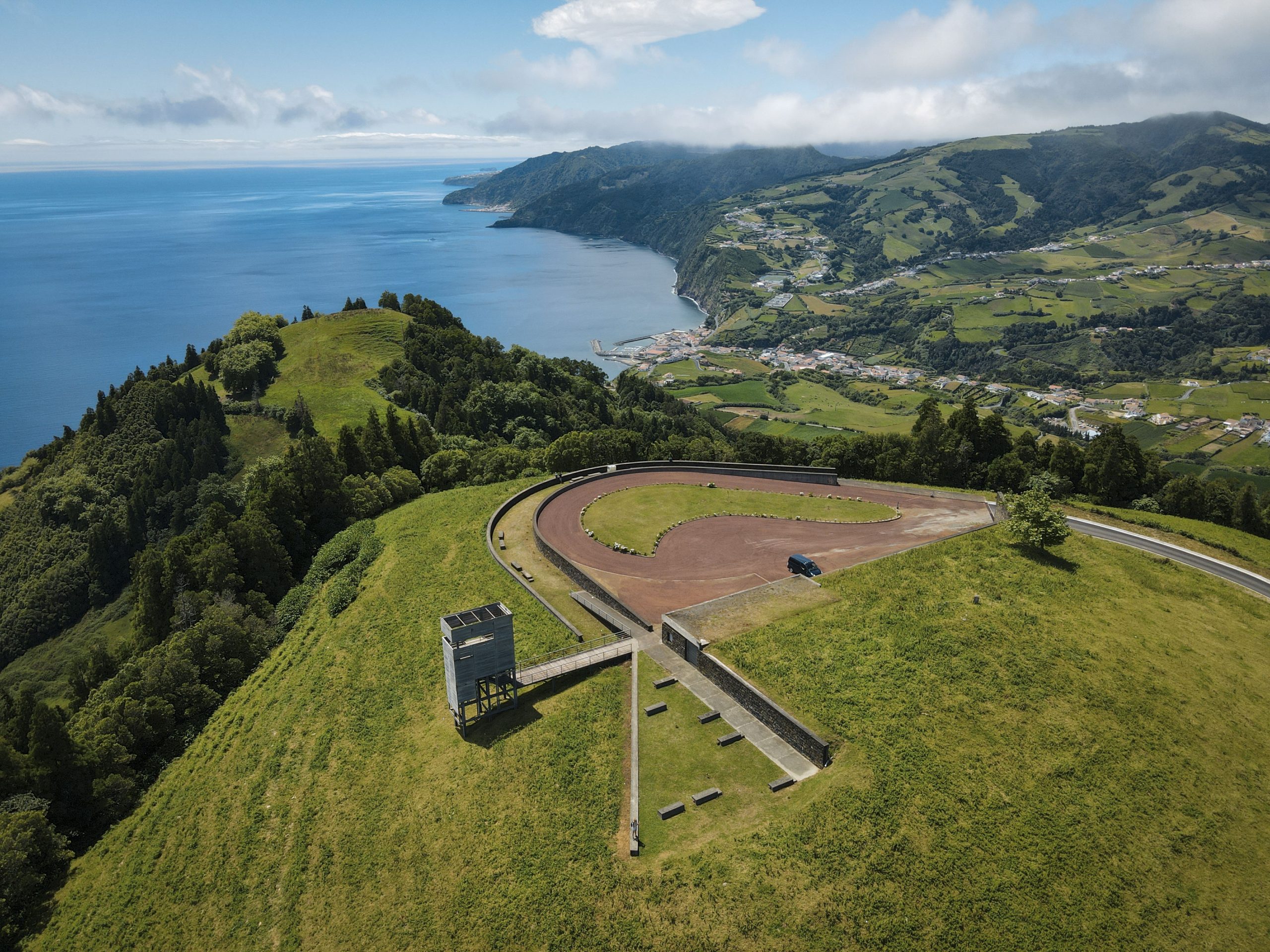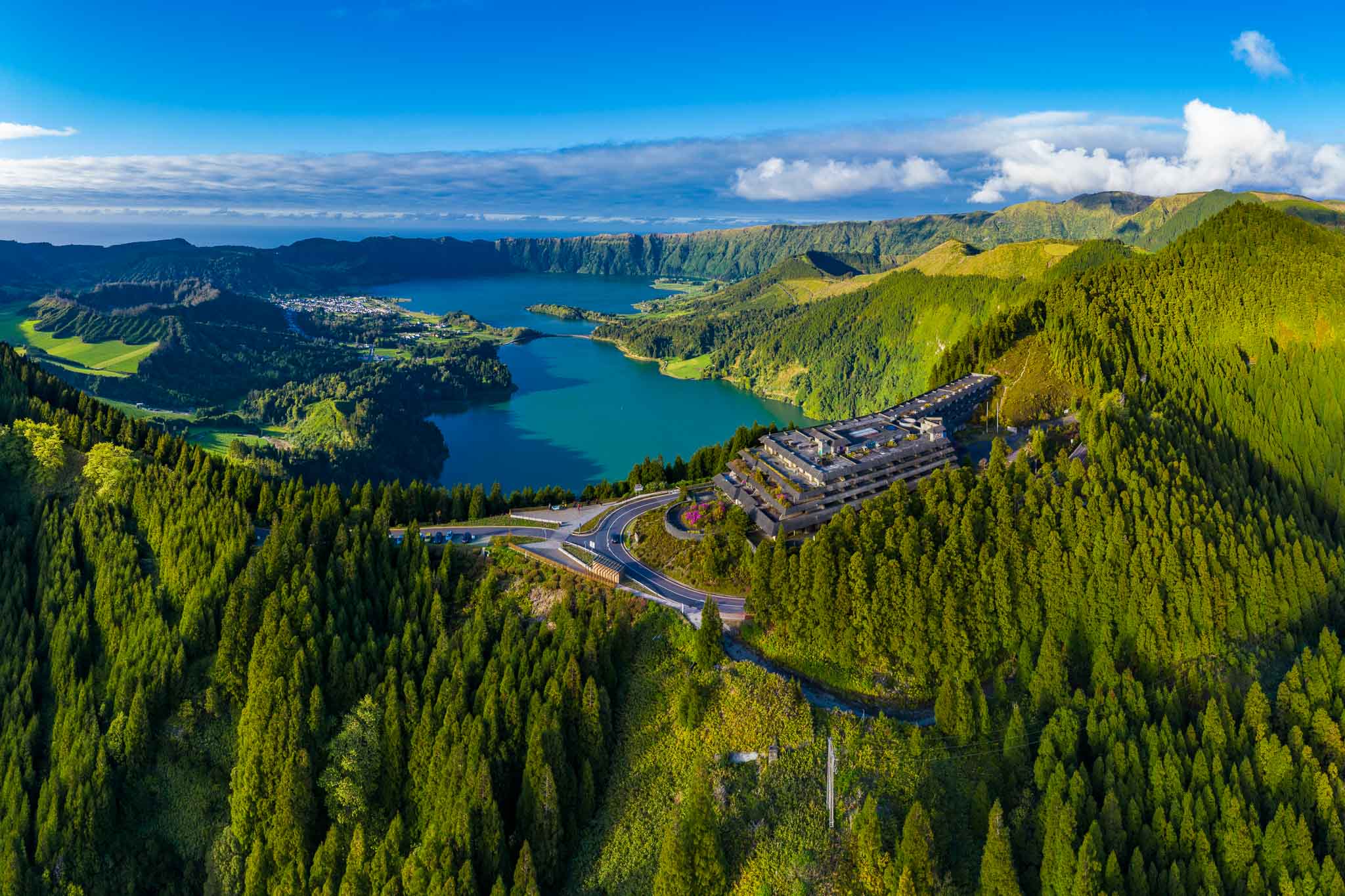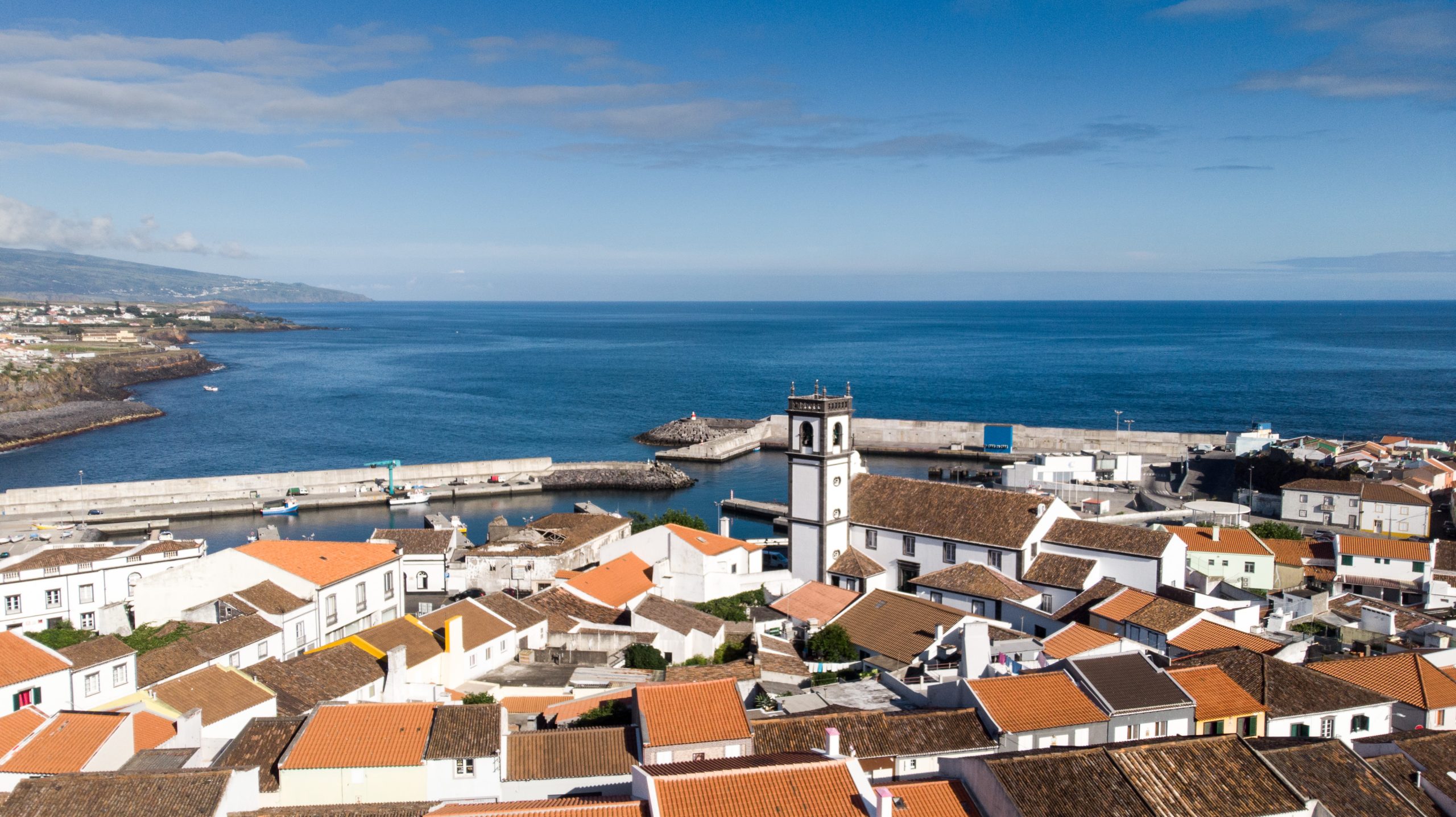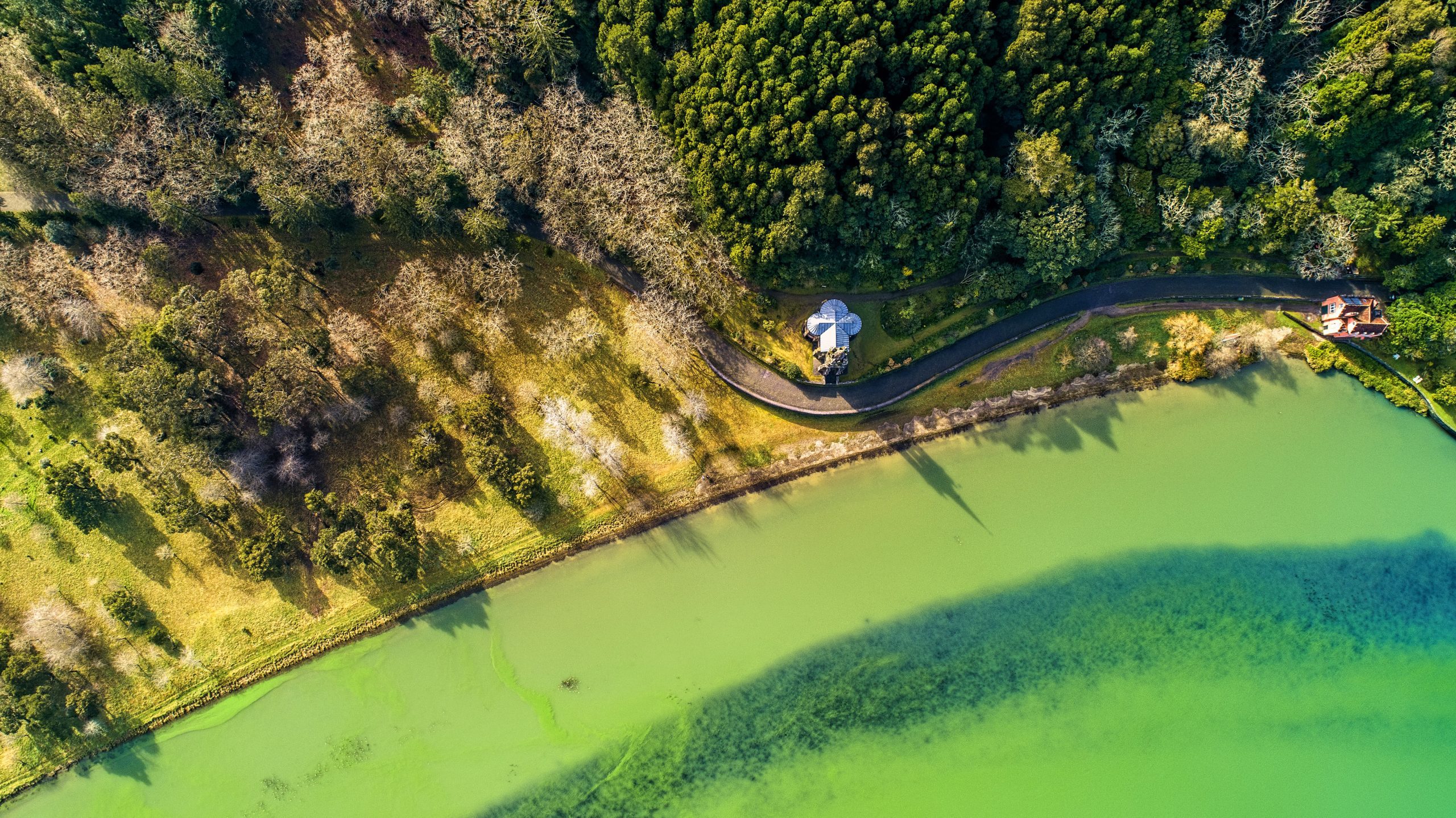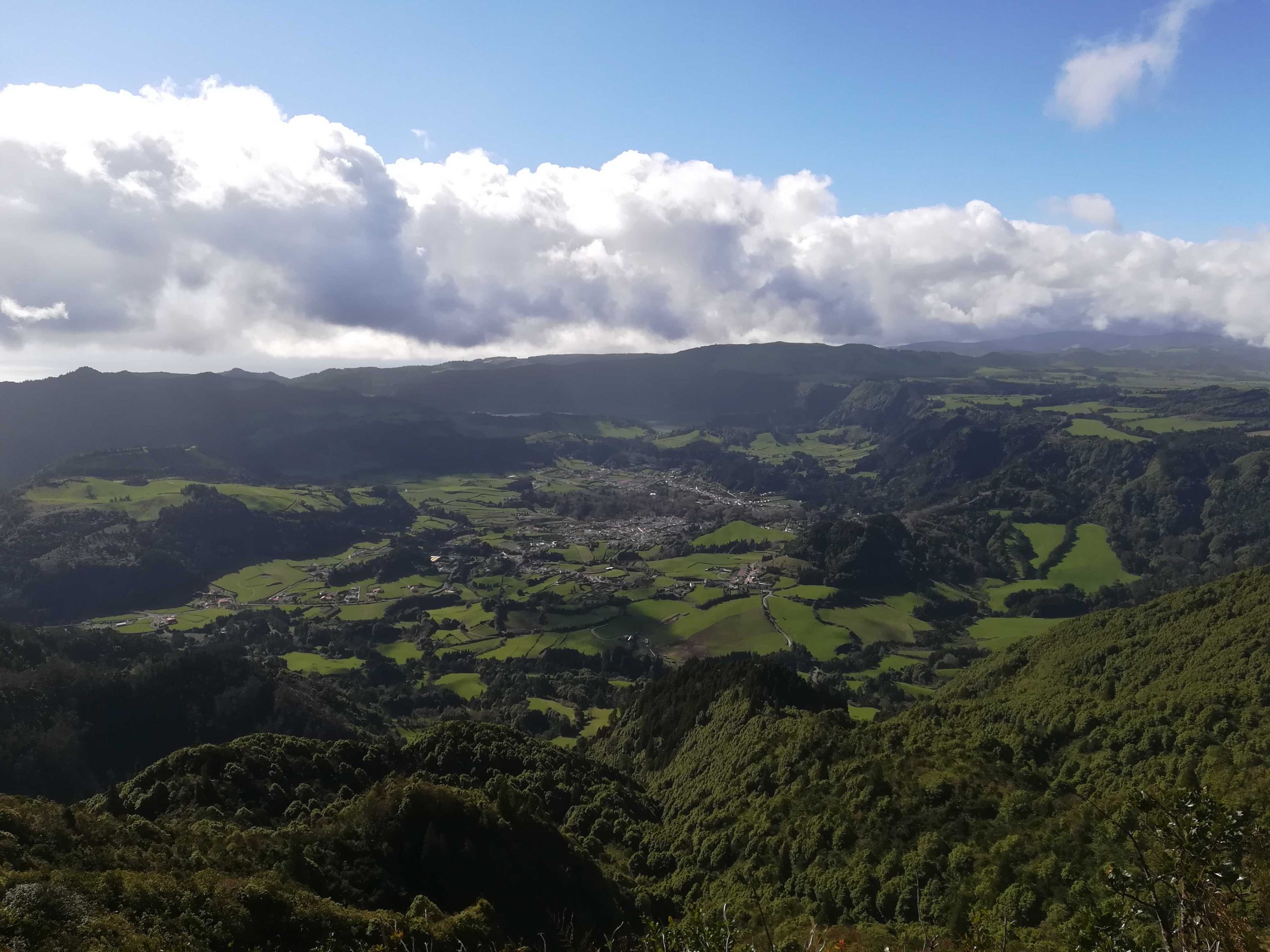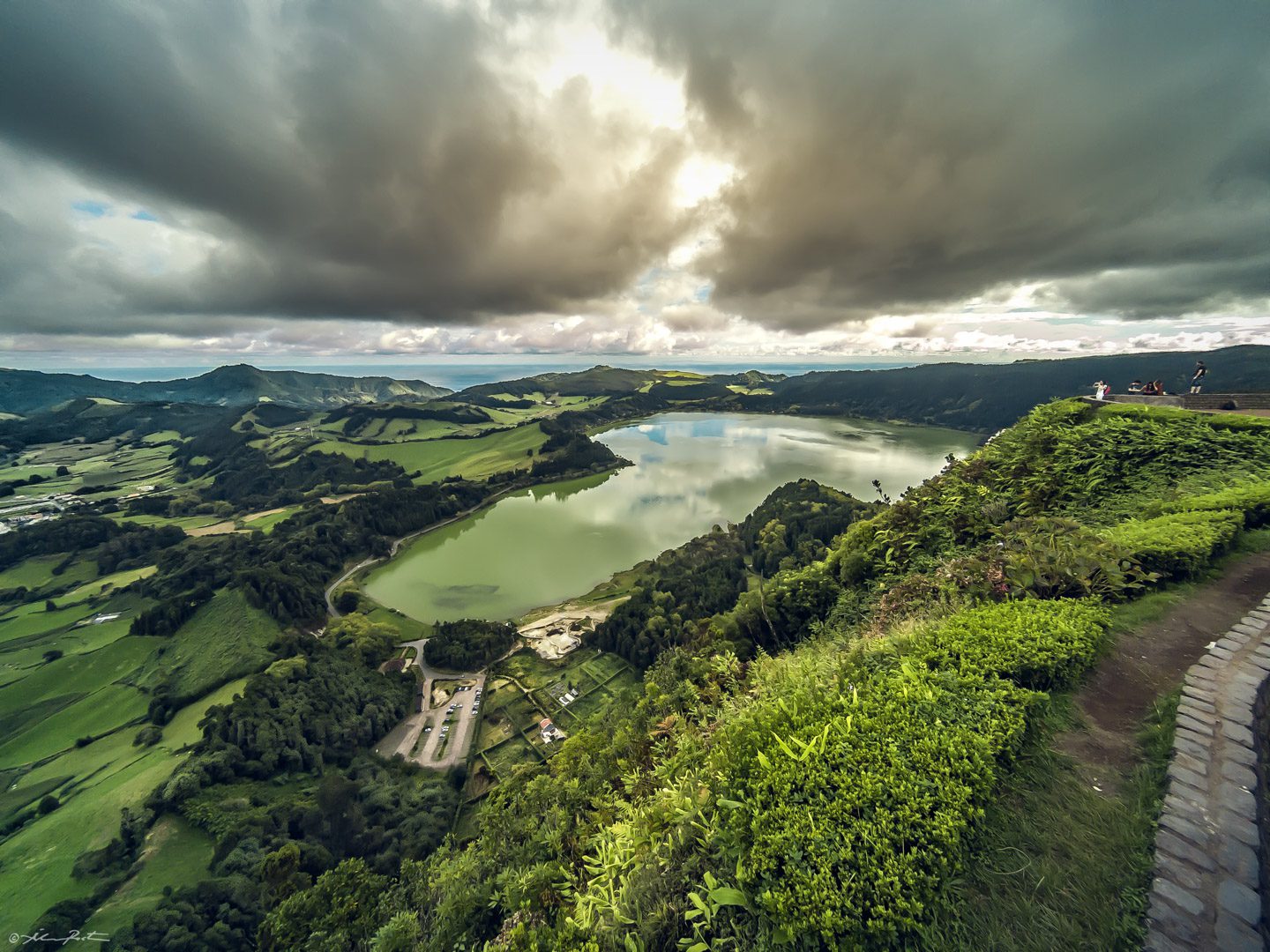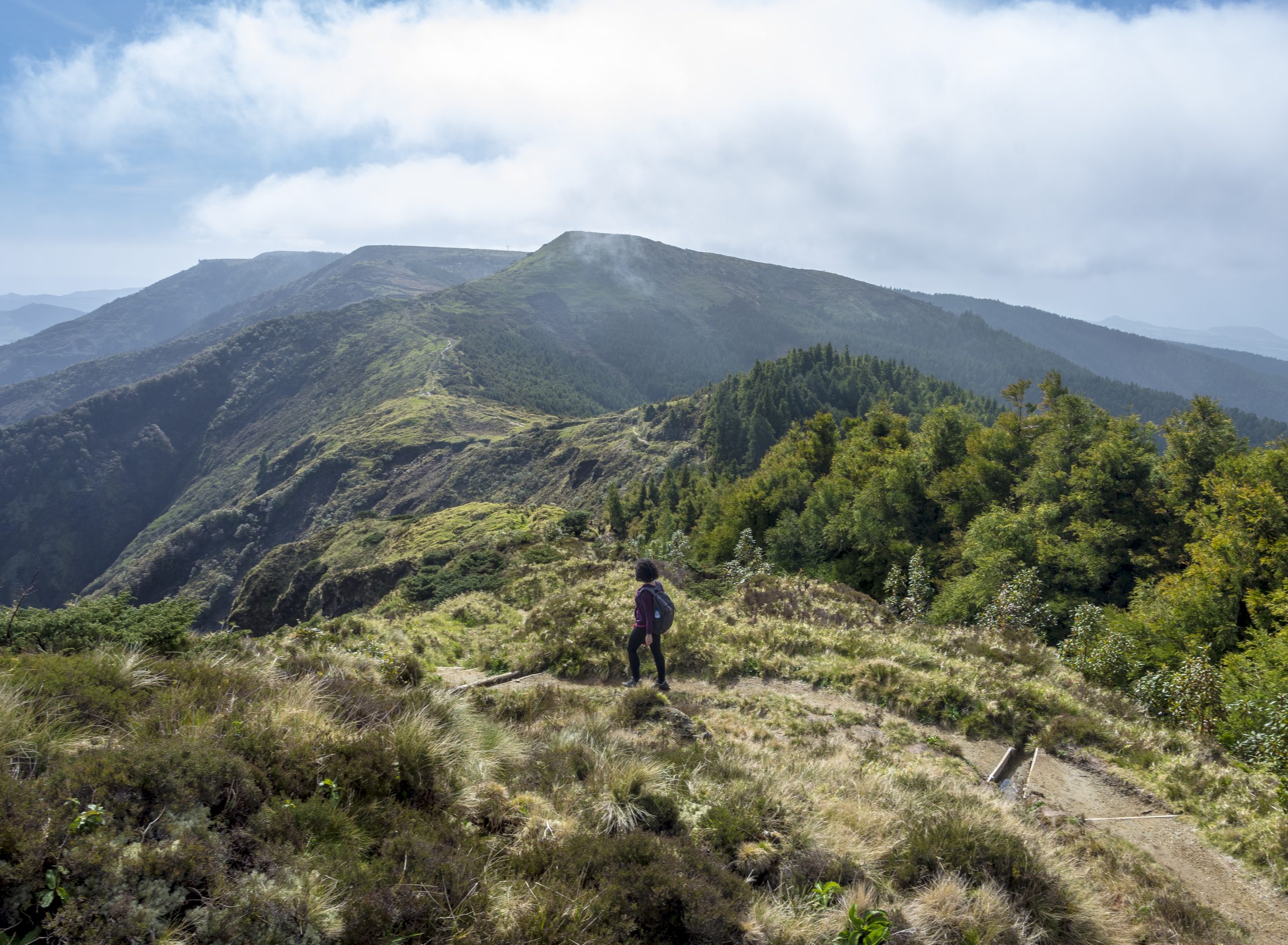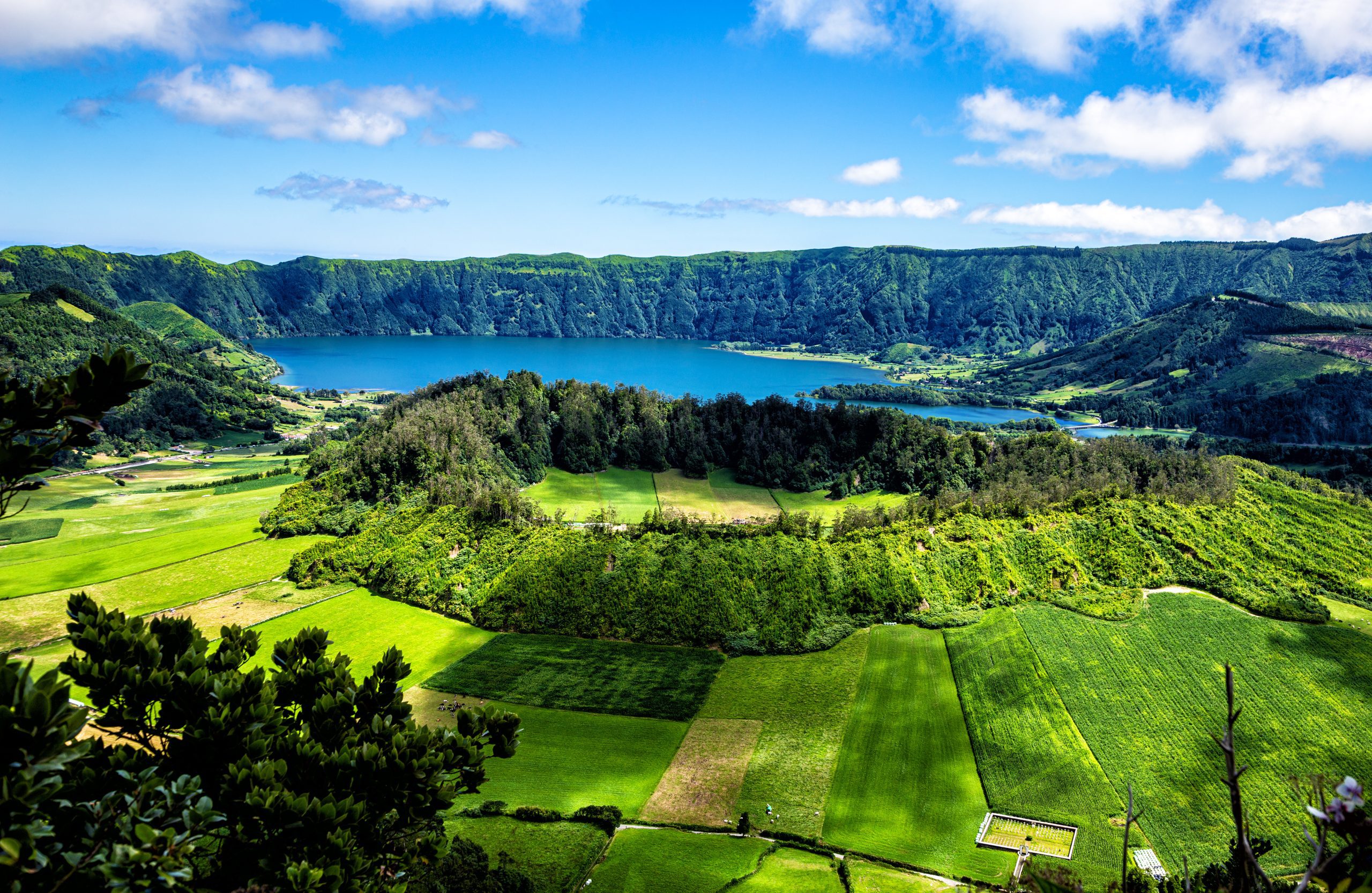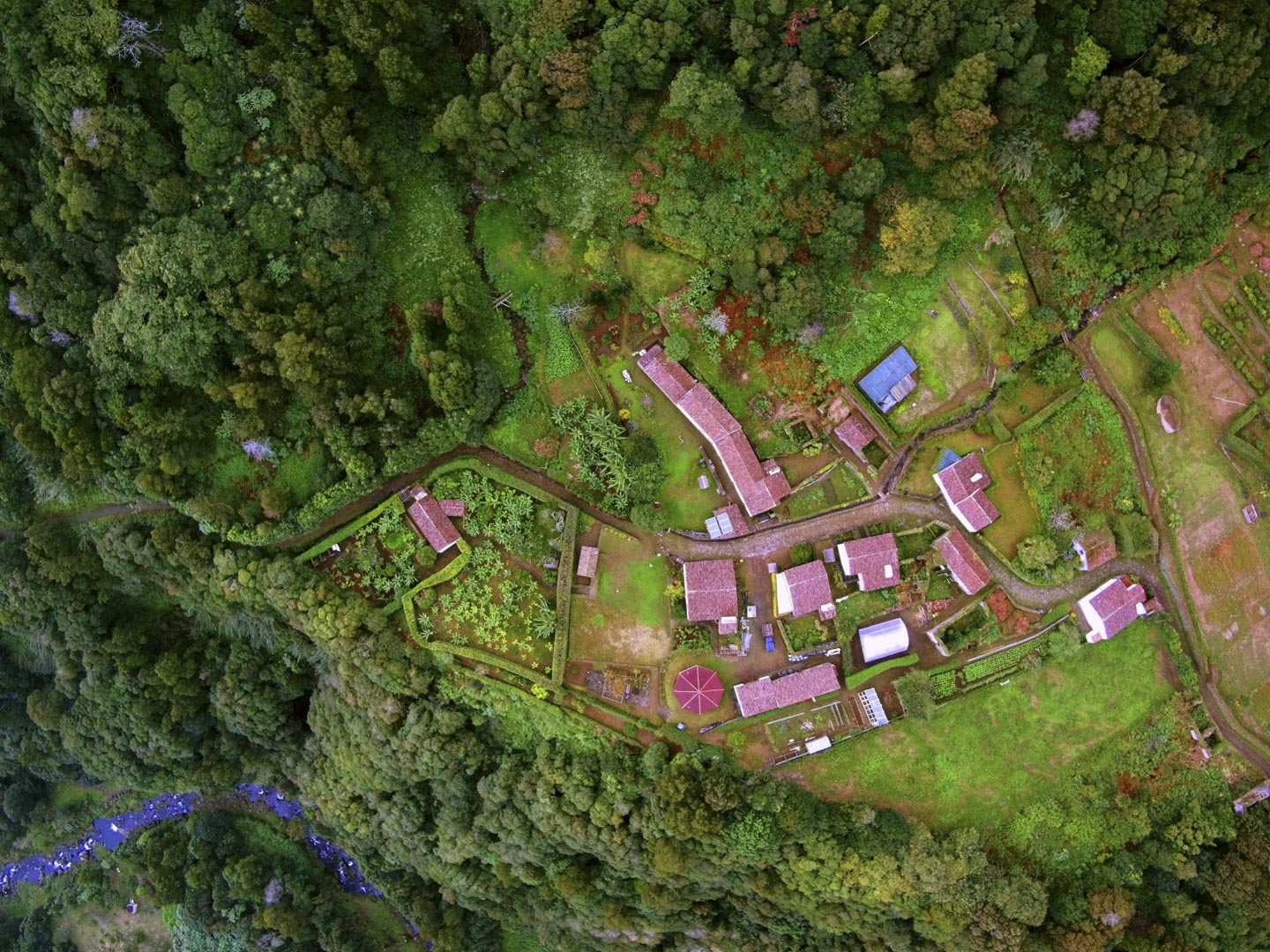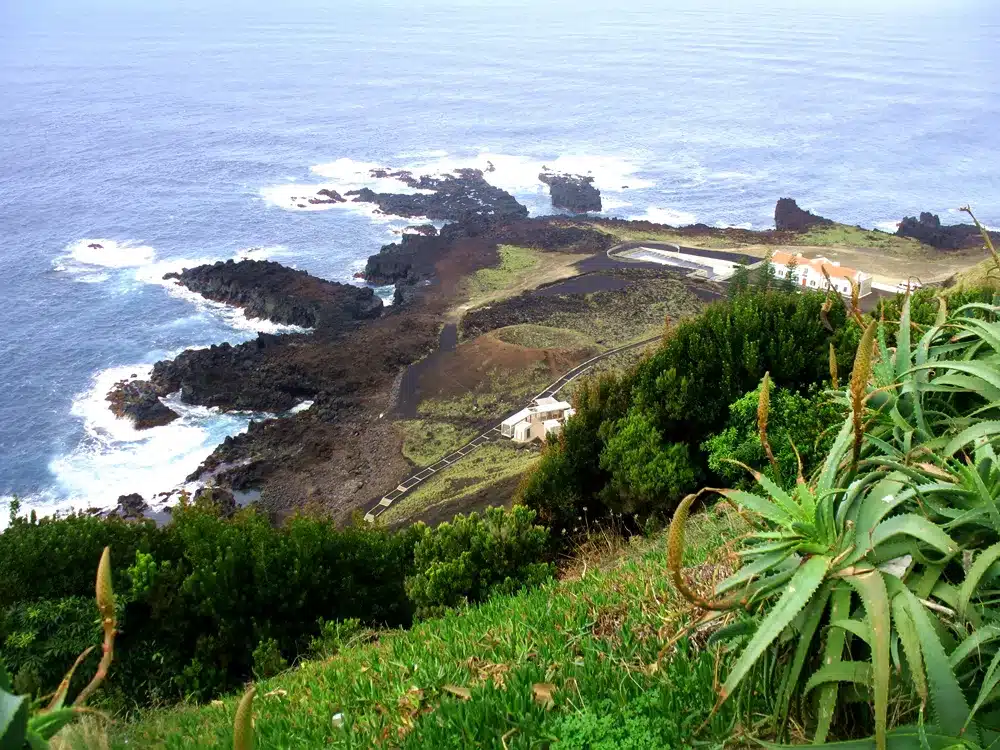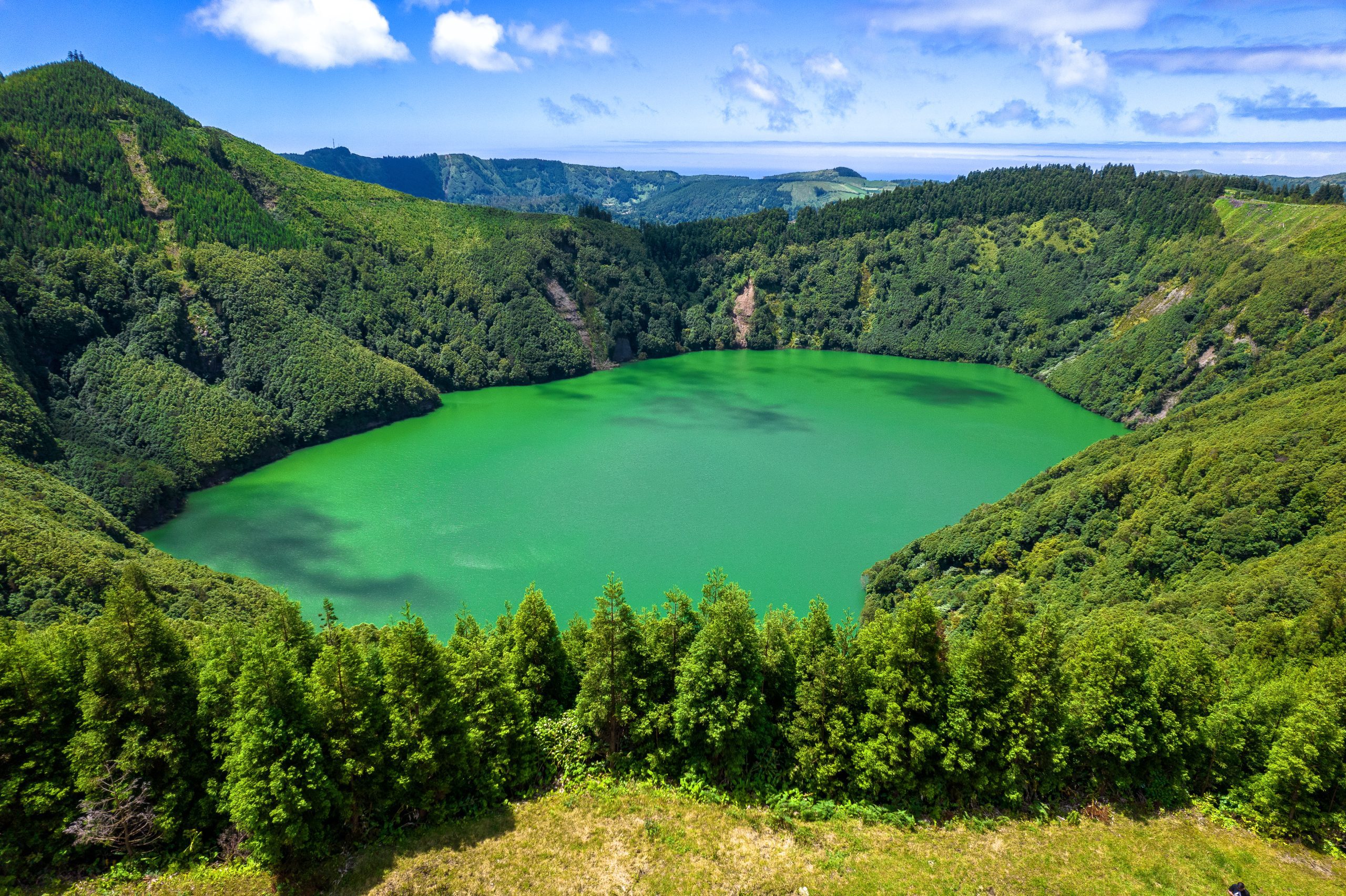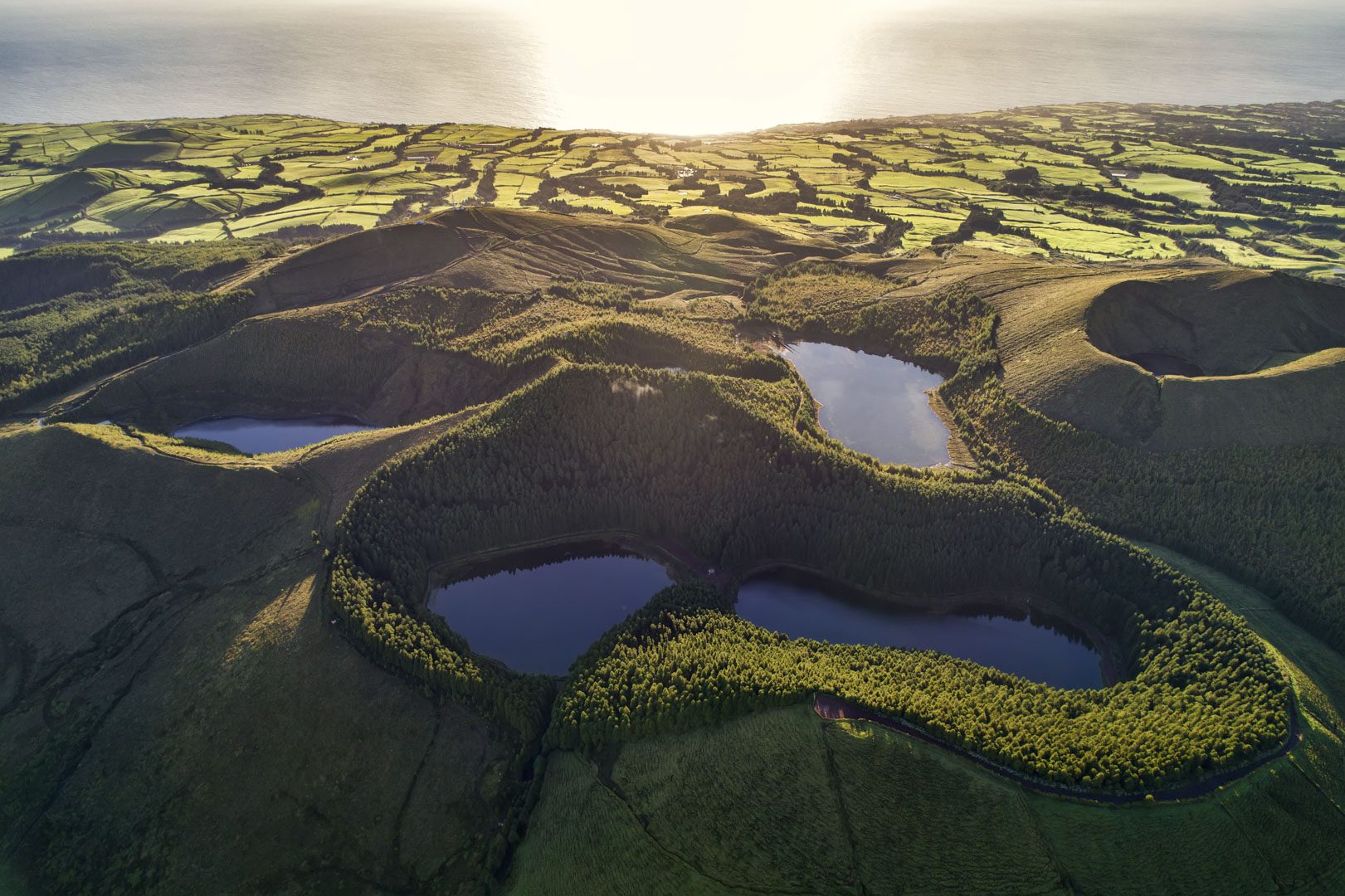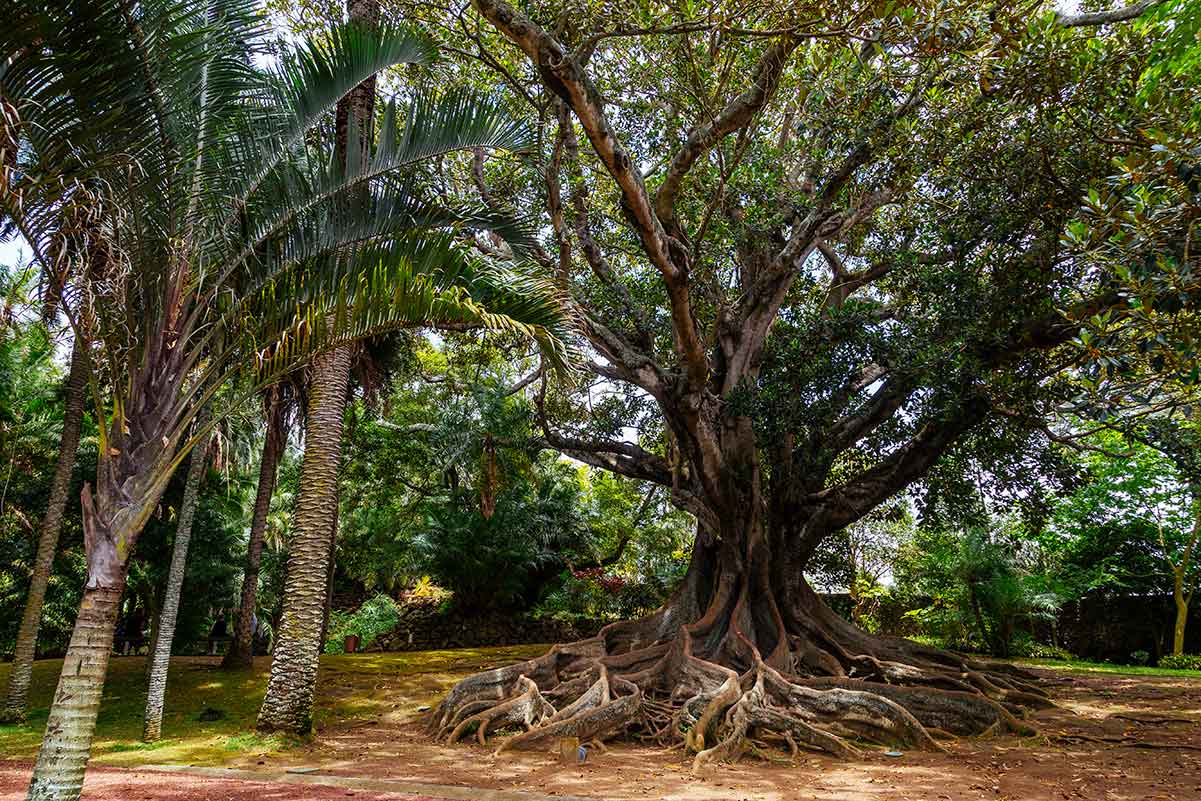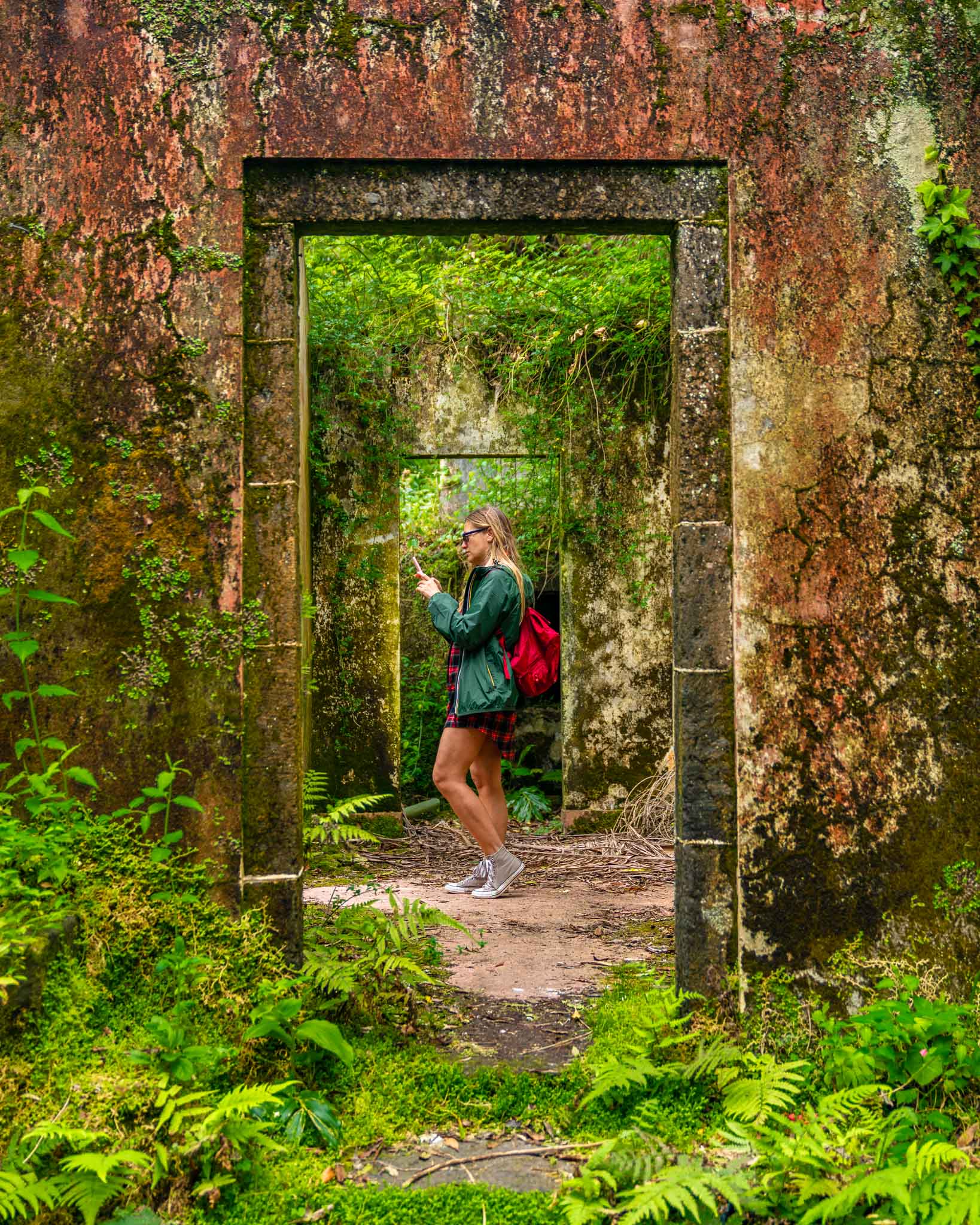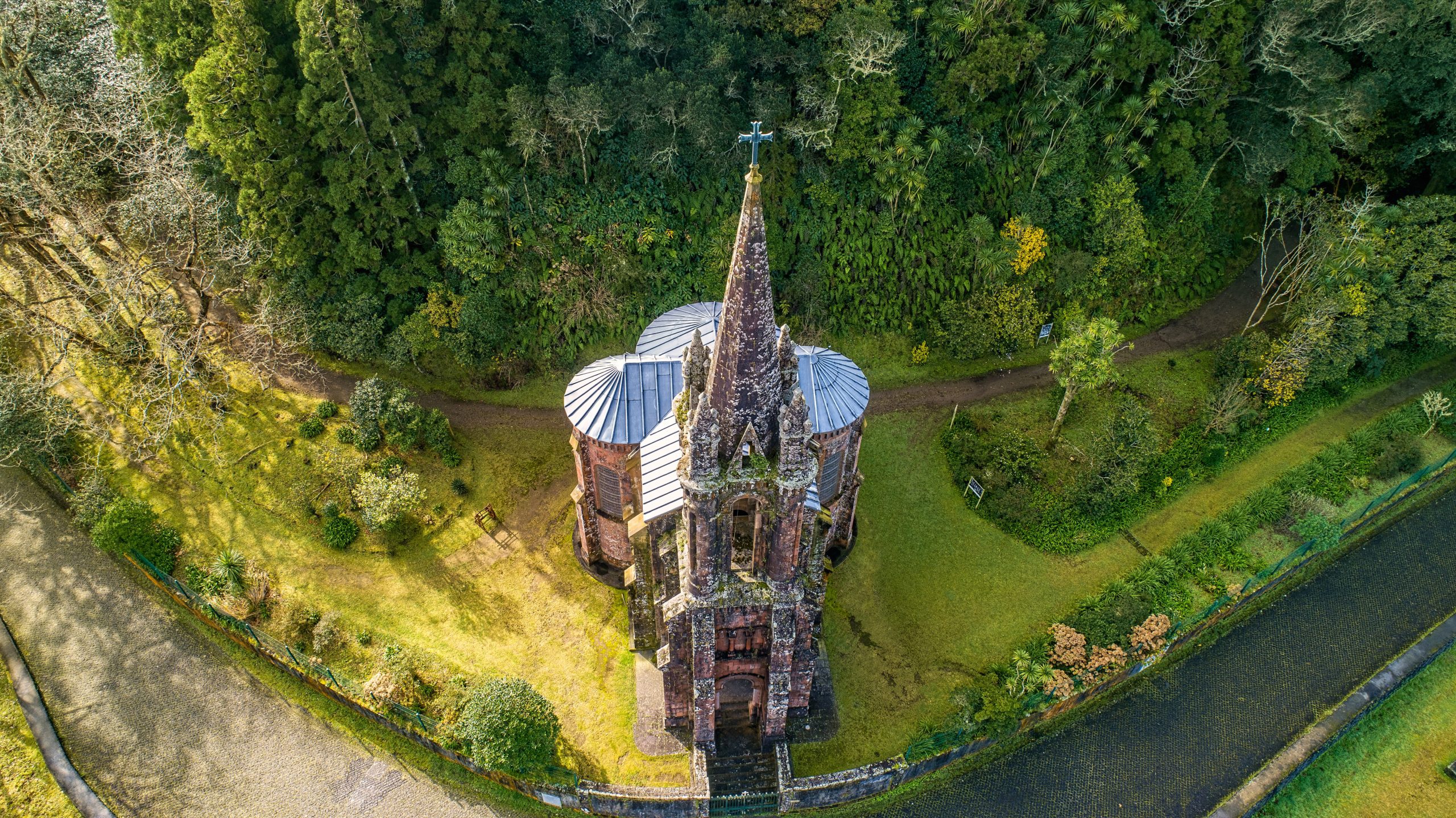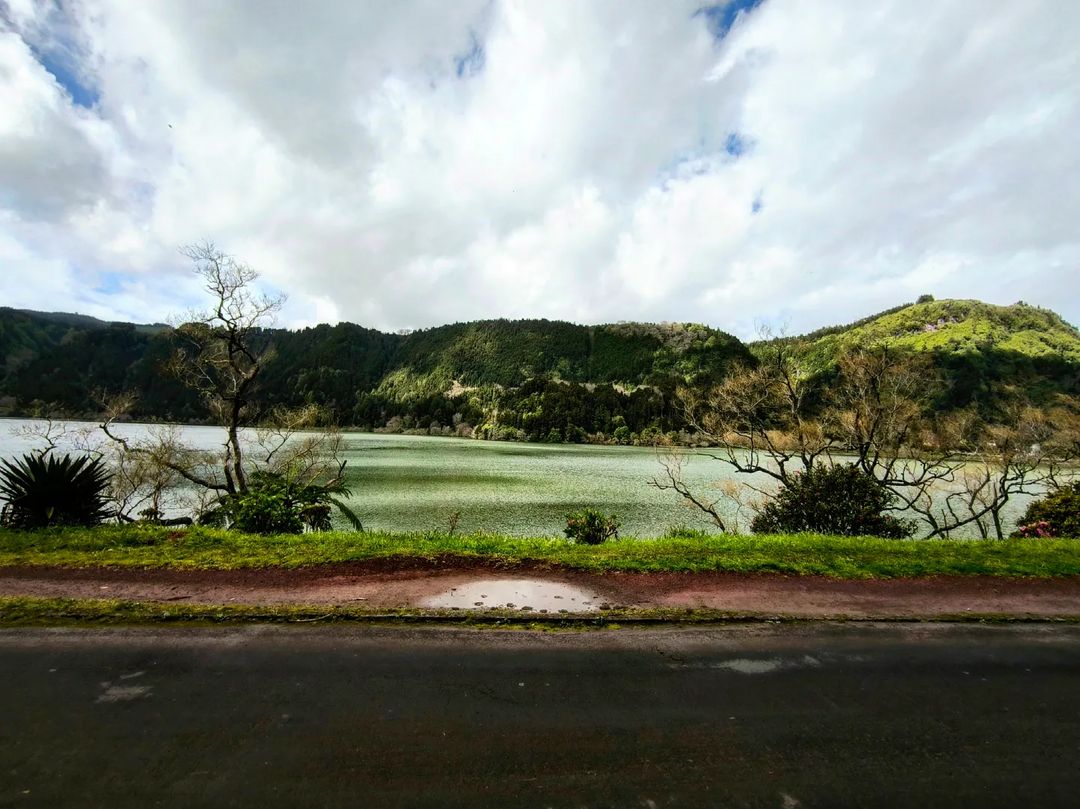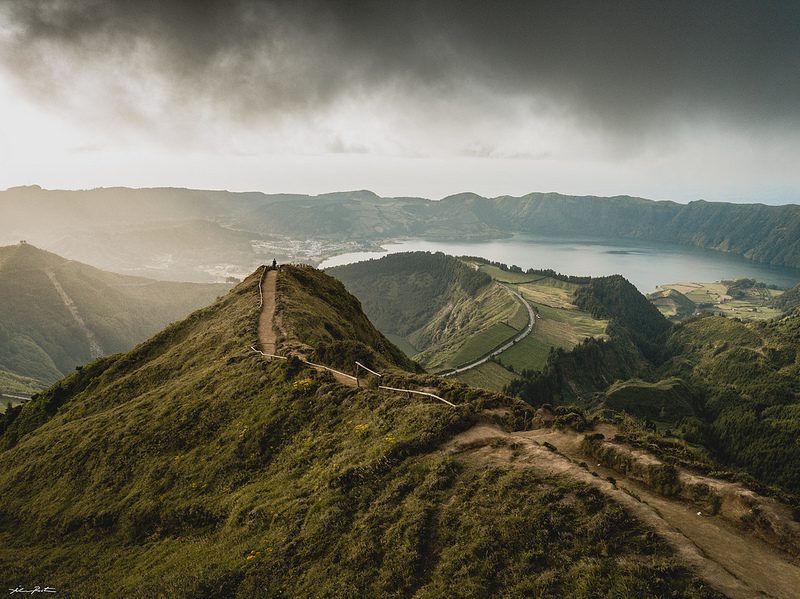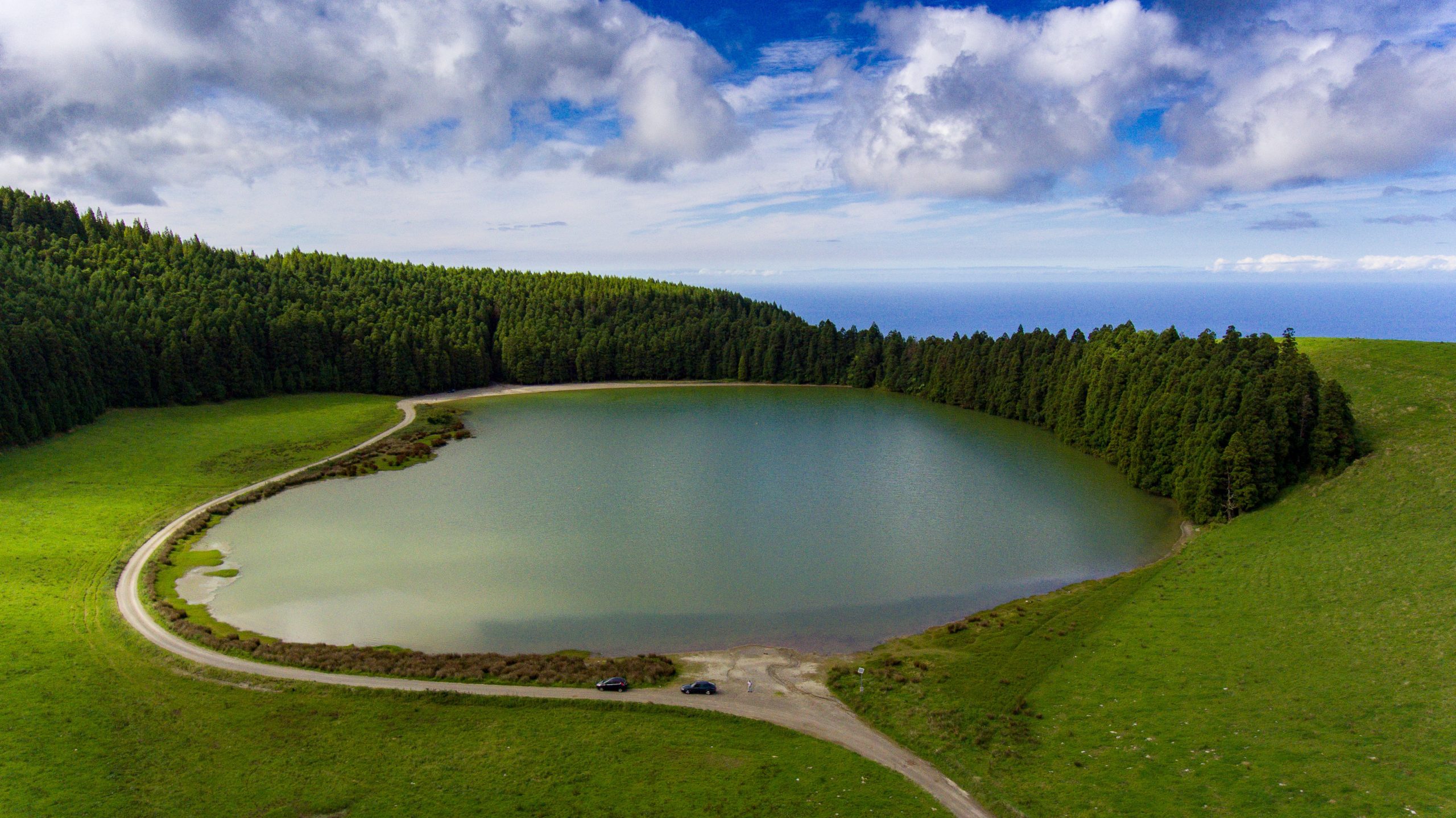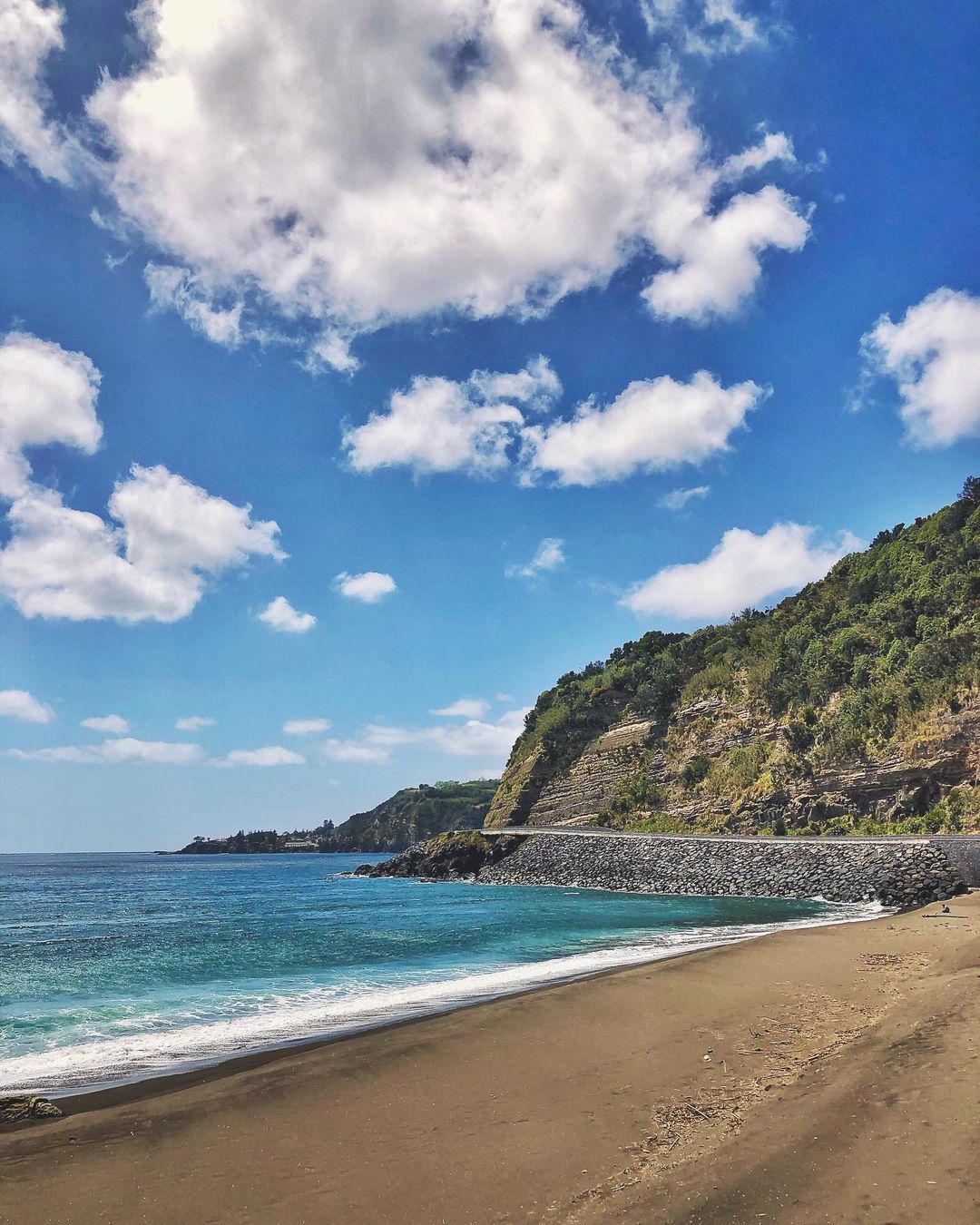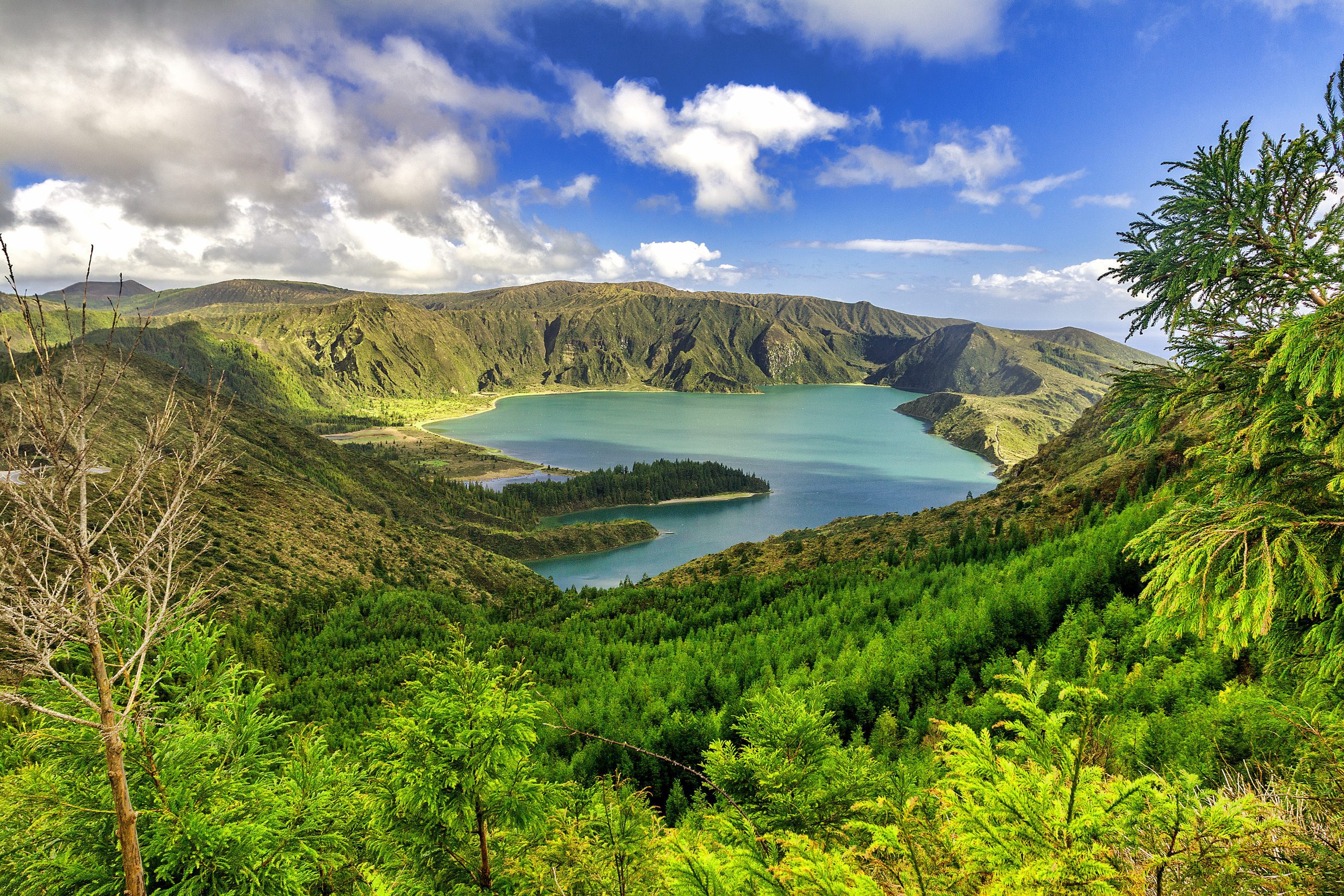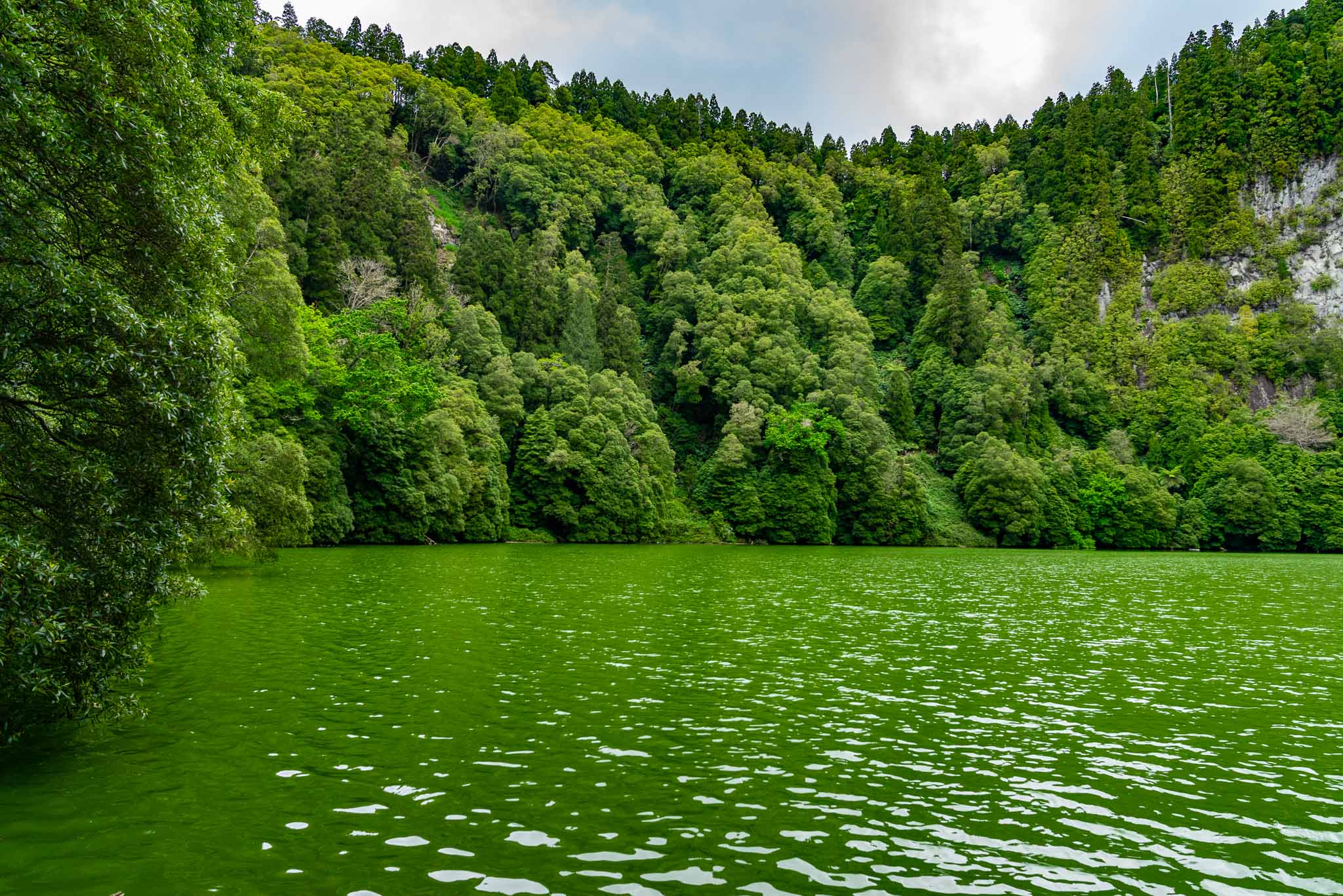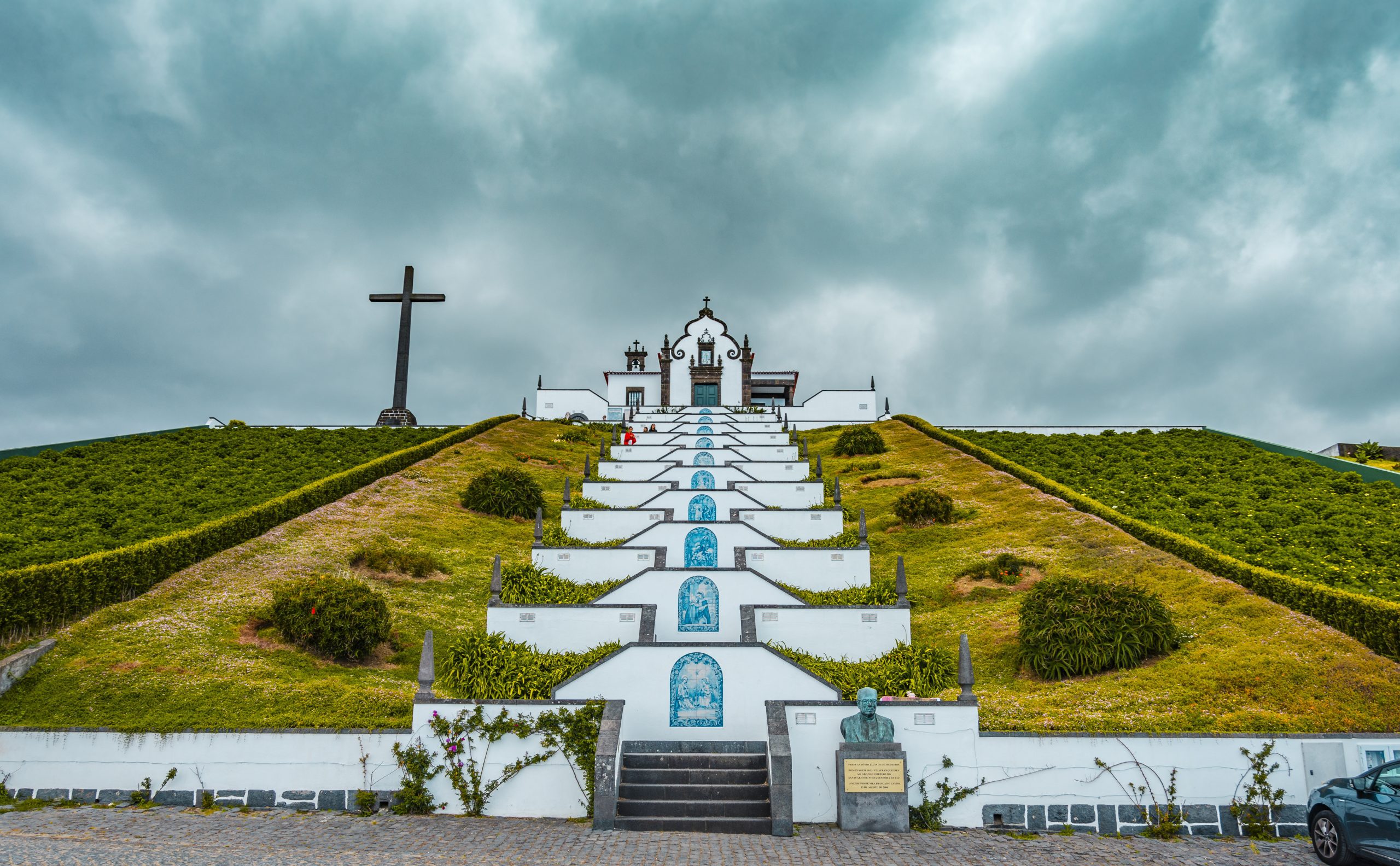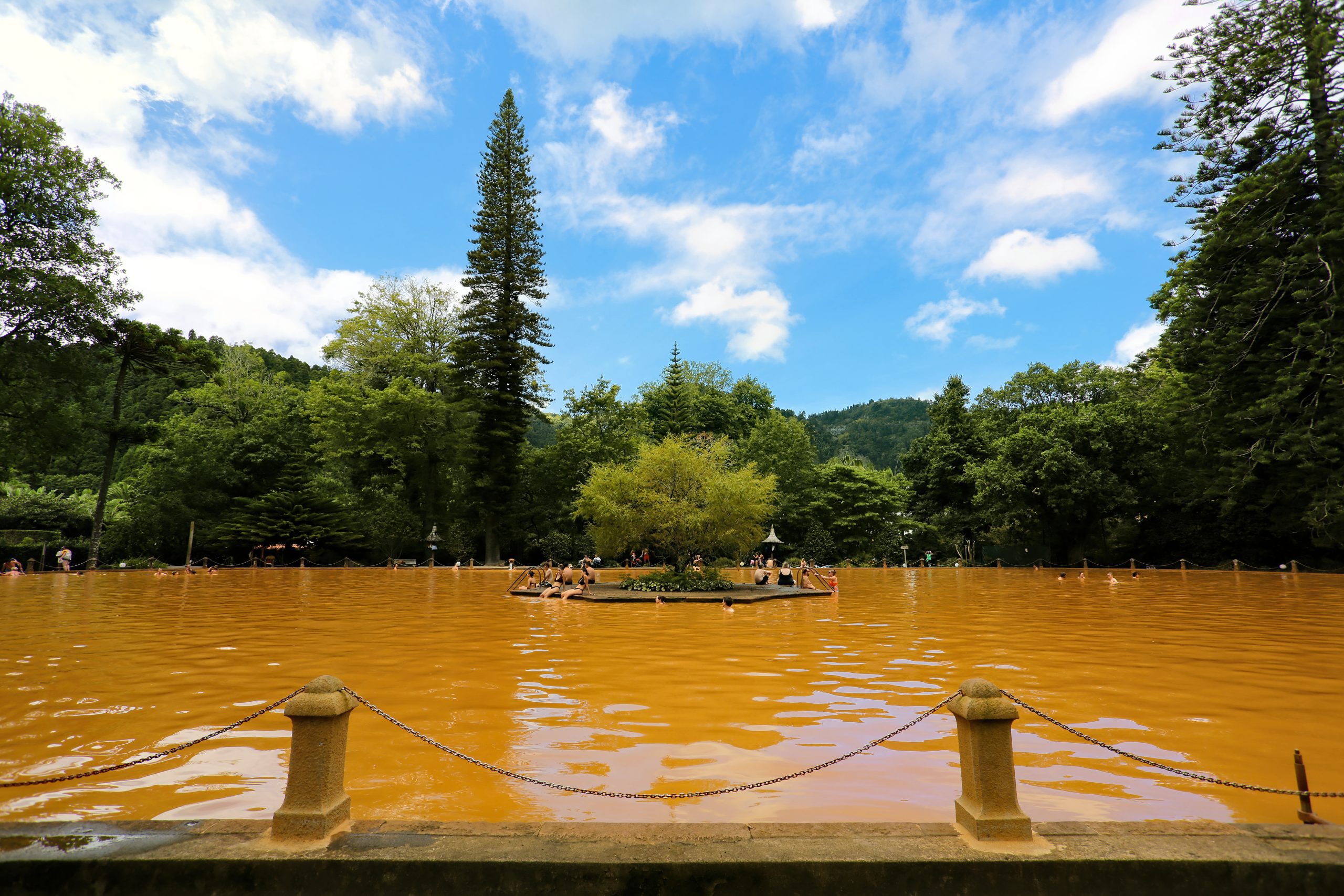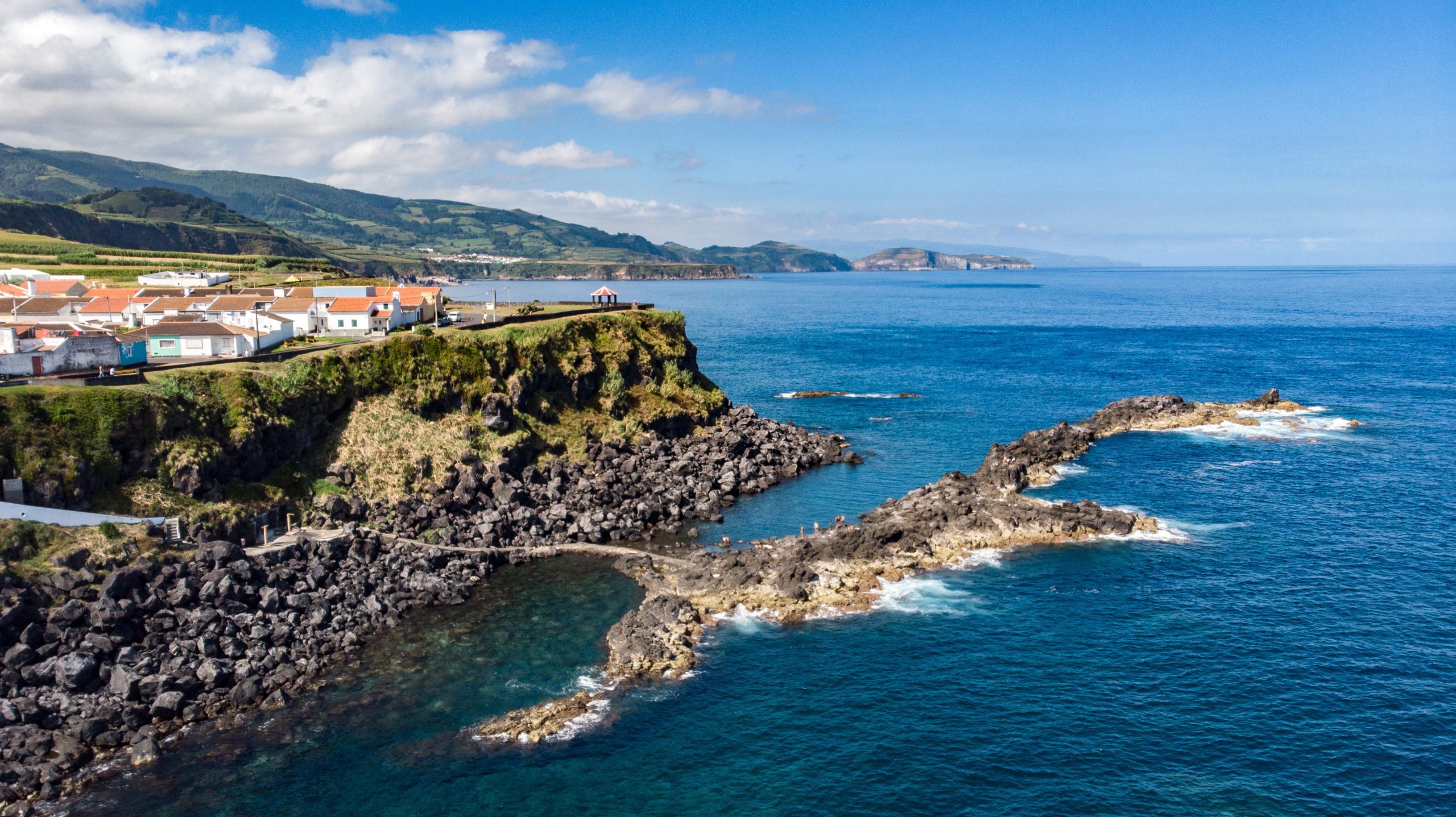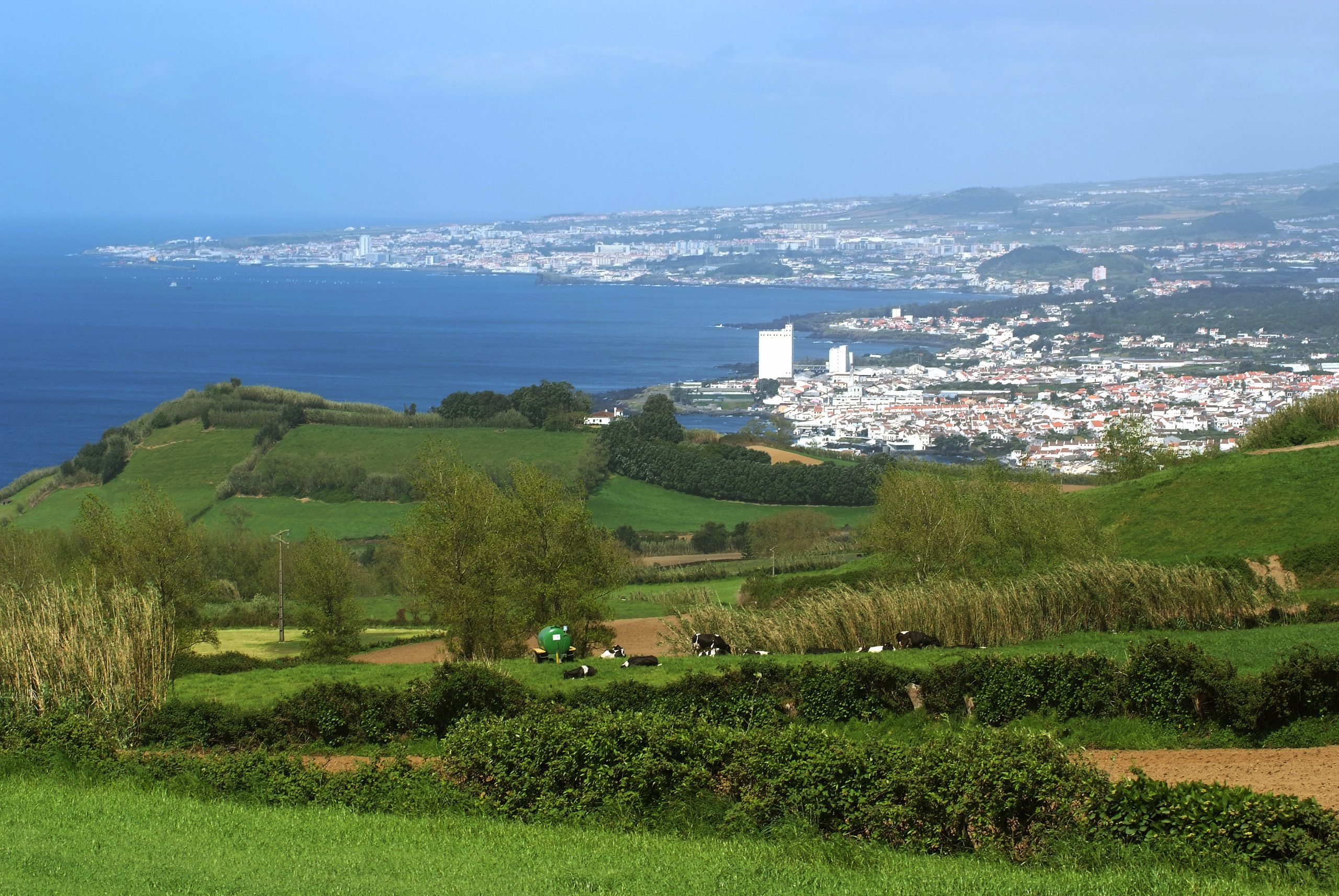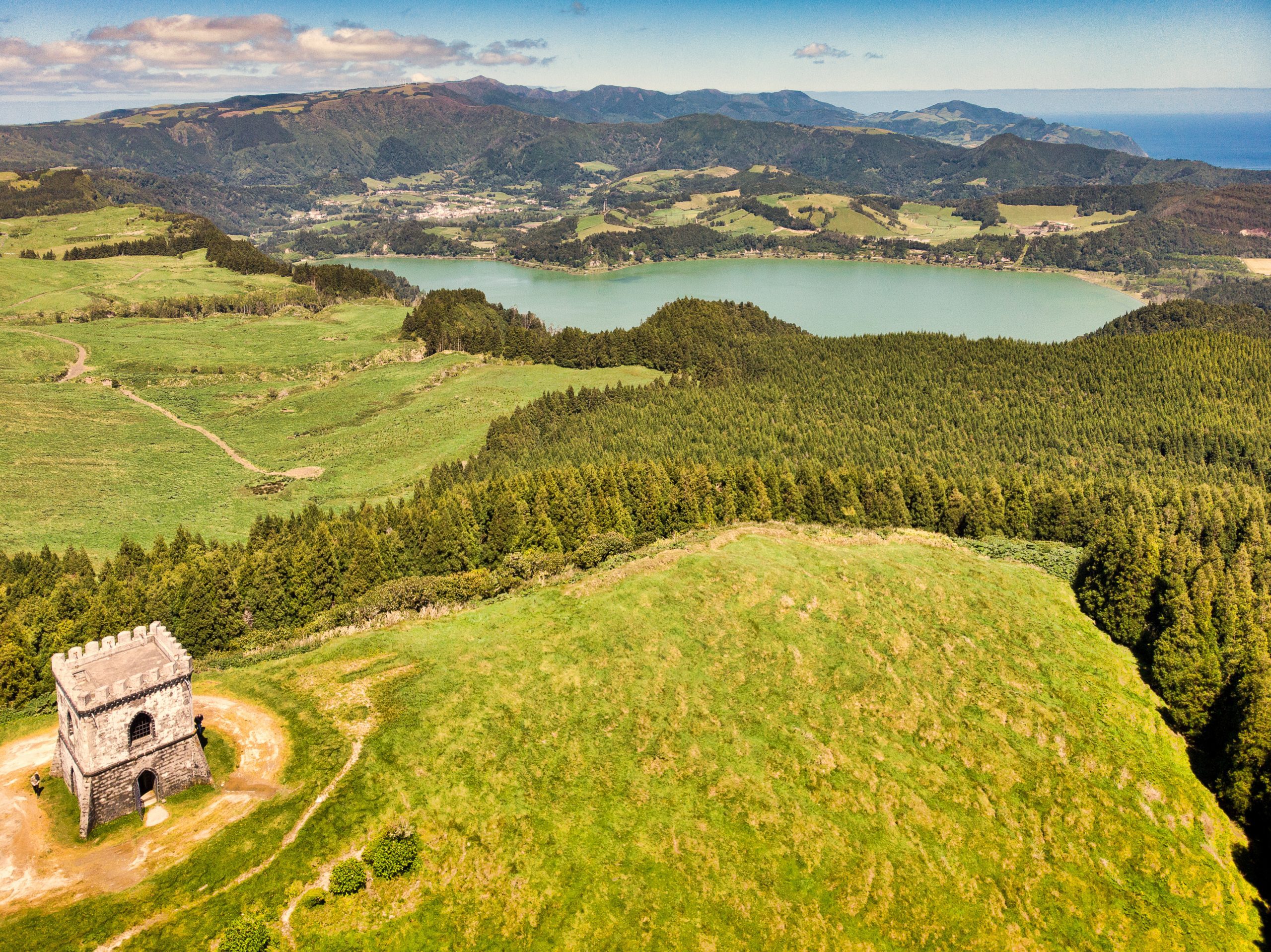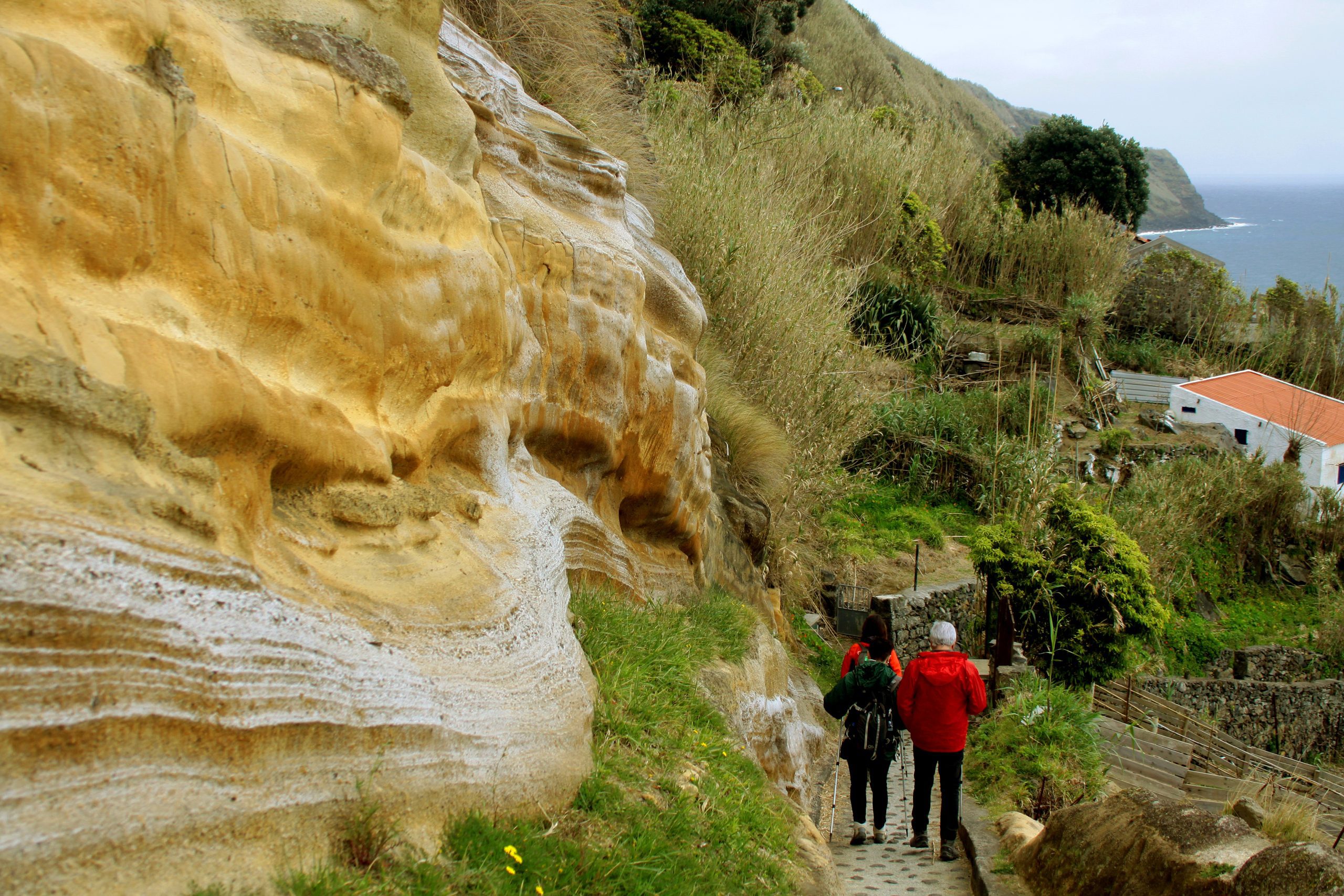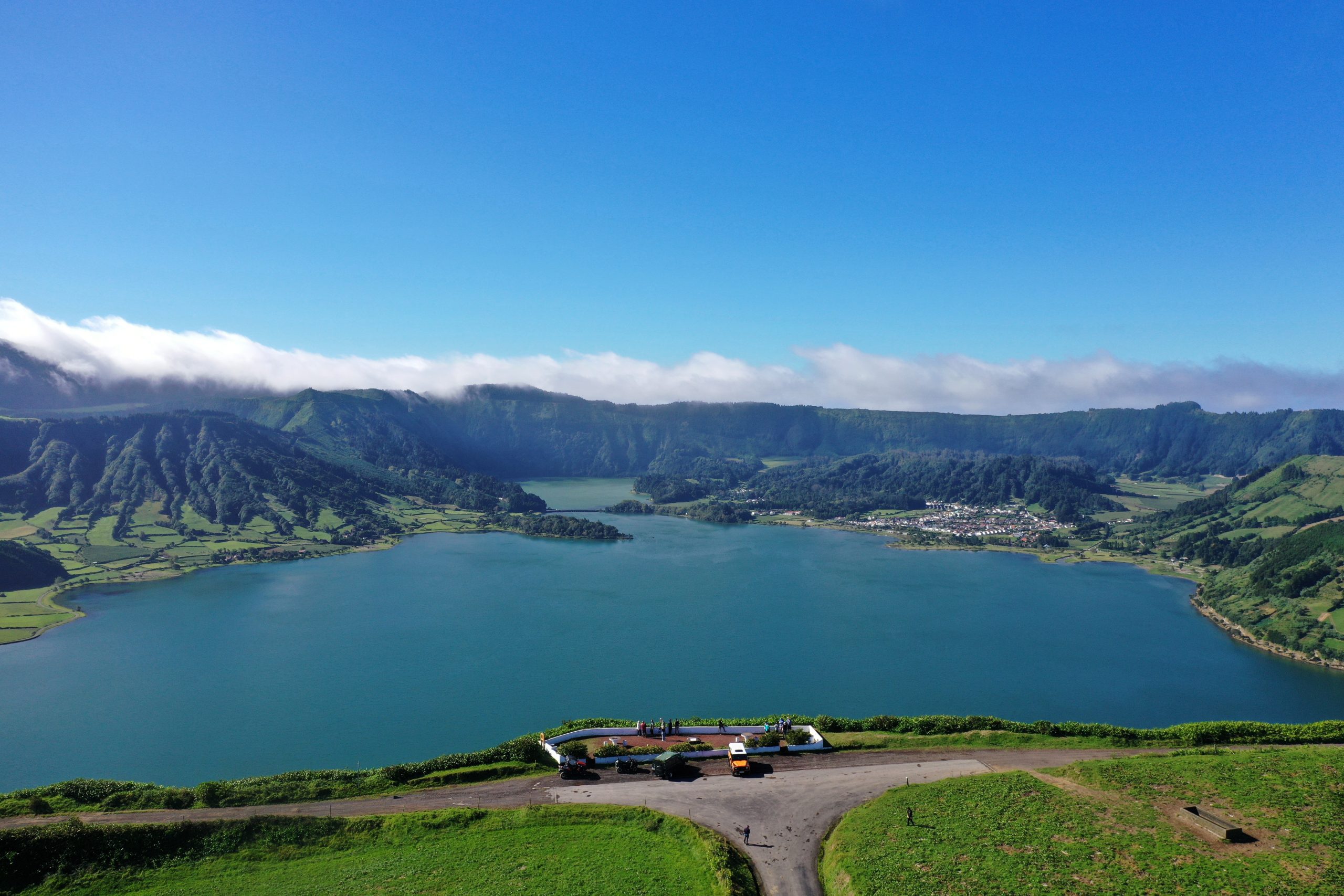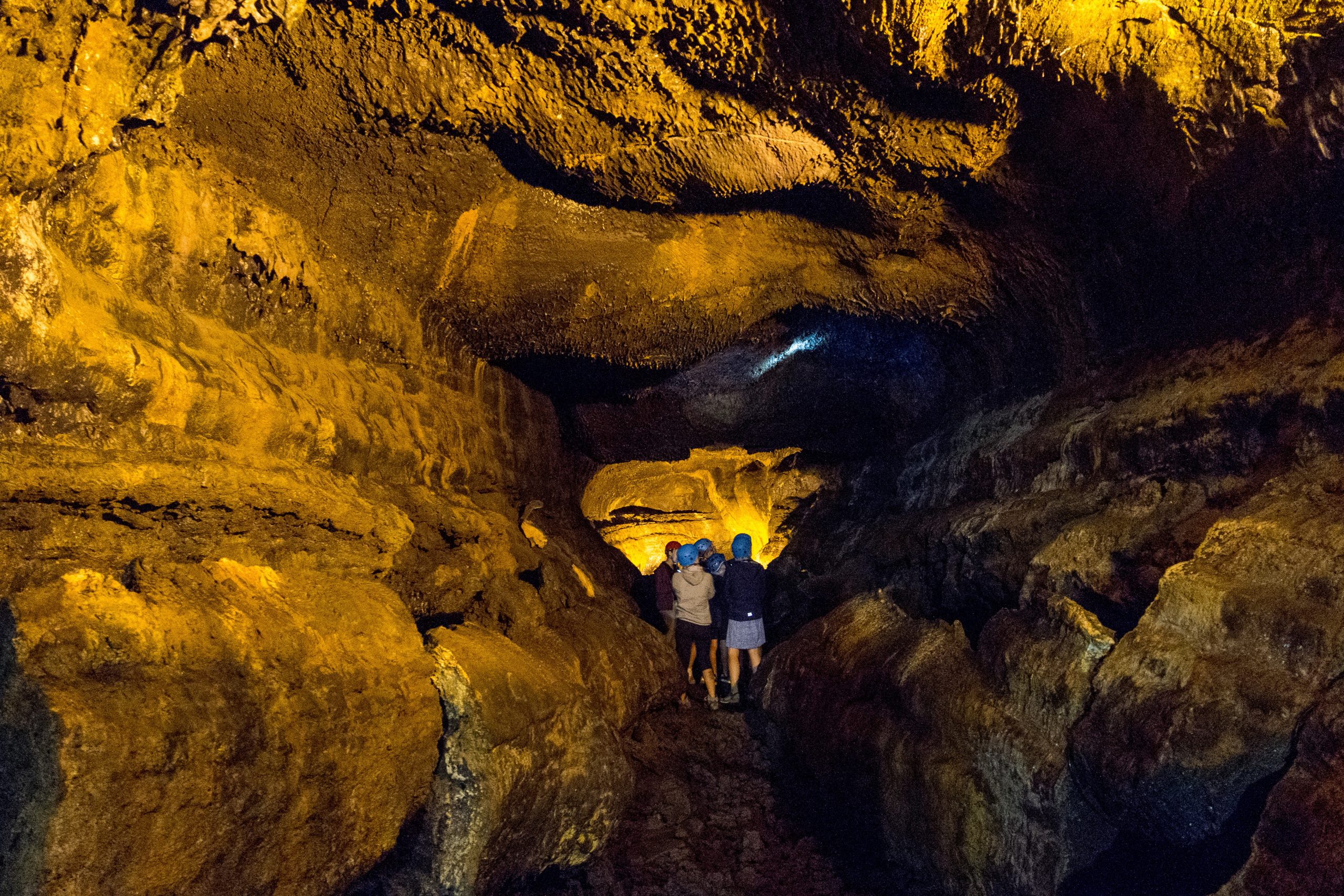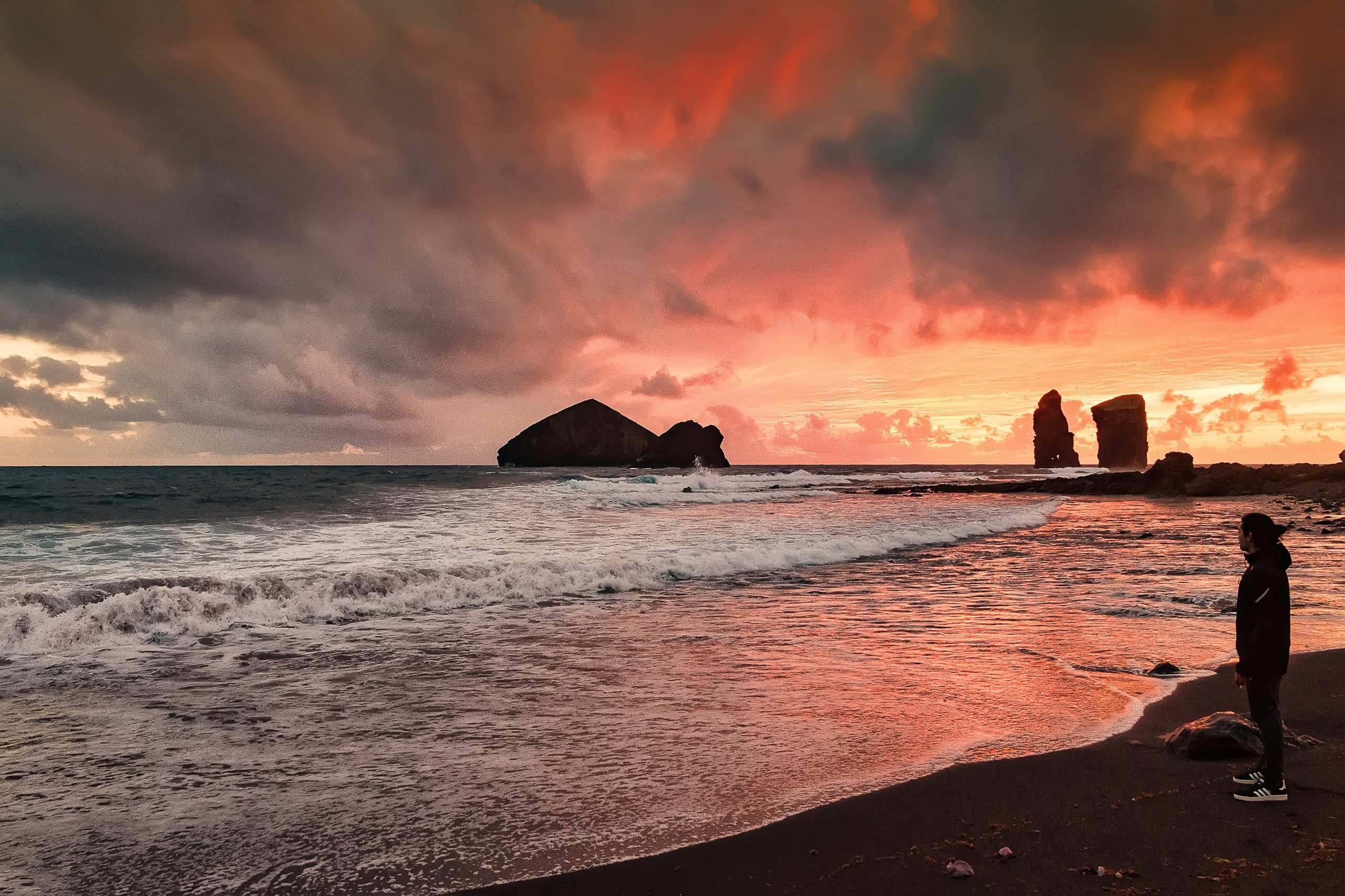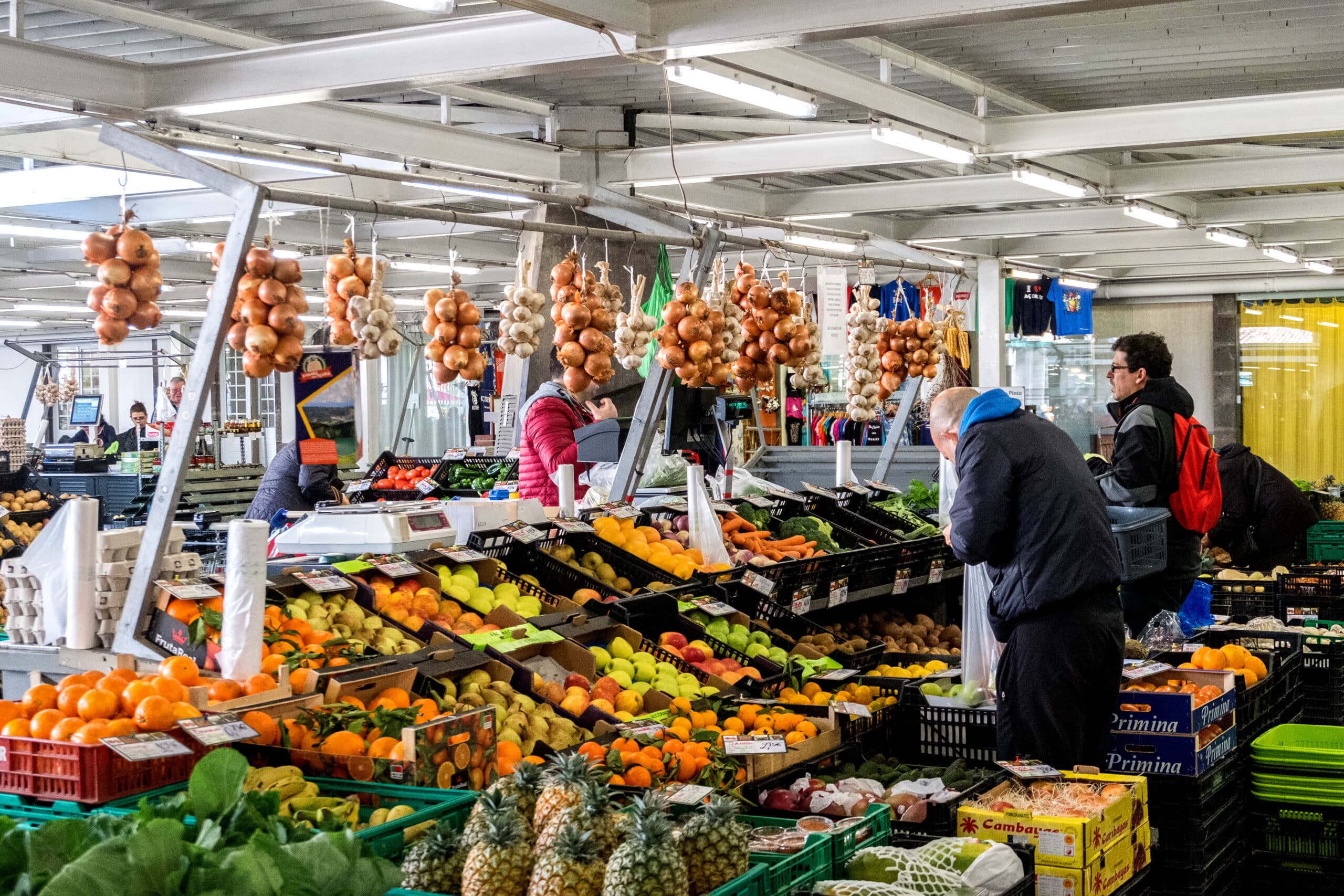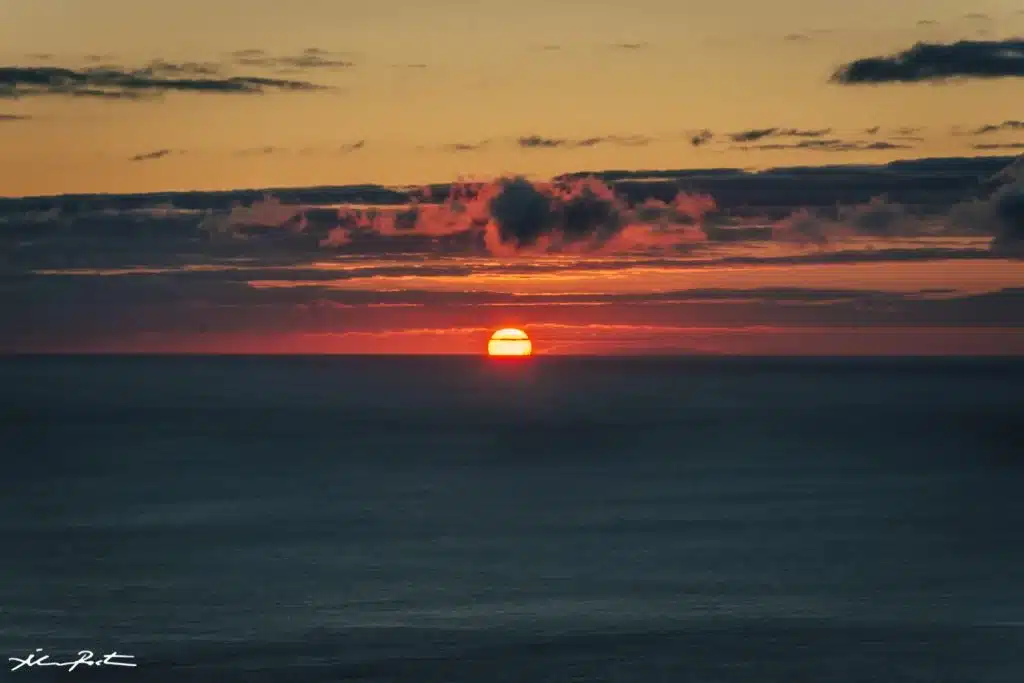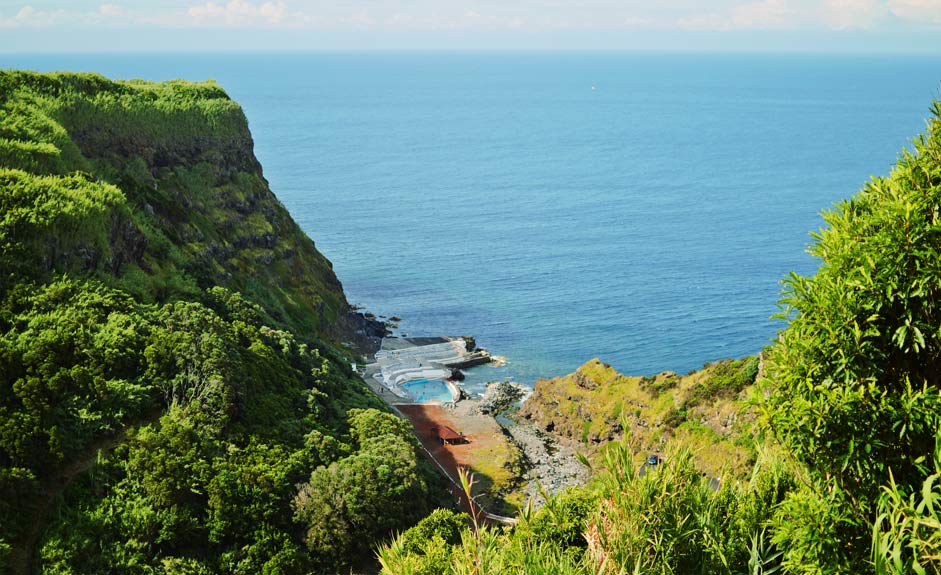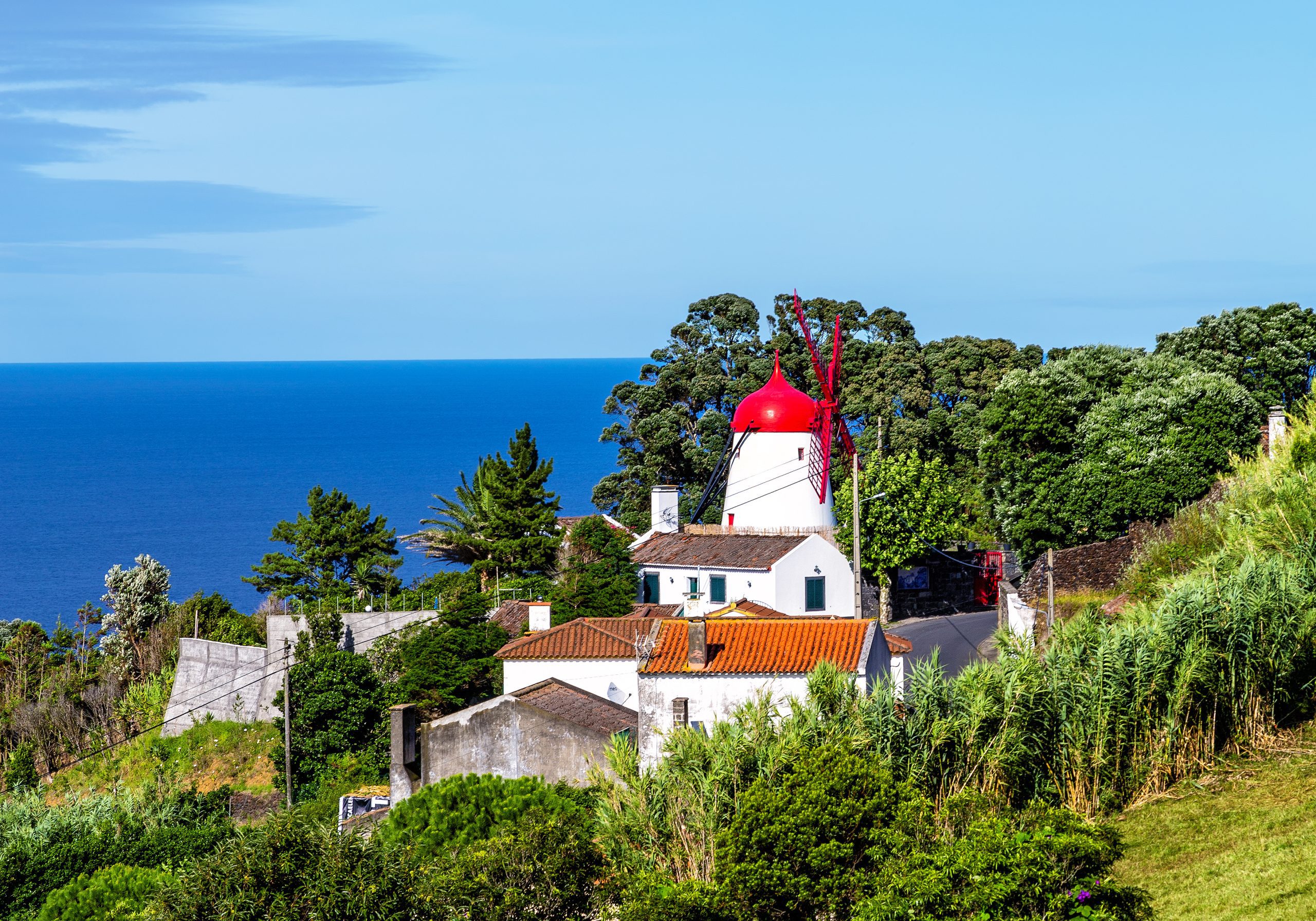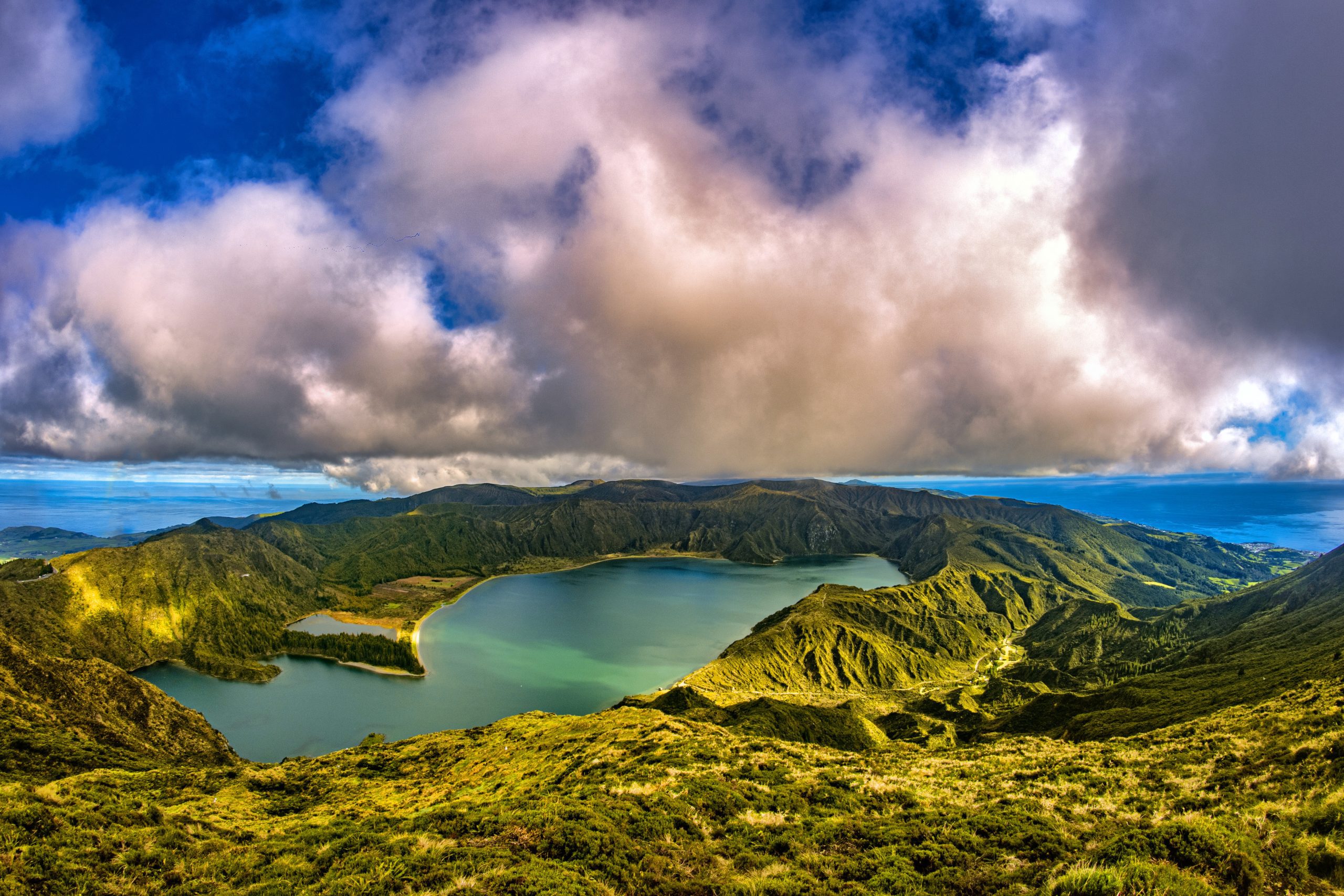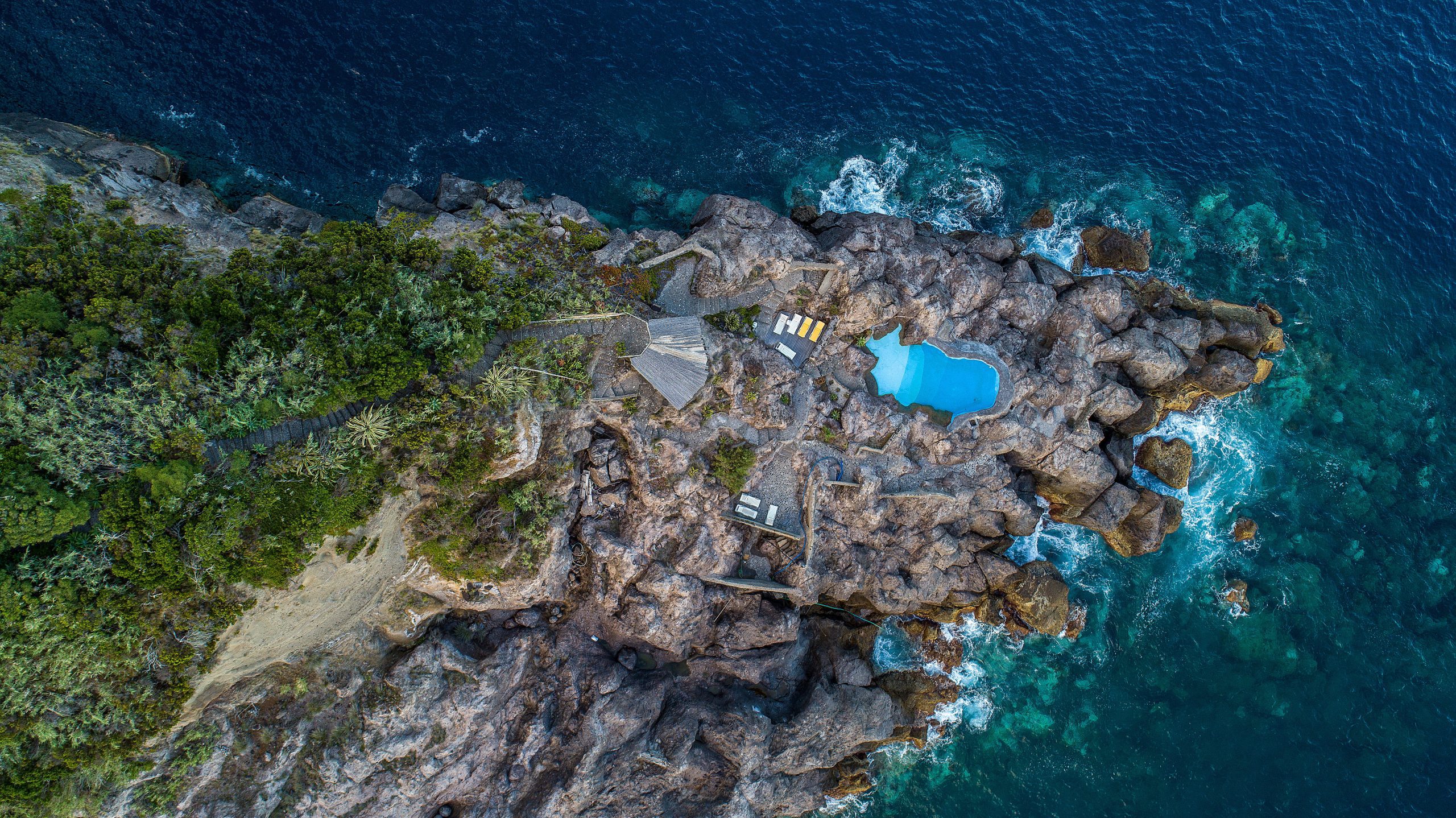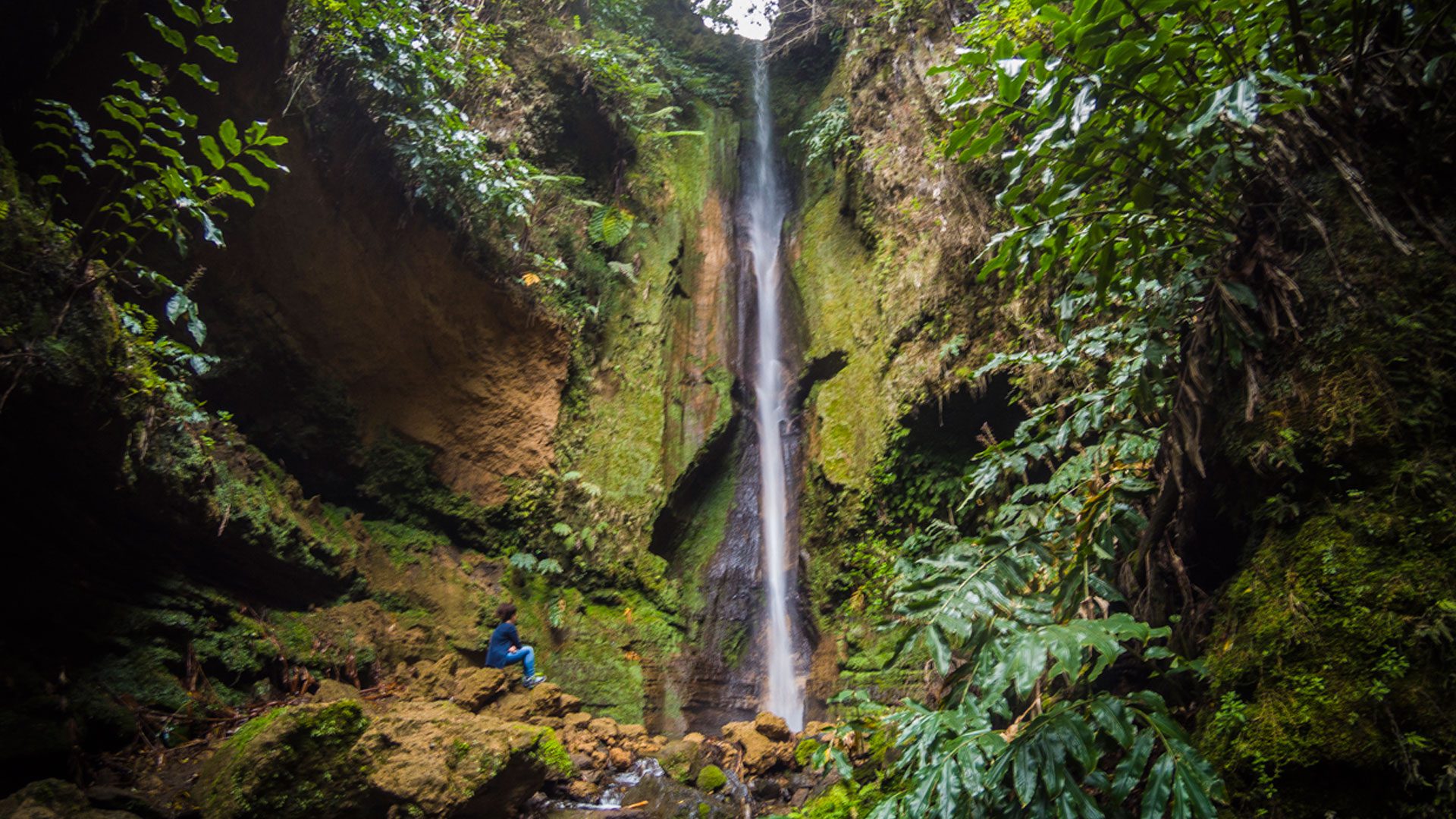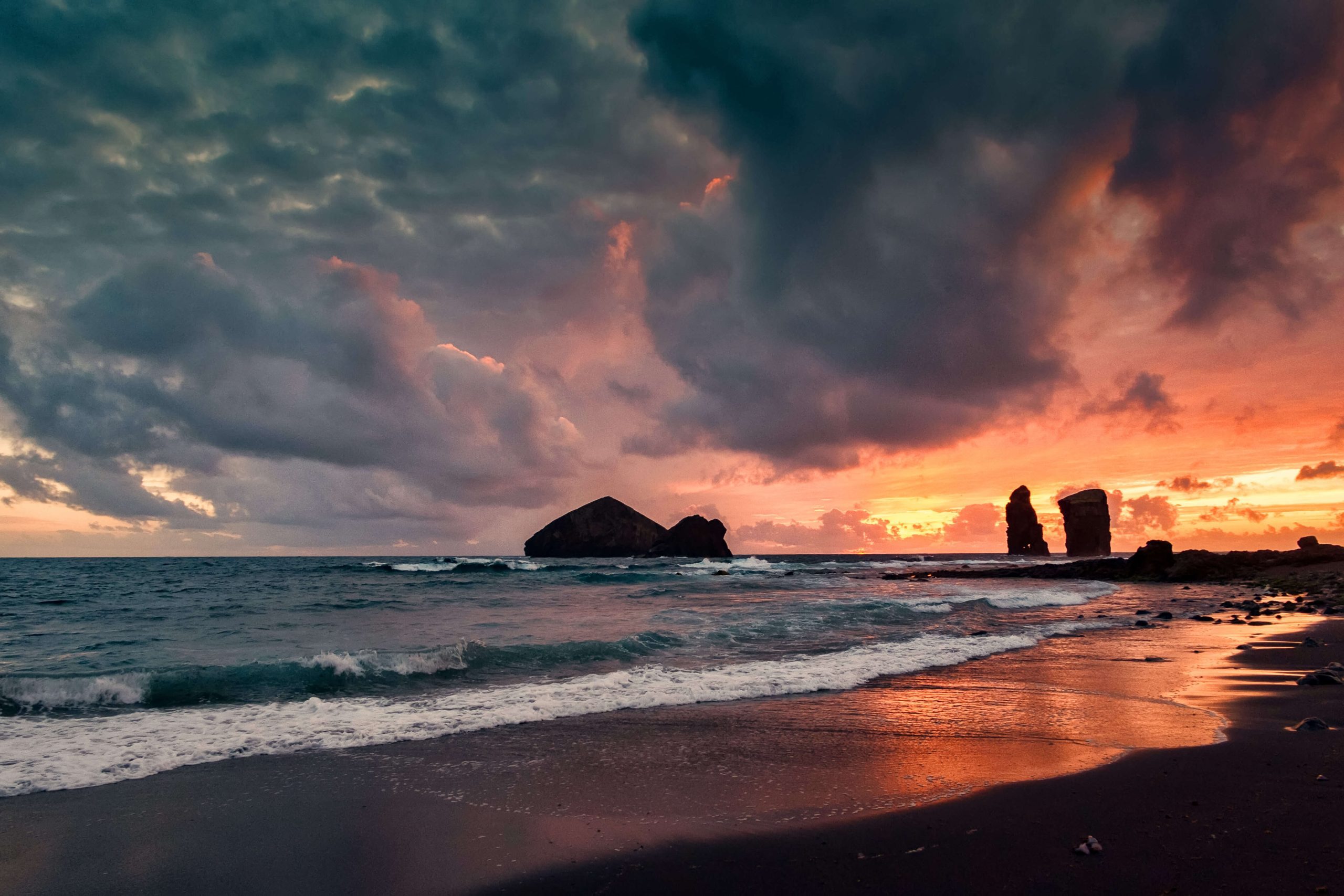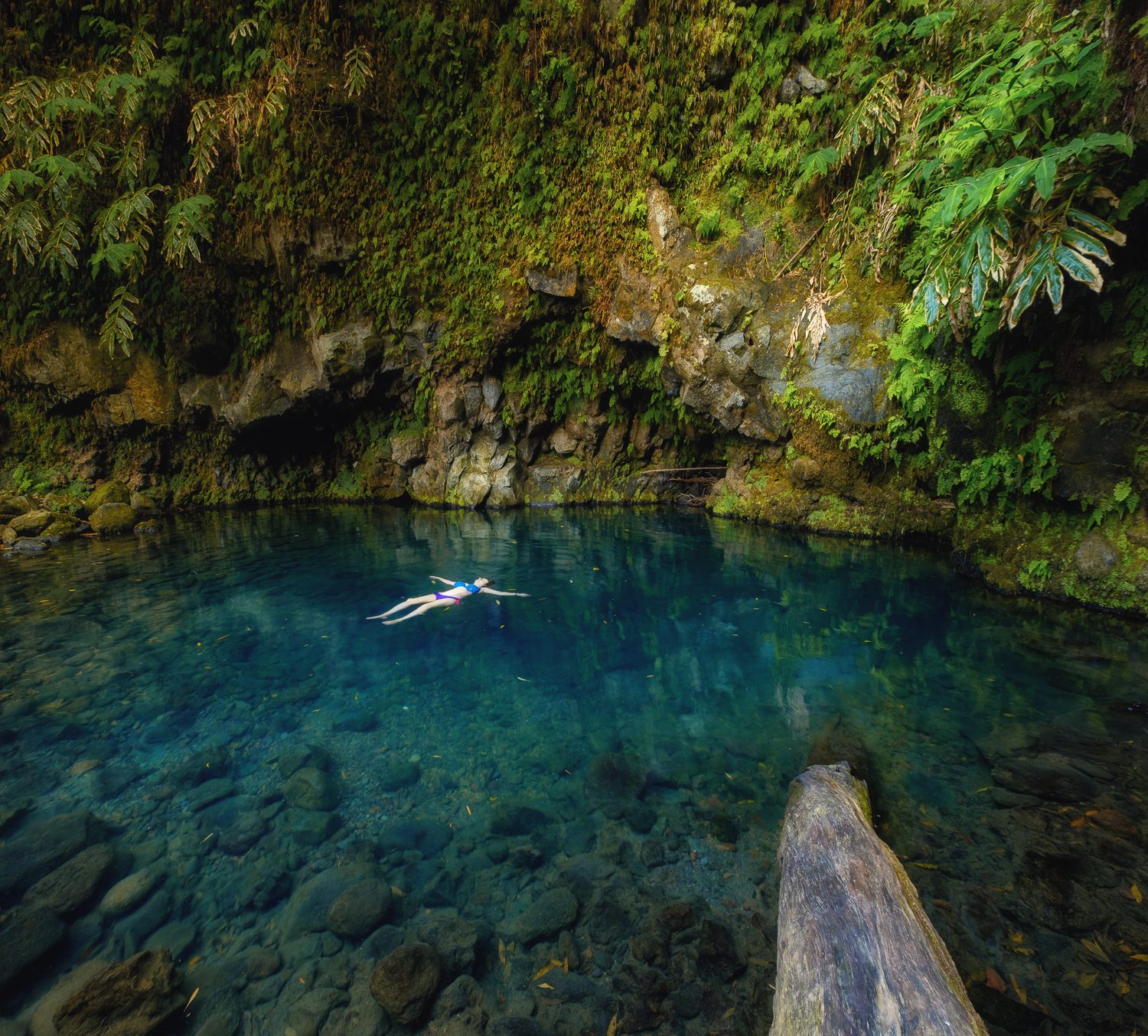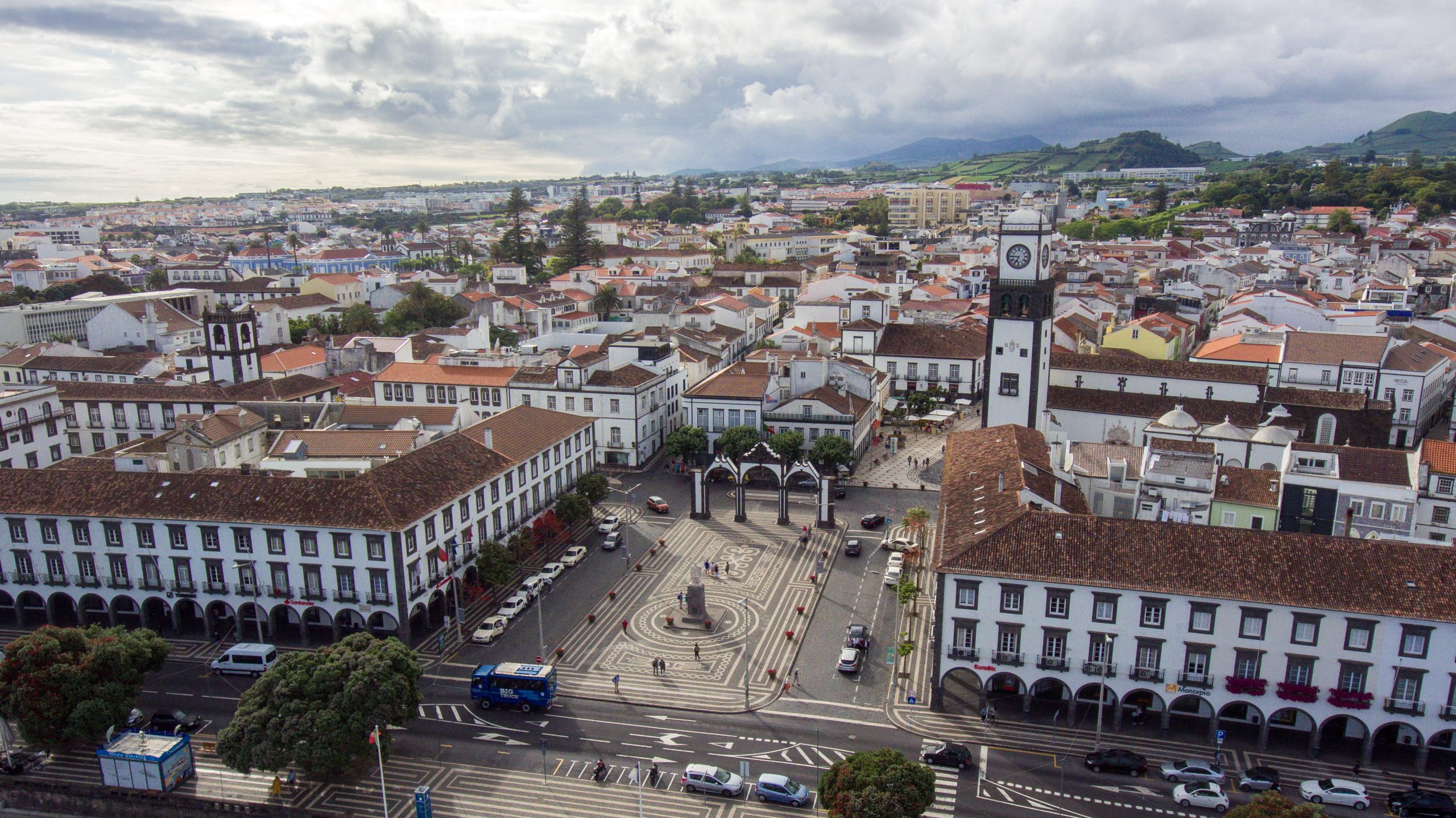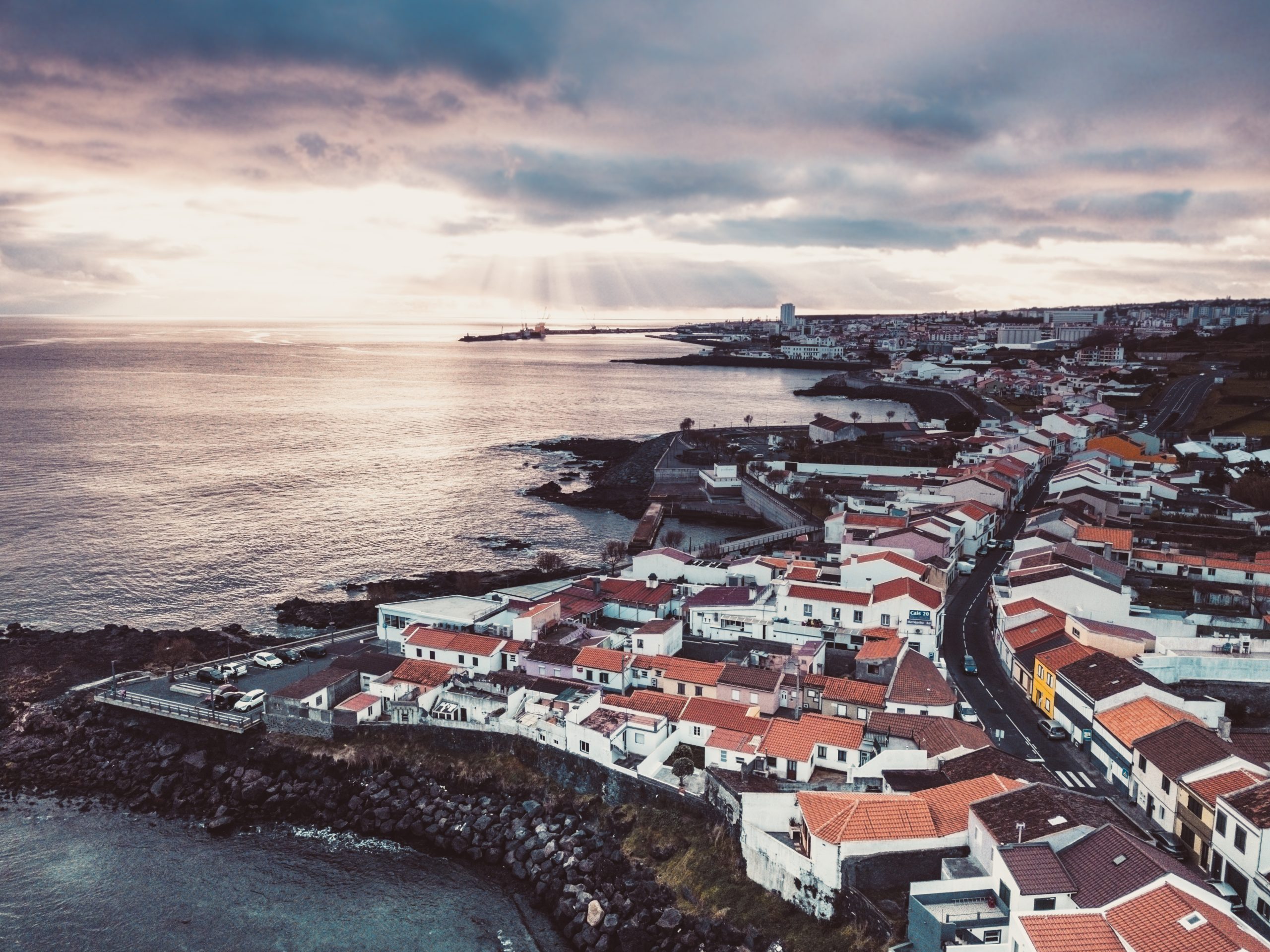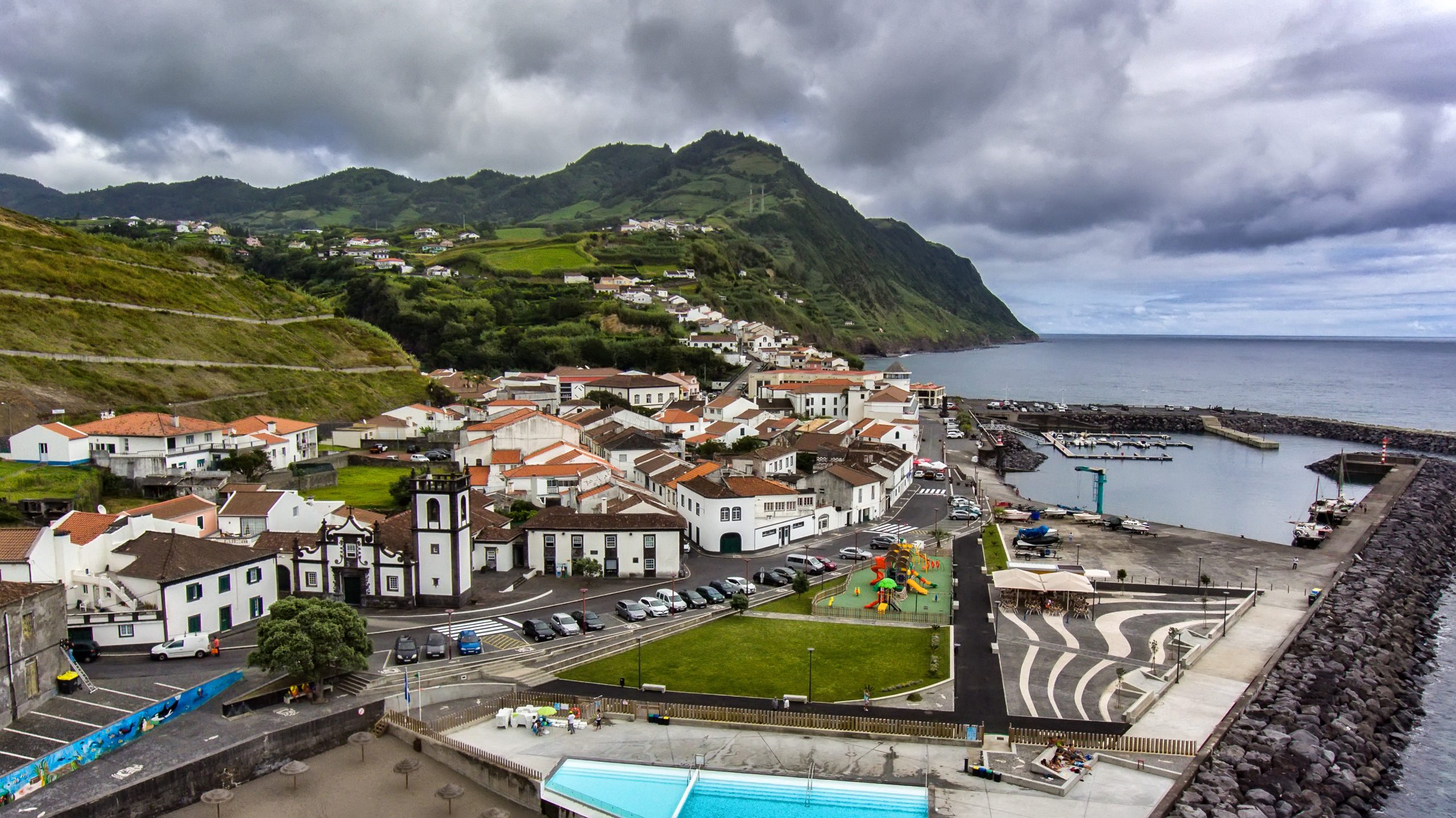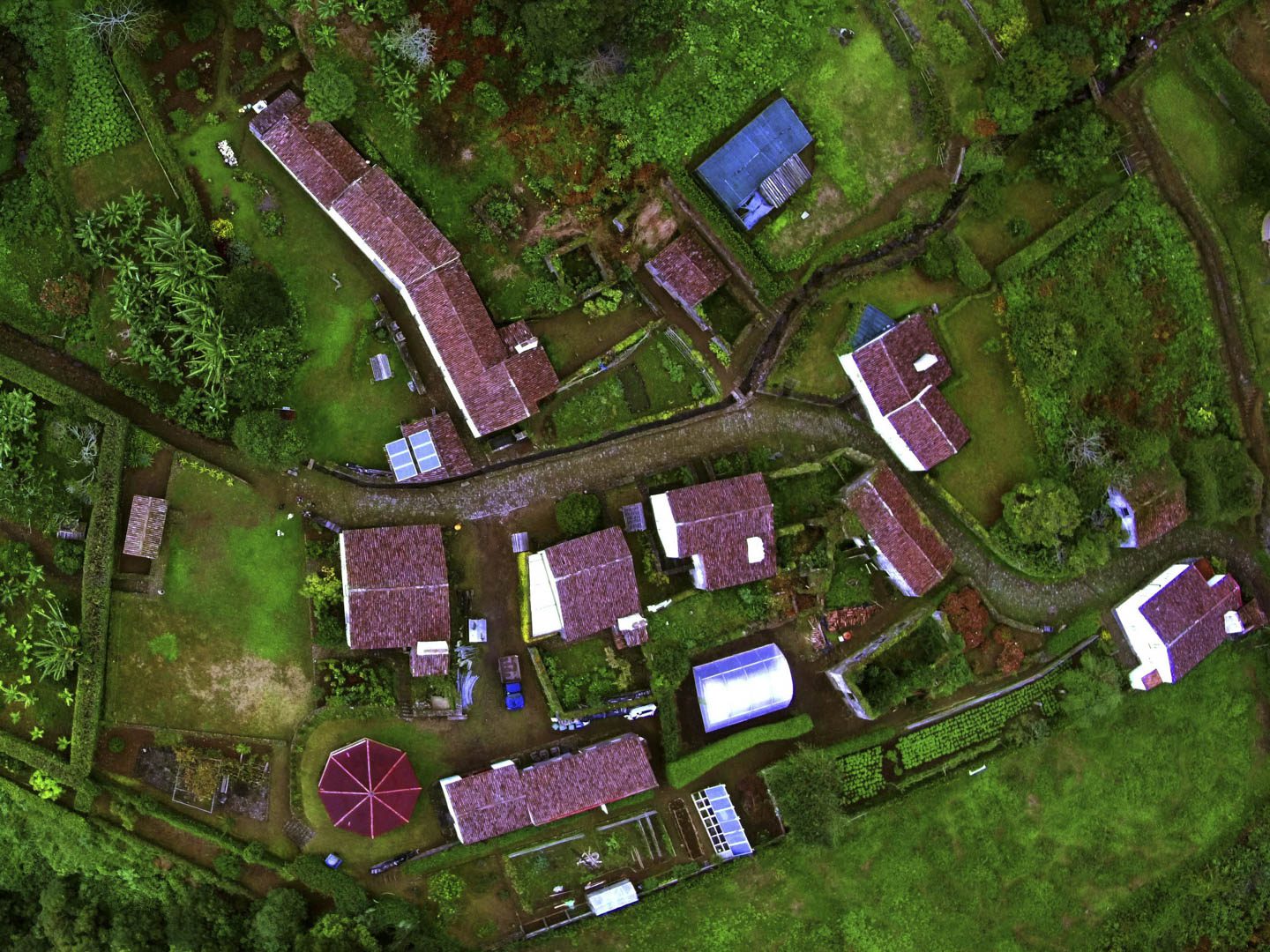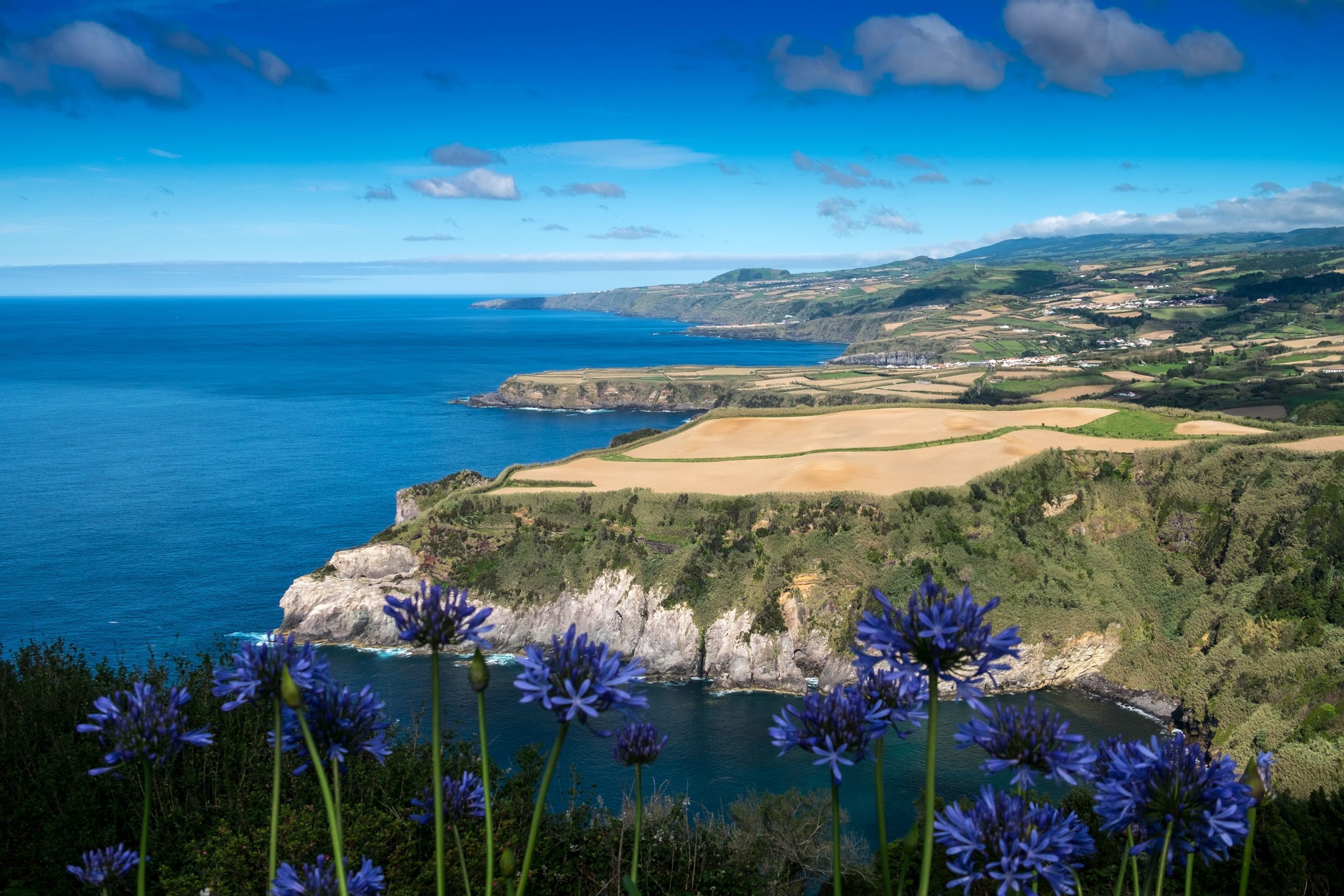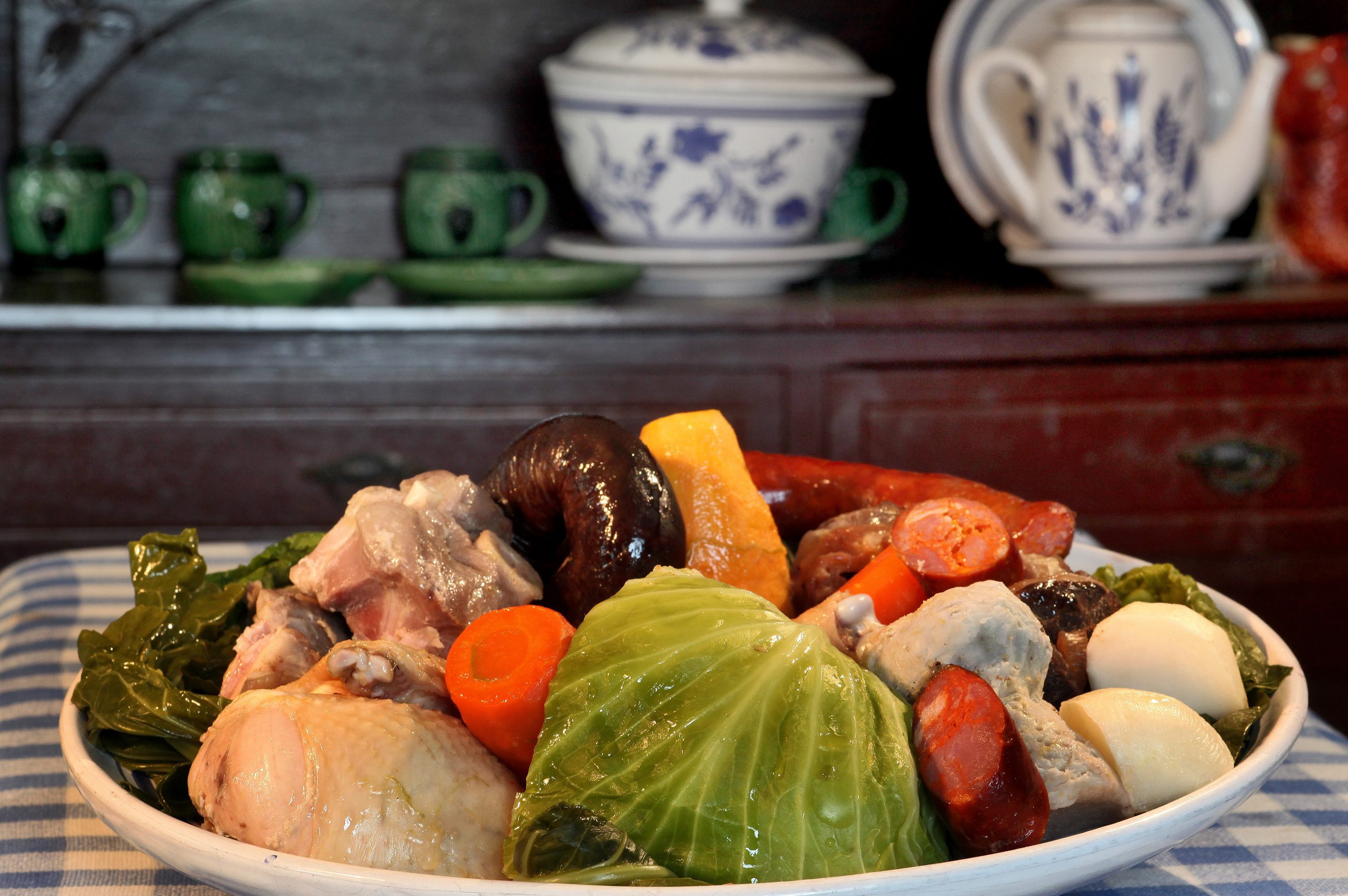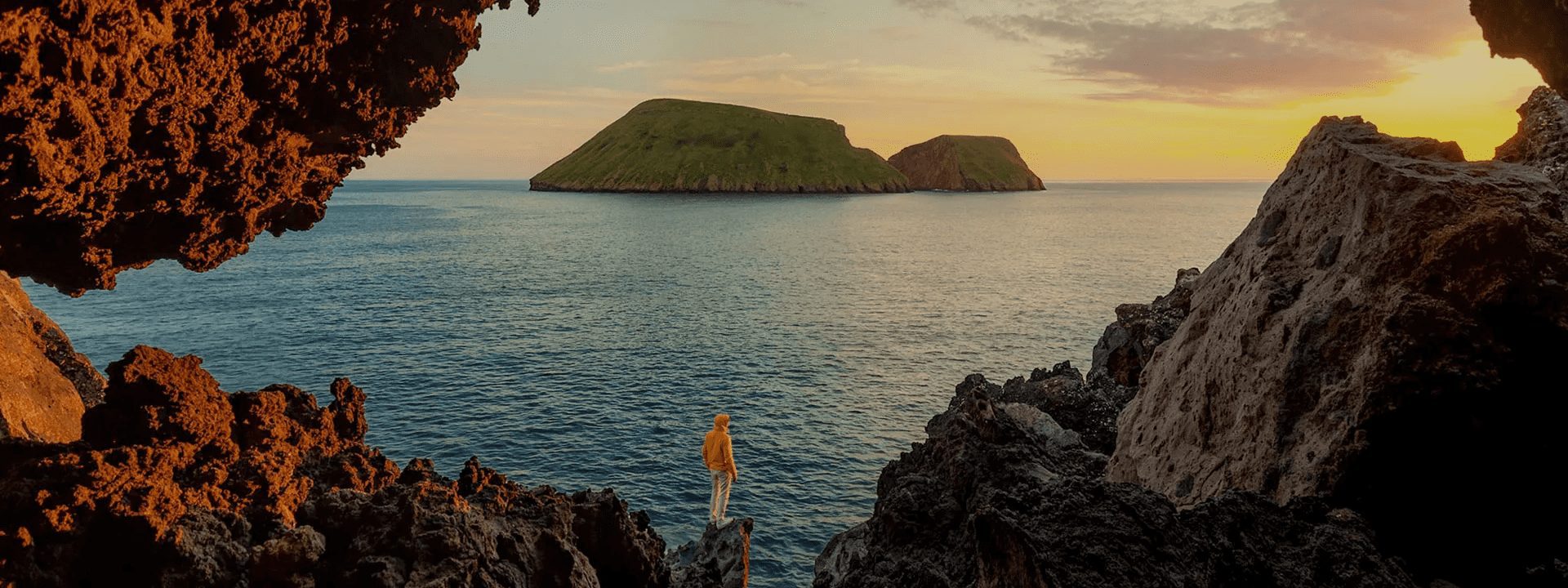The Senhor Santo Cristo dos Milagres is the most important religious festival in the Azores islands and the second biggest in Portugal. Thousands of immigrants return each year to their islands, most particularly São Miguel. It is time to celebrate and honor this great time of year.
Ponta Delgada has turned into a thriving city with live music, flowers in the street, illuminated monuments and squares, many activities for children, and delicious street food trucks. People come together in the streets. This shows the importance of the Santo Cristo festival for shaping Azoreans’ history and culture for centuries.
The mass religious tourism created by this festival shows that the people of the Azores are very devoted to Christianism. It is part of their identity, providing a feeling of belonging to a community. In this article, we will tell you all you need to know about the happiest time of the year in Ponta Delgada, the biggest city in the archipelago.
What is Senhor Santo Cristo dos Milagres

Senhor Santo Cristo dos Milagres is a sacred work of art that can be seen at the Nossa Senhora da Esperança convent in Ponta Delgada, located on São Miguel island in the Azores archipelago. The wooden relic from an anonymous artist represents Ecce Homo — Jesus Christ during the Passion of Jesus episode. He was in front of the crowd with tied fists, wearing the crown of thorns (Lucas 23:1-25).
You can truly sense the contrast between the violence that Jesus suffered and the calm he projects through his expression. The statue also features an abundance of gemstones, diamonds, and gold. Experts estimate that the artist sculpted Santo Cristo dos Milagres at the beginning of the 16th century.
The Origins

But where did this statue come from? And how did it become a tradition to honor every year, resulting in the biggest festivity of the archipelago? Well, the devotion to the Holy Christ of Miracles goes back to the 17th century. It all started in Caloura convent, Água de Pau, on the south coast of São Miguel, where someone found the statue.
The legend around the statue says that once upon a time, the nuns of the convent were unfortunate by the fact that the people of the island were less and less devoted to religion. The sisters prayed for a new image of Christ that would bring faith back to the locals. They decided to write to the Pope and ask for a new image but never got an answer. However, they never lost hope that some celestial sign would happen to them. The convent’s location on top of a cliff near the ocean was quite evident to pirates and privateers passing by the coast. One ship cruising along the island was attacked and destroyed by pirates, and its belongings eventually slowly drifted towards the shore.
One day, the nuns were resting by the ocean after they accomplished their daily tasks at the convent. Suddenly, they noticed something coming floating by the rocks. It was a box that seemed to have a holy light inside. When they got to the treasure and pulled it to the beach, they opened it and were stunned to see the beautiful bust of Christ.
They thought it was a miracle that their prayers were heard and that they received this new image of Jesus. The faith of local people was instantaneously restored, and the image gained fame across the islands. The statue exposed in the convent began to represent hope for Azoreans. Because of the threat from pirates, they transferred it to Ponta Delgada at the convent of Nossa Senhora da Esperança, where it is still located today.
→ Related articles: Ponta Delgada | Caloura
The First Celebration

The first procession took place on April 11, 1700. Legend says it was a very cloudy Sunday in the middle of a seismic crisis. Mother Teresa of the Anunciada was responsible for the procession. A group of locals decided to do a procession with the image of Senhor Santo Cristo dos Milagres. They chose this particular day because the big earthquake was spreading terror, and they needed divine help.
The believers walked around the city entirely of debris and injured victims of the natural disaster. They also passed by all the churches in Ponta Delgada. More people joined, including the aristocracy, and they formed a large crowd.
In the middle of the event, the statue fell to the ground after a stronger quake. But it stood up on the spot where it fell without breaking. And from this very second, the earth stopped shaking, the sea calmed down, and the sky turned blue. The devotion to this figure was then officially born, stronger than ever.
From then on, the procession happens every year to keep the faith alive and ensure the grace of the Lord. Some believe that the statue does miracles and helps people overcome difficult moments in their lives.

Nowadays
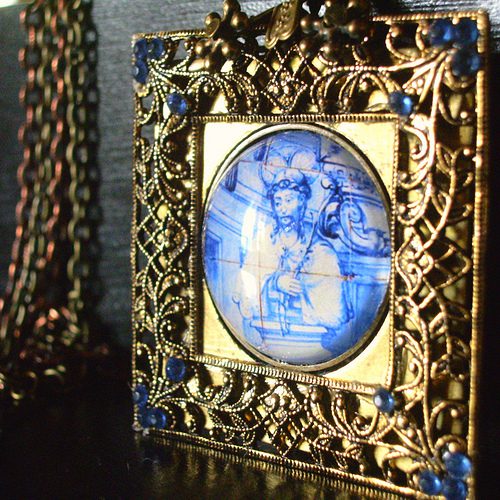
Now, thousands of Azorean people travel to São Miguel for Senhor Santo Cristo dos Milagres. They are locals living on the eight other islands but also immigrants who live in Canada, the United States, Brazil, and many other countries around the globe. This religious festival brings together locals and travelers. Emigrants who left the island also traveled back to their homeland to spend some time with their families.
When and Where is Santo Cristo dos Milagres Festival
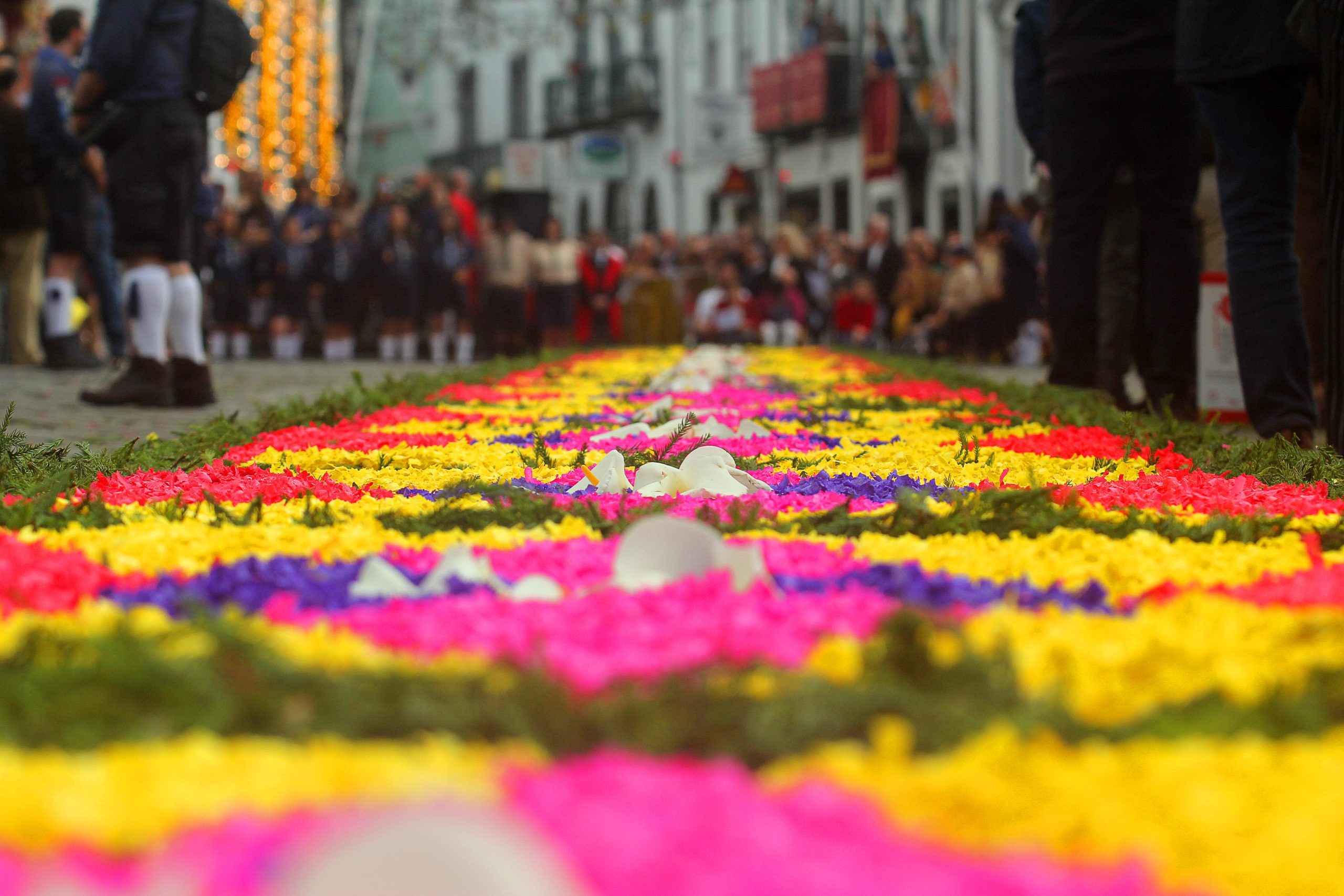
Festas do Senhor Santo Cristo are celebrated on the fifth Sunday after Easter (Whitsunday). This is when they do the big procession. However, the festivities last from Friday to the following Thursday (Ascension Day). The place where the magic happens is mostly São Francisco Square with the convent of Esperança in Ponta Delgada. This is where Ecce Homo departs, and the party begins.
→ Related article: Public Holidays in the Azores
How We Celebrate Santo Cristo dos Milagres
Everybody is preparing for this period, which is just as loved as Christmas. Locals decorate their houses with traditional white linens hanging on the windows. The floor of the city center is also covered with flowers, tree leaves, and colorful wood chips. Santo Cristo is much more than a religious event. There are many things to do during this time of year in the streets of the biggest Azorean city.
Religious Traditions

The religious part of this big festival includes masses, processions, and several other traditions. Santo Cristo brings thousands of pilgrims together to pay tribute to god. The statue’s name means Lord Holy Christ of the Miracles. In fact, the nuns thought it could help the population. Since its discovery, many people have asked for miracles or simple help with the bust, and some have been fulfilled.
Nowadays, people keep asking for help, and when requests are accomplished, believers pay back to the Lord. They can give flowers, candles, money, and so on. However, a very famous tradition is to honor the promises made on Saturdays during Santo Cristo. People do so by walking on their knees around São Francisco Square.
Some people even carry children on their backs when the miracle concerns their kids. An alternative is to walk barefoot. But everyone needs to carry a candle to offer to the church when the circle is complete. Regarding the procession, the statue goes from church to church. It begins at the door of the Sanctuary when the bells ring, and the rockets pop to announce Behold the Lord.
The figure, which weighs over 220 kg, will parade through Ponta Delgada, carried by several men. Wherever the statue goes, everyone looks at it, thankful and hopeful. It is a moment of pure emotion for believers. The procession lasts for more than five hours. People pass by the main streets of the city center to go to many convents and churches. For instance, Nossa Senhora da Graça, Santo André, and Nossa Senhora da Conceição are some of them.
In addition to locals and travelers joining the march, there is the President of the Azorean Regional Government, the Representative of the Republic, the military, city councils, firefighters, and also an orchestra. At the end of the walk, the statue stays inside the sanctuary for people to pay a last tribute.
Popular Festivities

This is an event that everyone should experience, even if you are not religious. In addition to the cult, the festival part is worth experiencing! There are many activities to enjoy in the streets, like the inauguration of the fantastic lights at the public square, live music, many food trucks to taste traditional Azorean food, and even an amusement park! It is a very festive time of year to visit the Azores. Both adults and children very much enjoy Santo Cristo’s festival, mostly at night.
Pro Tips
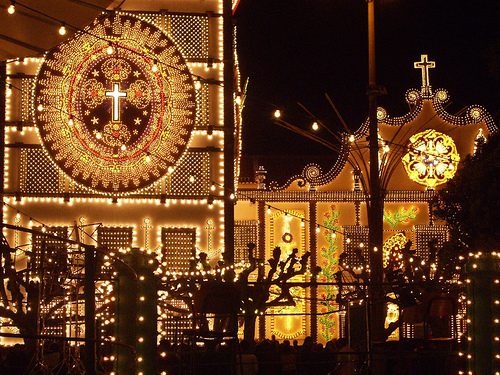
- As previously mentioned, even if you are not religious, this is an excellent opportunity to mingle with locals and enjoy a big party in the streets of Ponta Delgada.
- As it is a season when many people come to the island, it can be wise to book your hotel in advance to make sure there are still accommodations. The same goes for plane tickets to secure the best prices for flights to the Azores.
- If you want to follow the event but cannot go, there is a live transmission on RTP. The government of the Azores website also streams it online so you can see the procession from afar.
Complementary Information
Best Season to Visit the Azores
The Azores Archipelago boasts a unique climate that shapes its lush landscapes, making it a splendid year-round destination. With mild temperatures and minimal fluctuations, each season offers something unique. Spring averages 16 °C, summer reaches 21 °C, autumn cools to 18 °C, and winter remains mild at 14 °C.
→ For a detailed breakdown of the weather by month, check the following links 🌤️☔️: January | February | March | April | May | June | July | August | September | October | November | December
How to Get to the Azores
The Azorean Archipelago is easily accessible through numerous flight routes. Lisbon and Porto are the main entry points to the continent, with direct flights available to São Miguel (PDL), Terceira (TER), Faial (HOR), Pico (PIX), and Santa Maria (SMA). To find the best flight, use search engines like eDreams or Skyscanner. These platforms let you compare prices and schedules from multiple airlines in one convenient location.
For more details on how to get to the Azores, take a look at our complete guide. But what if you want to explore beyond your arrival island? We’ve got you covered!
- Azores airports 🛬
- Flights between islands ✈️
- Ferries between islands ⛴️
- Which island to choose? 🏝️
- What airlines fly to the Azores? 🛩️
→ Once you’ve found the perfect route, book your tickets and get ready to experience one of the world’s most stunning island groups!
Travel Essentials
Essential Information for your Azores trip: Azorean Language & Phrases 🗣️ | Currency & Banks 💵 | Credit Cards & Traveler’s Cheques 🏧 | Driving in the Azores 🚗 | Electricity 🔌 | Experiences & Tours 🗺️ | Health & Safety 🩺 | Internet & Wi-Fi Access 🛜 | Phones & Mobile Service 📞 | Post Offices & Buying Stamps ✉️ | Public Holidays 🏖️ | Shopping 🛒 | Time & Daylight 🕒 | Whale Watching Guide 🐳 | Best Island to Visit 🏞️
Useful Tools & Apps
The weather in the Azores can be variable, so it’s helpful to use some apps before visiting the islands. Spotazores provides live camera feeds from the main tourist attractions, allowing you to check the weather and plan your visit. For accurate weather predictions, use Windy or Windguru — they provide the most reliable predictions.
Video
Conclusion
The importance of Santo Cristo in the Azores is undeniable. It has a significant impact on the island through the flow of travelers coming to São Miguel. Moreover, it is a great time to visit the island to experience the local culture. Keep in mind that this manifestation of faith is more than 320 years old. It is beautiful to see that traditions continue and that people love them. So, now that you know everything about Santo Cristo, come celebrate with us this year in Ponta Delgada!






